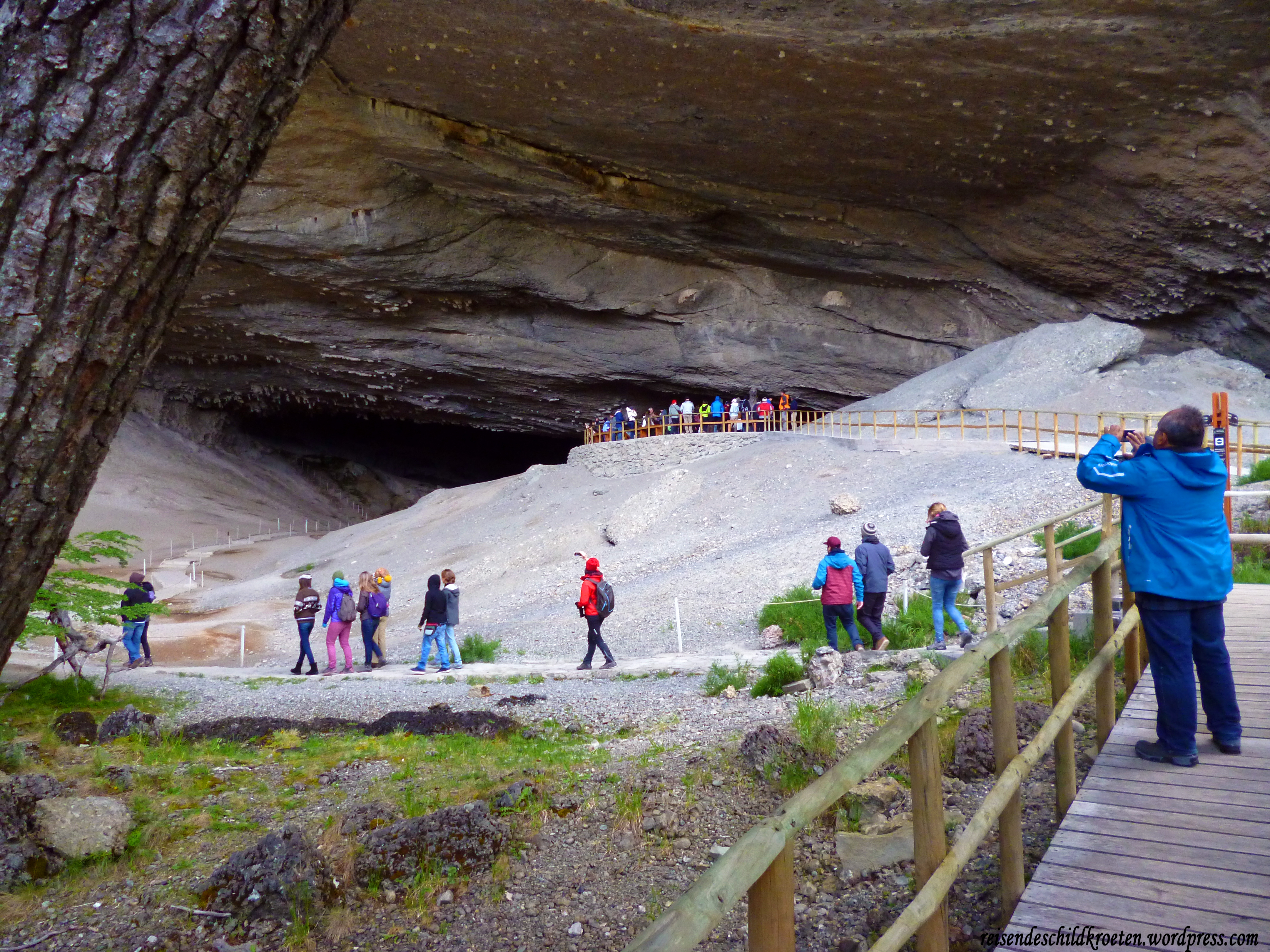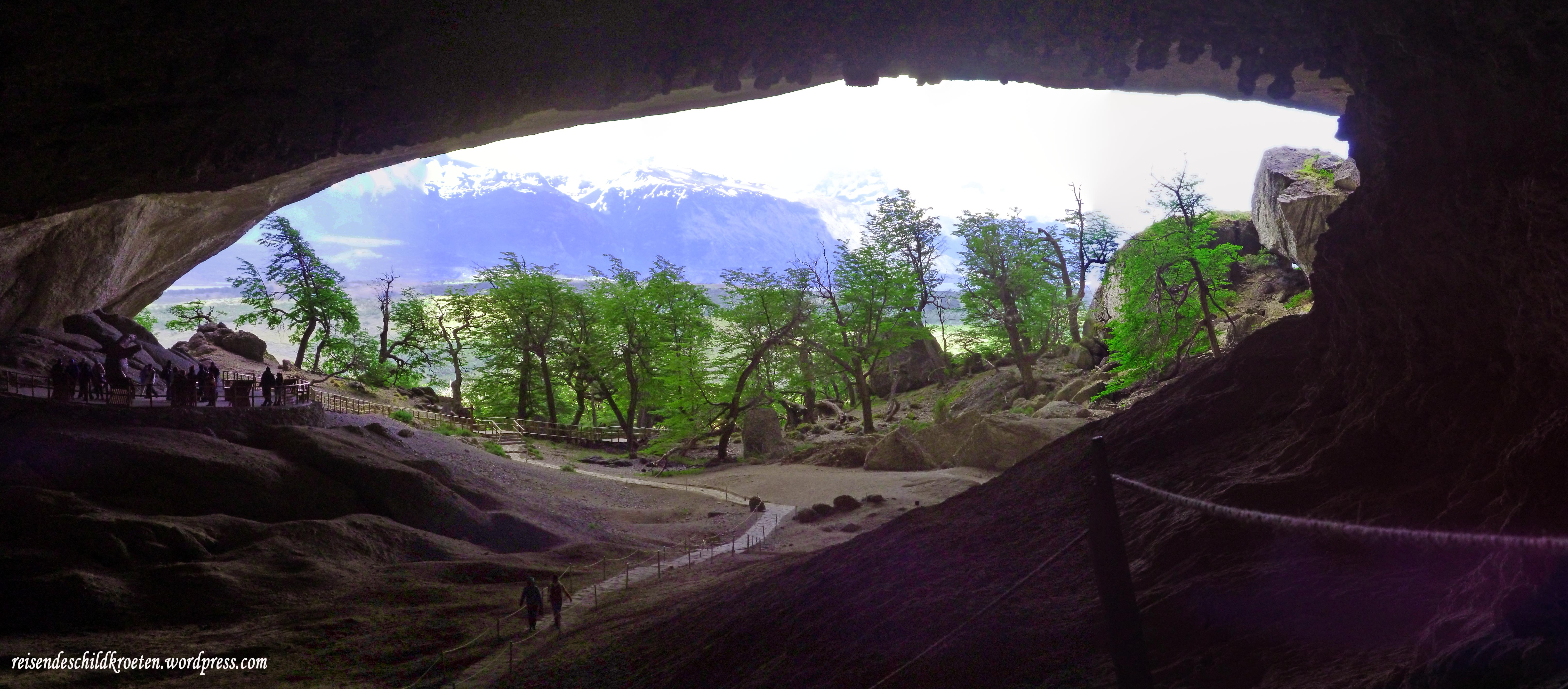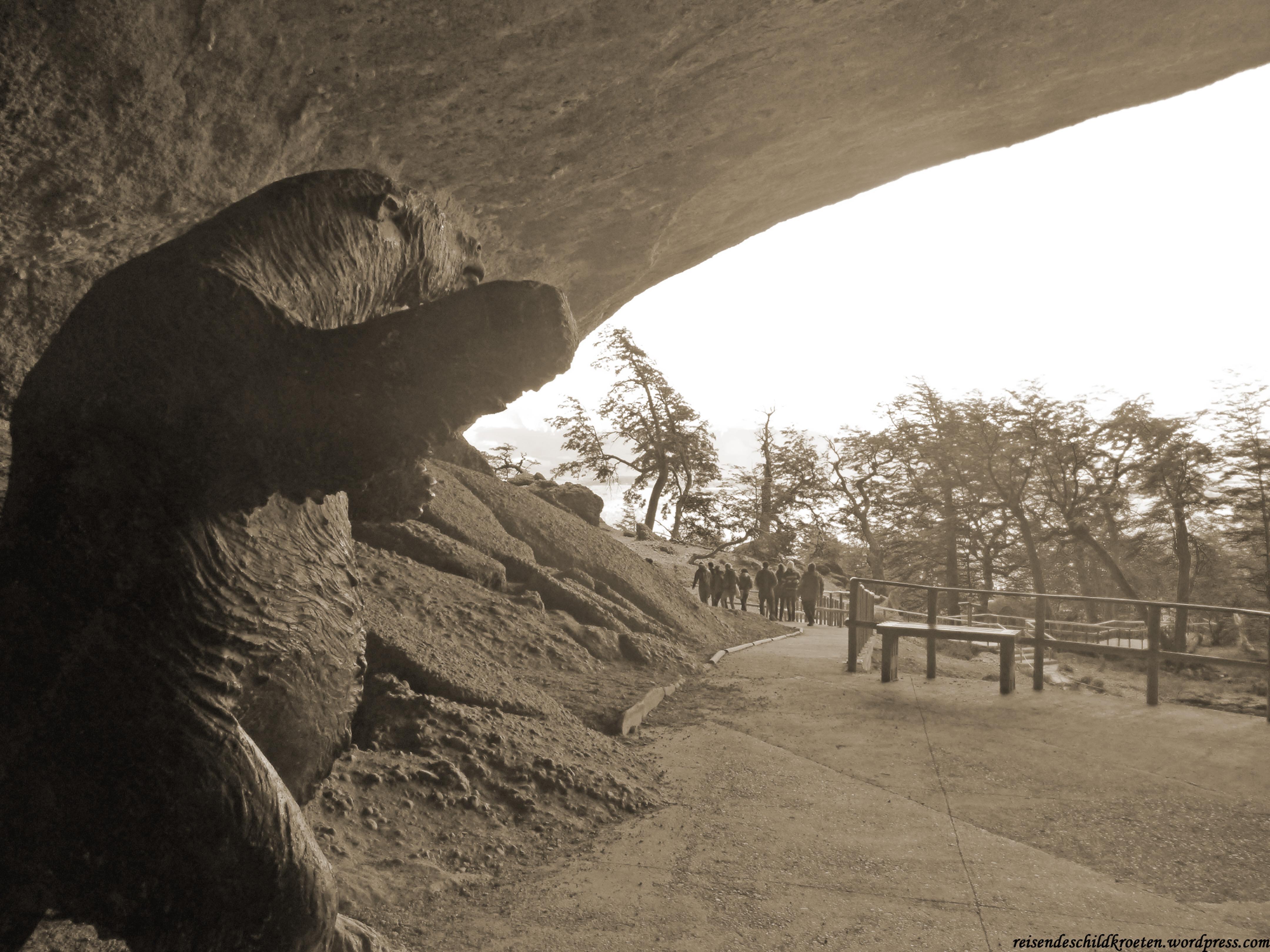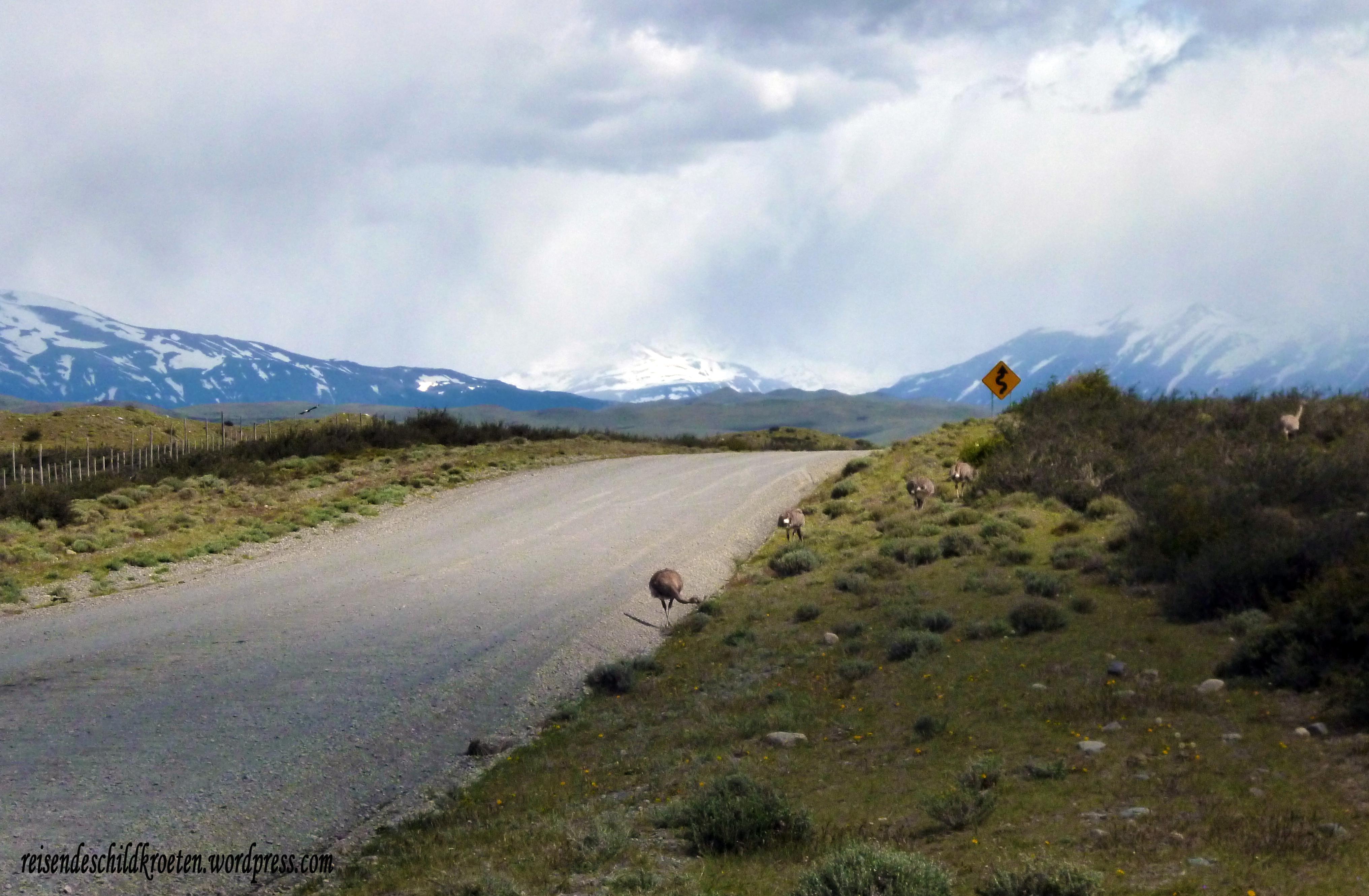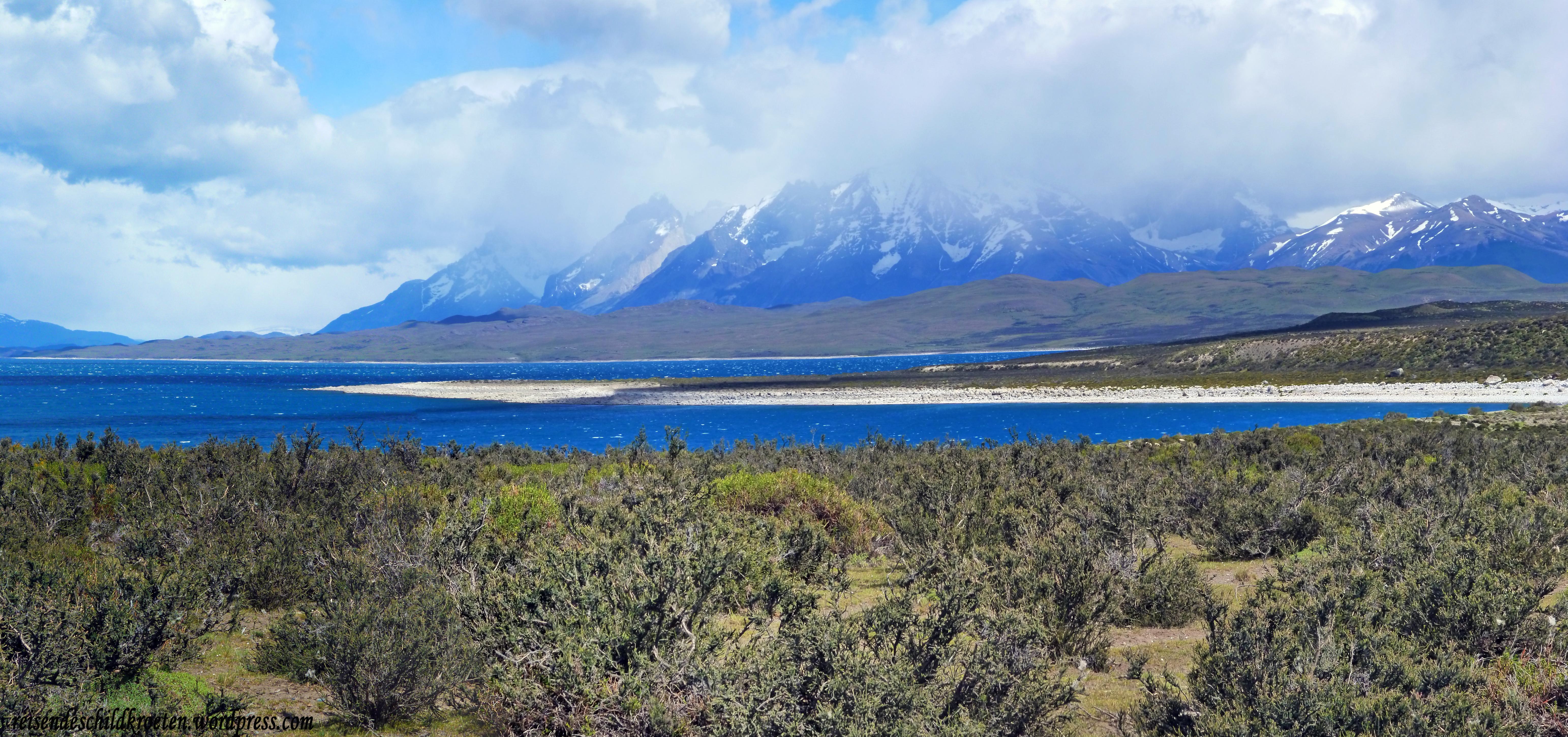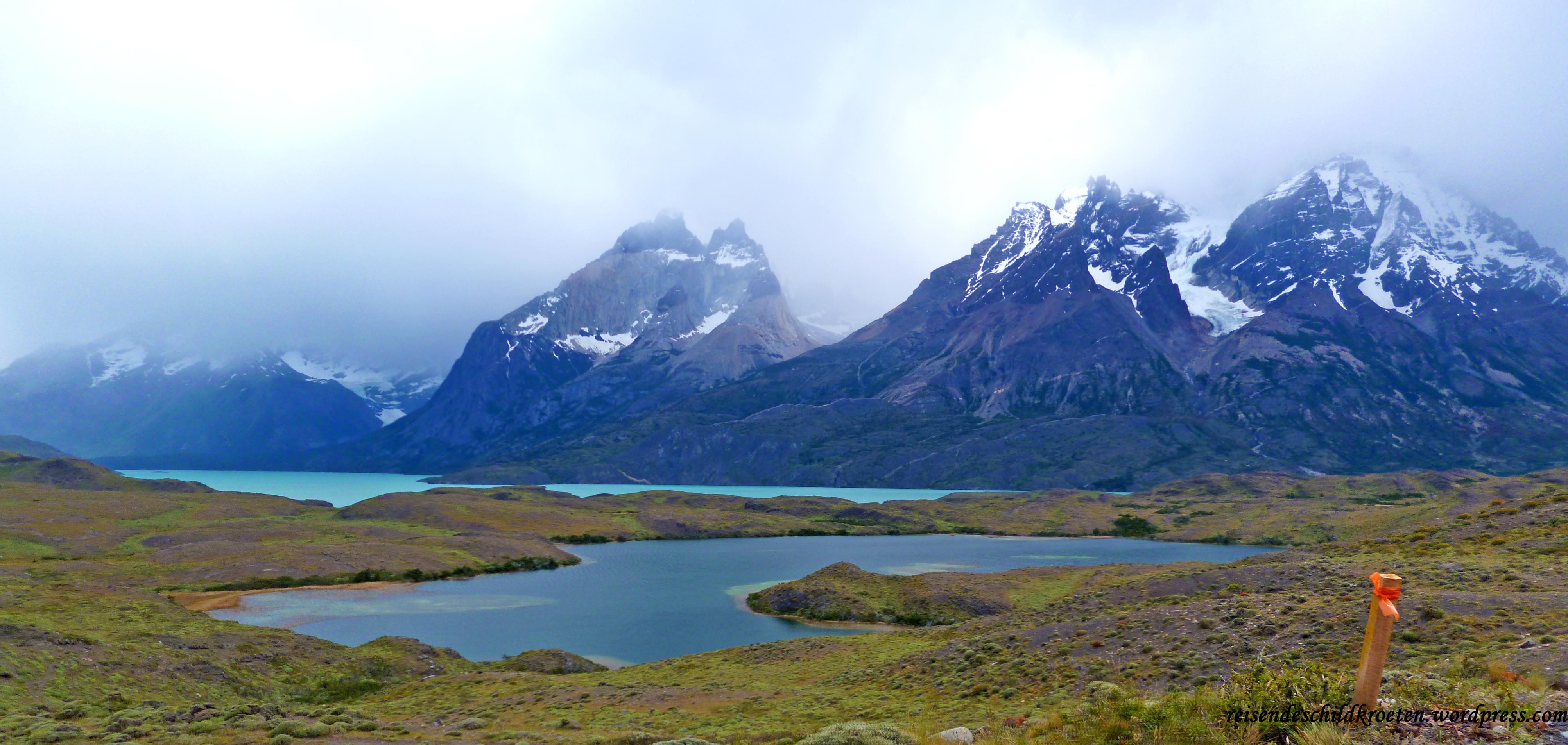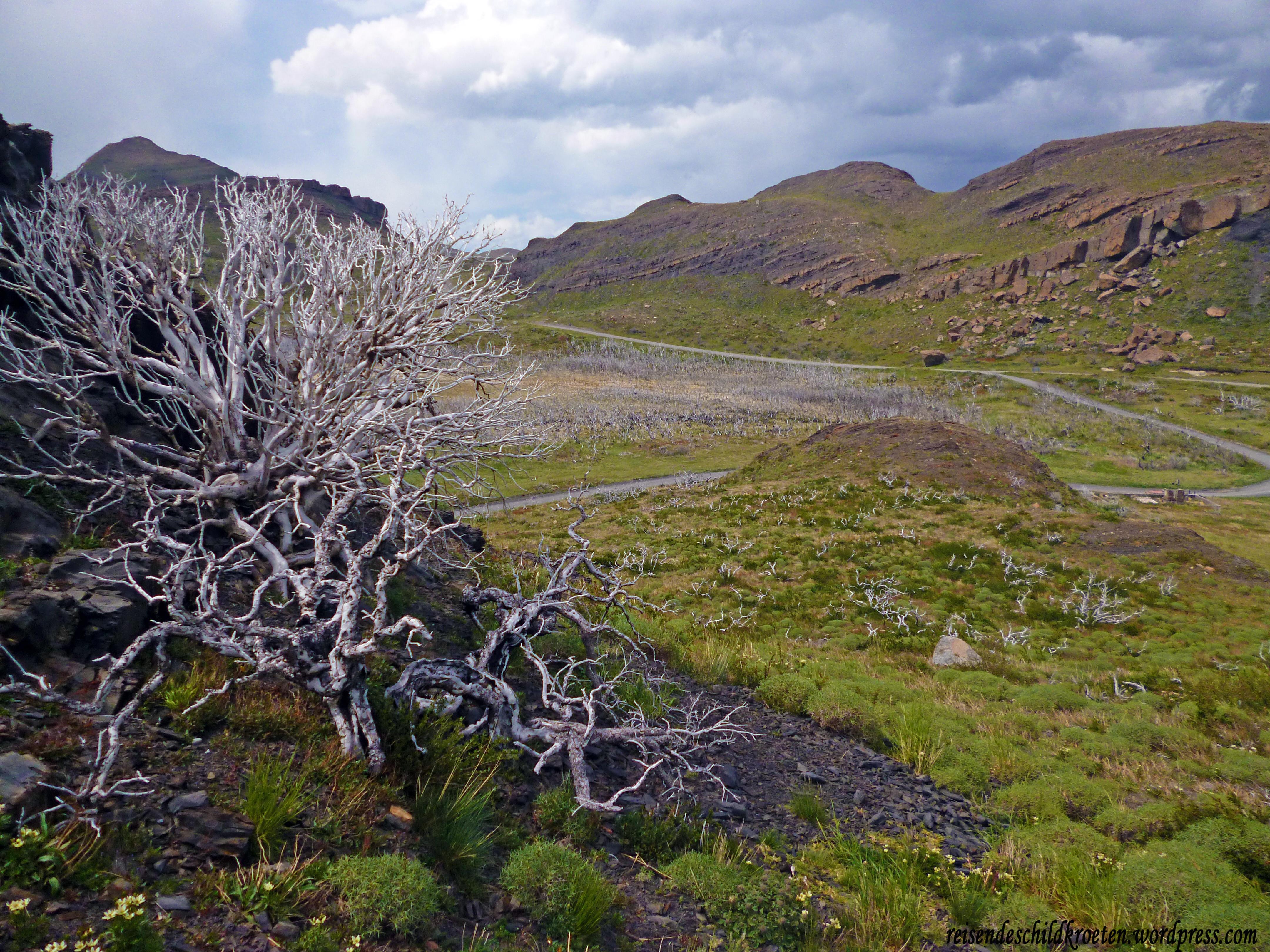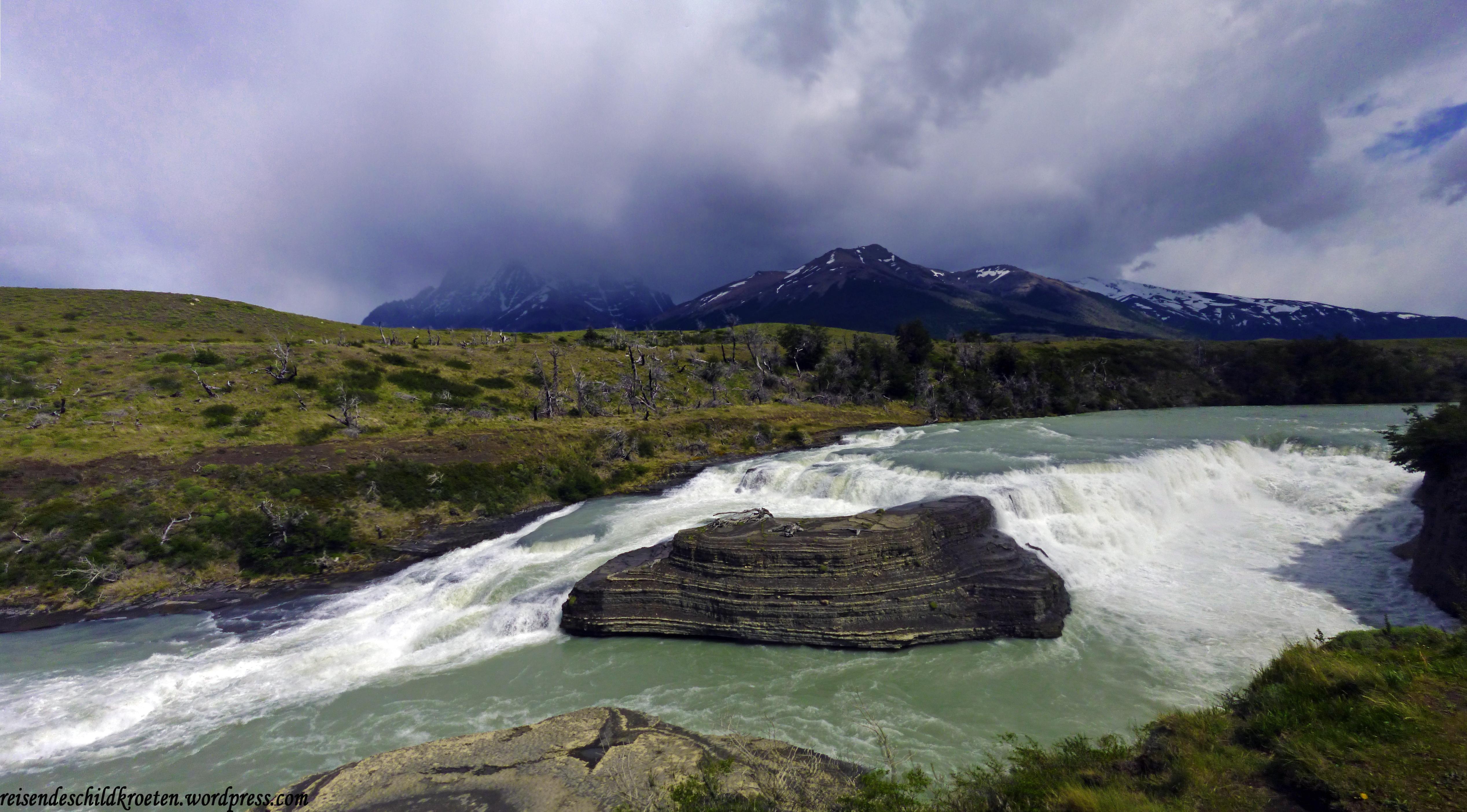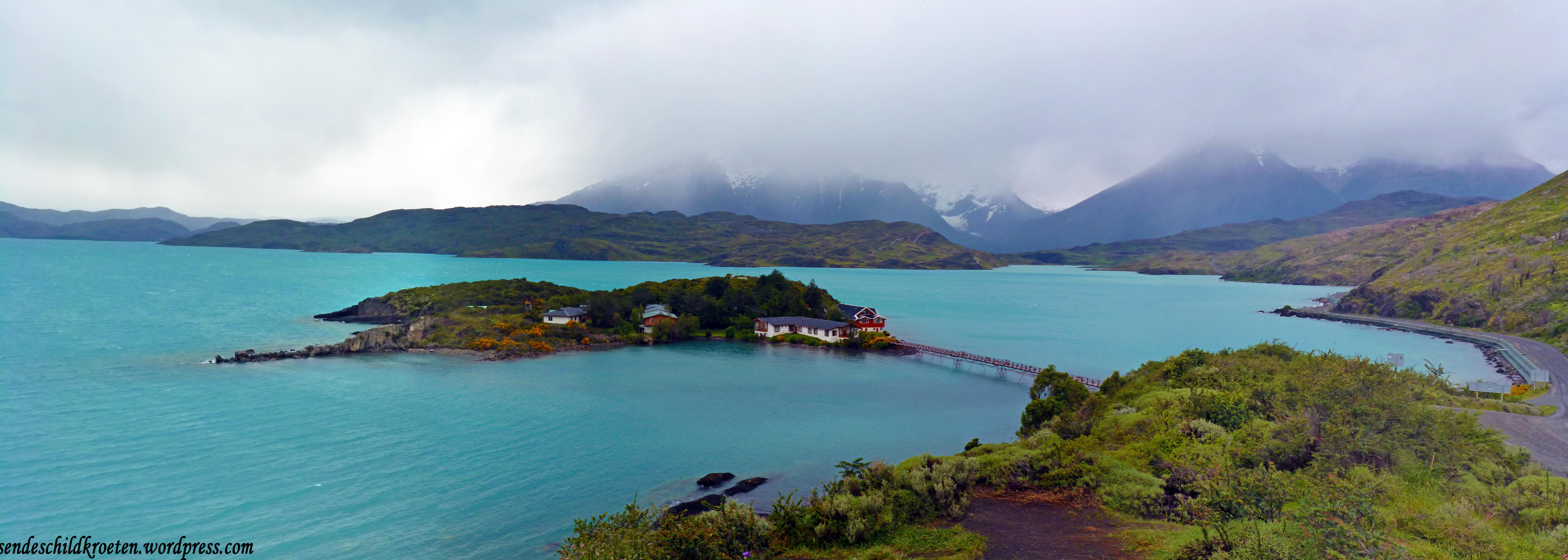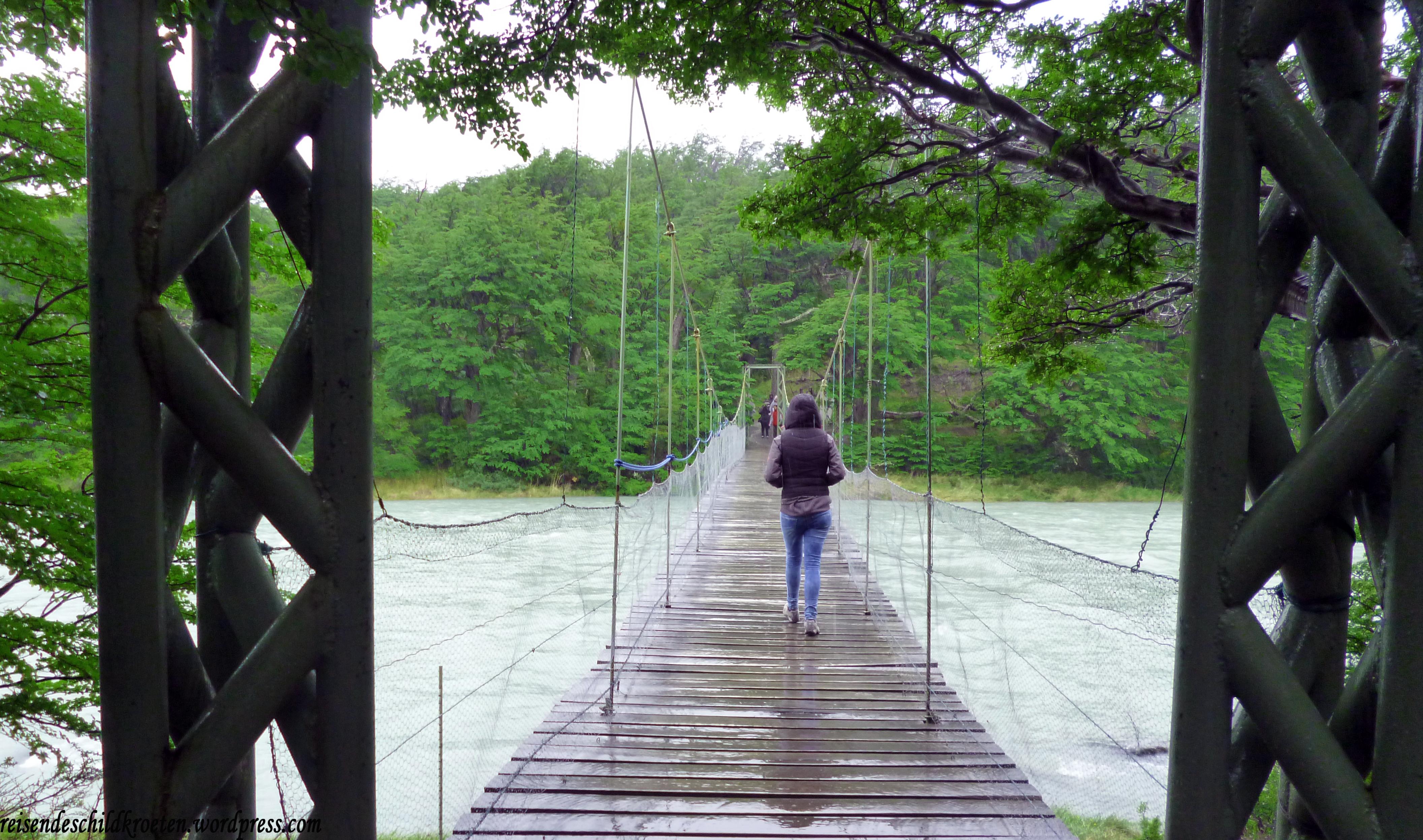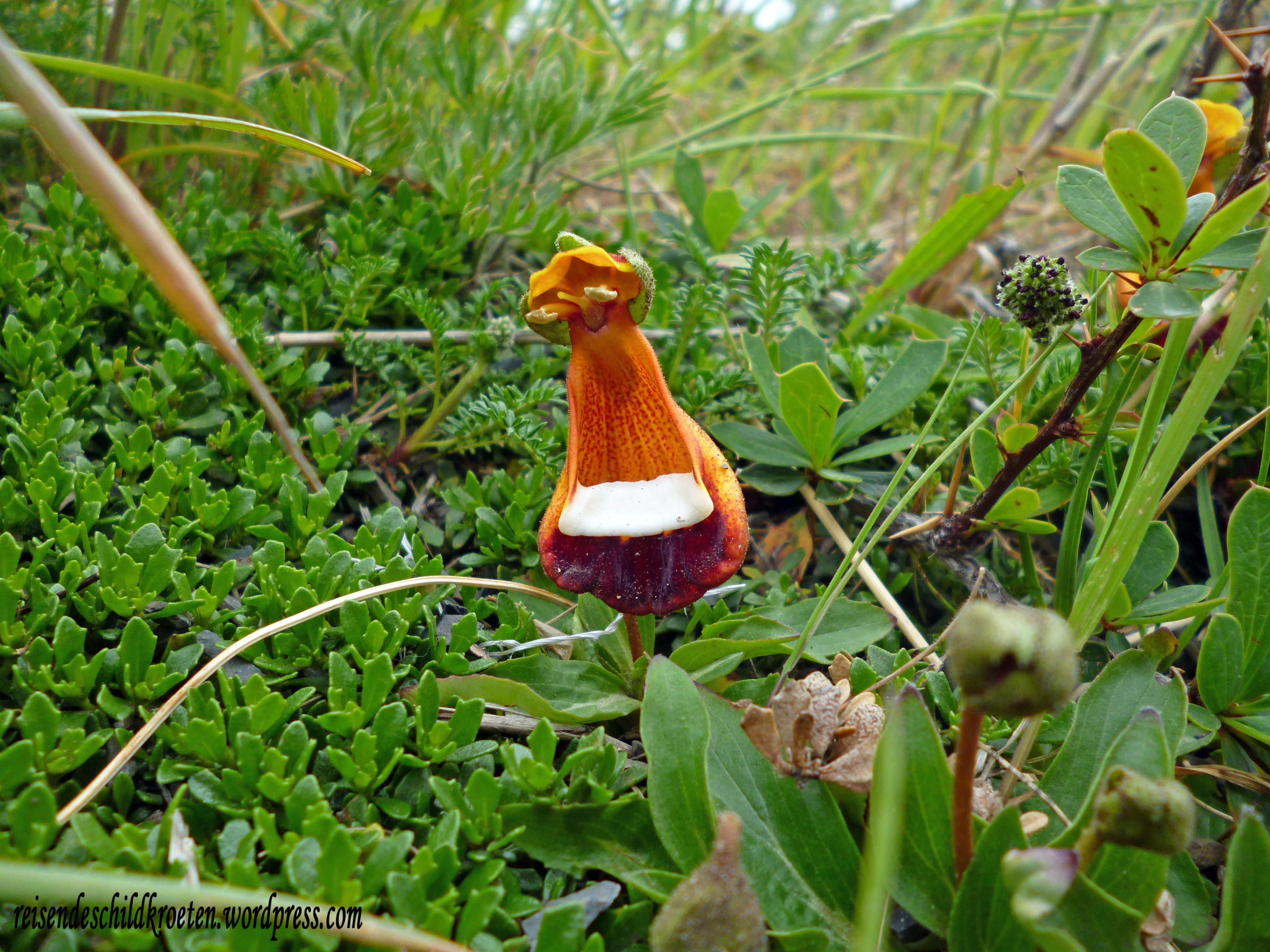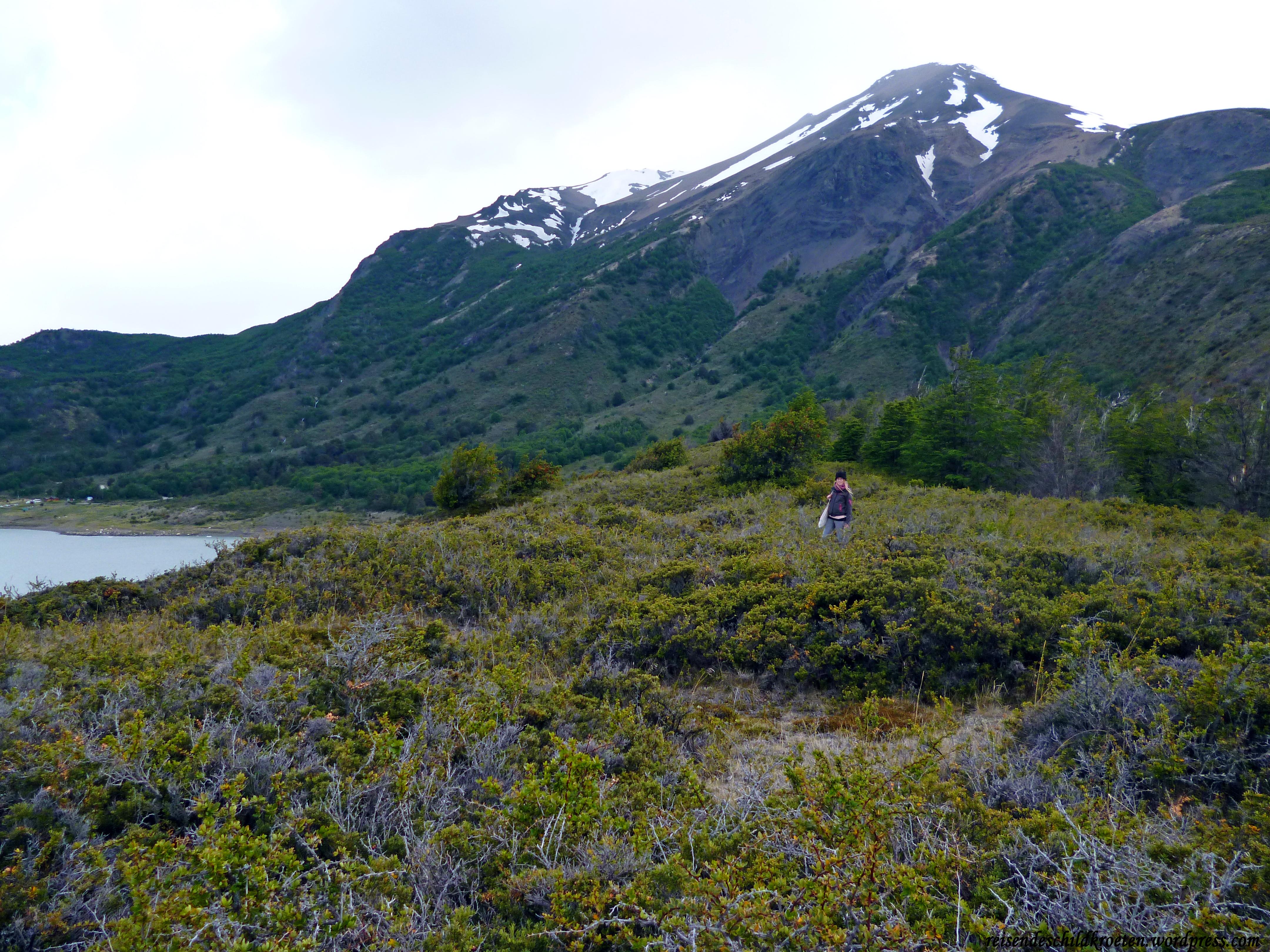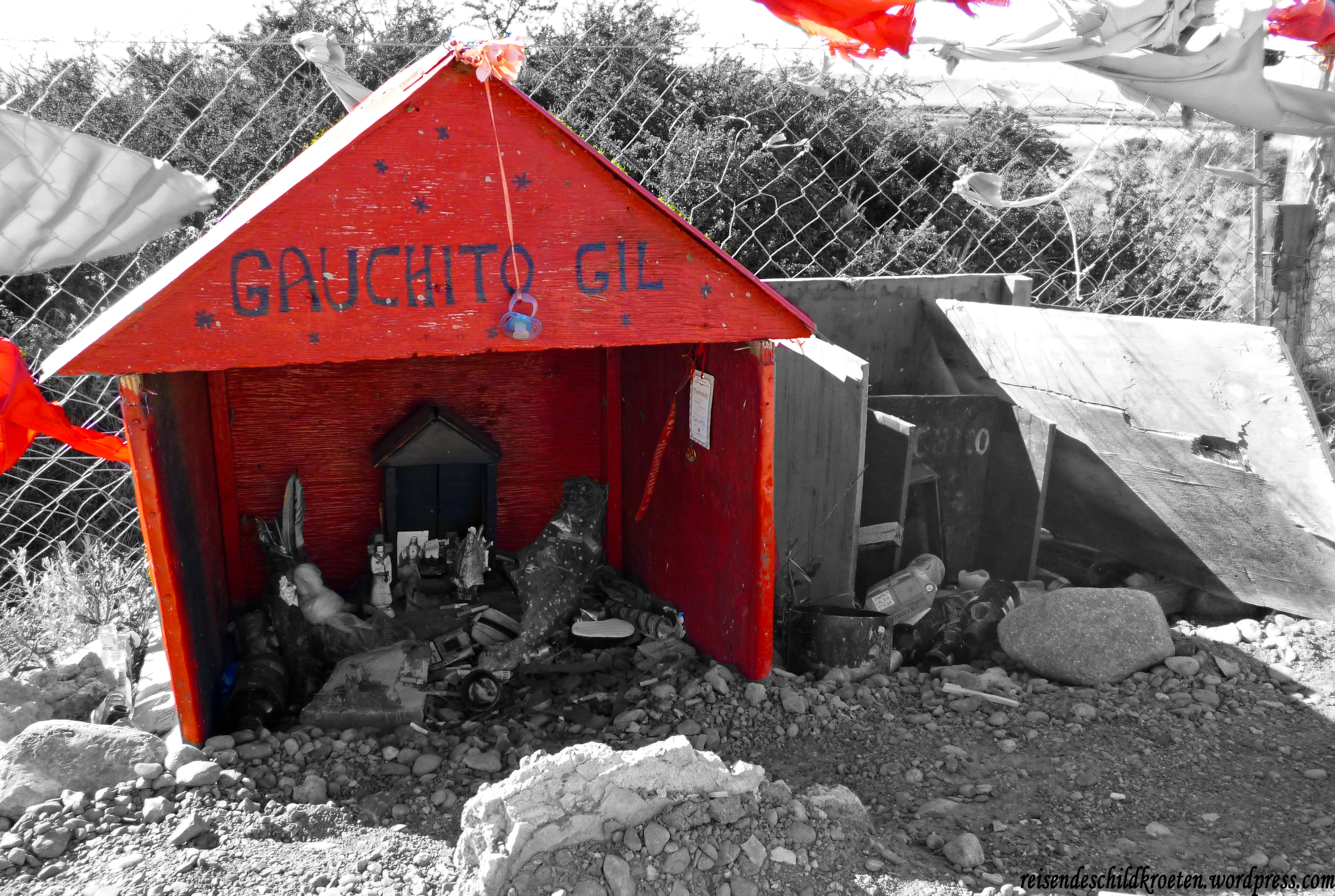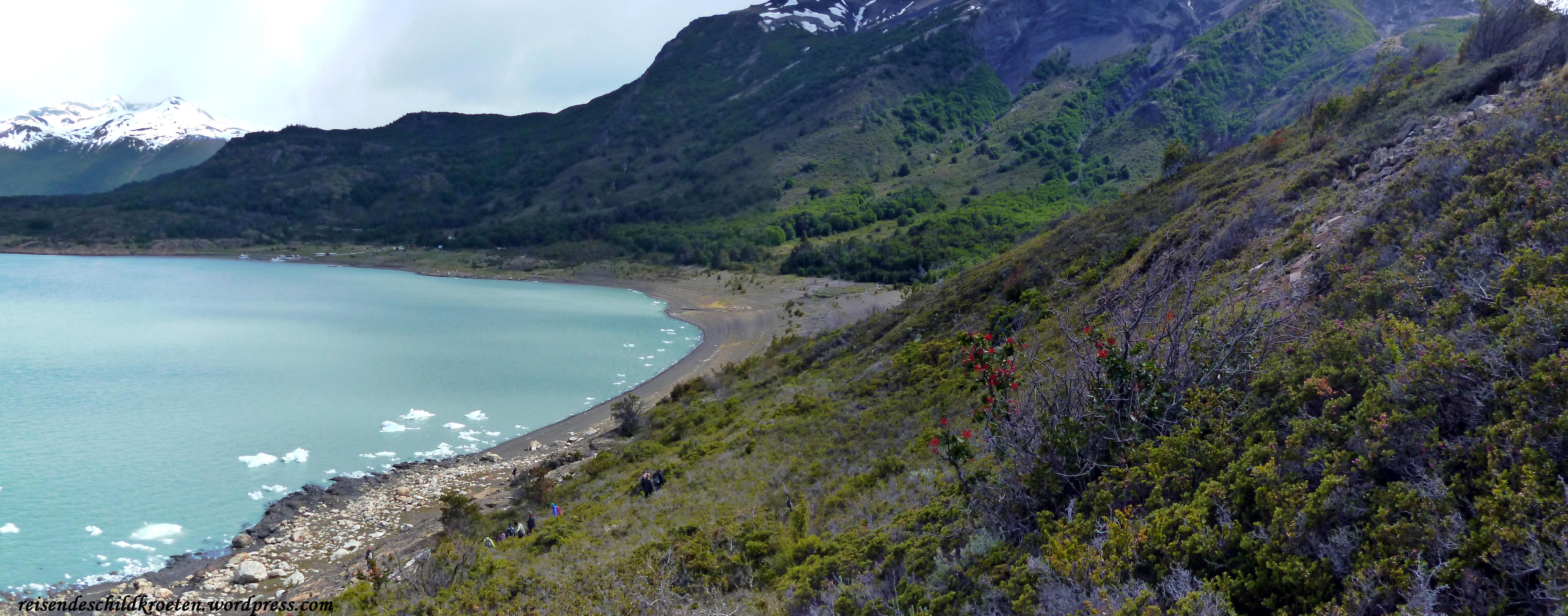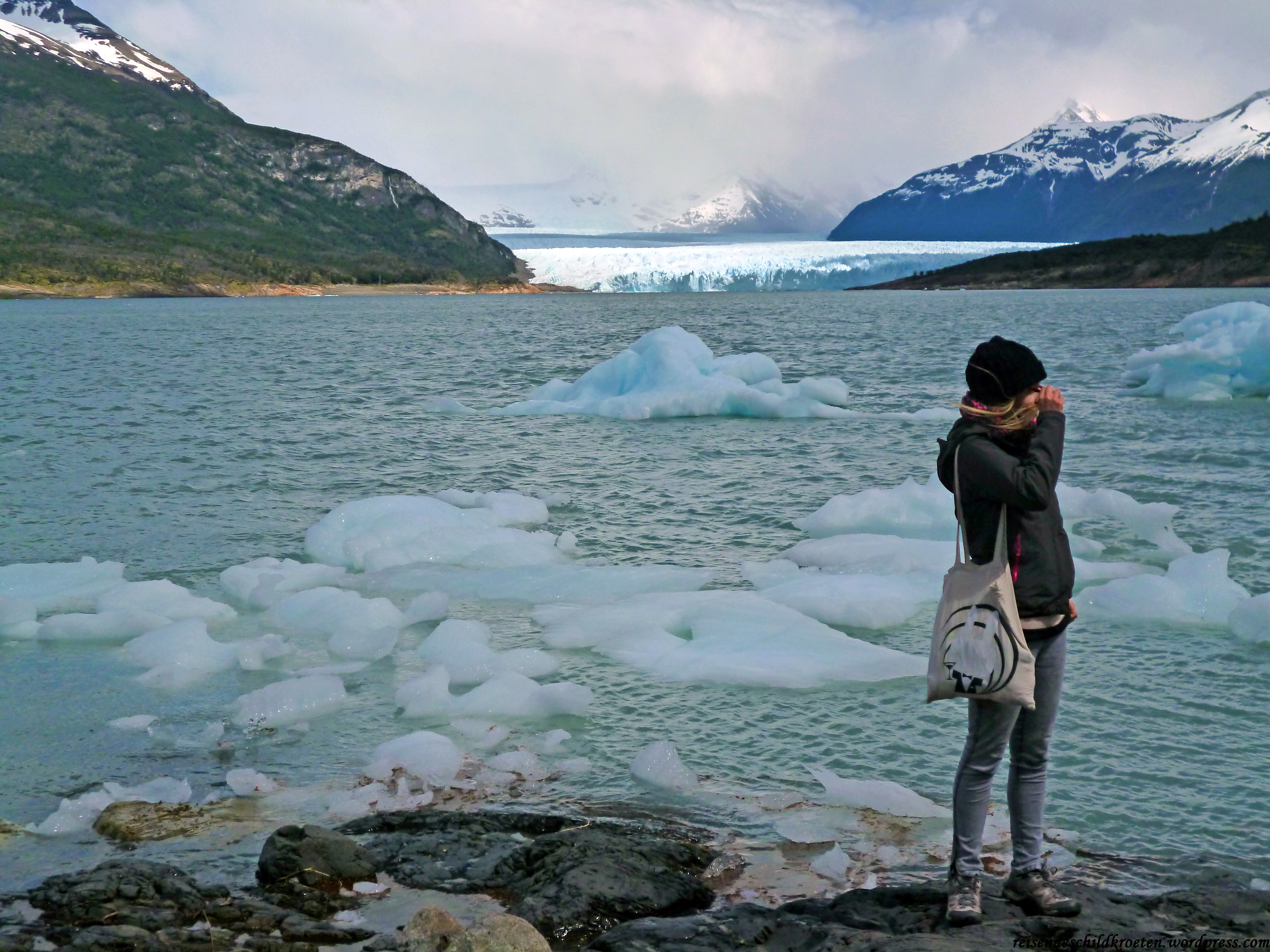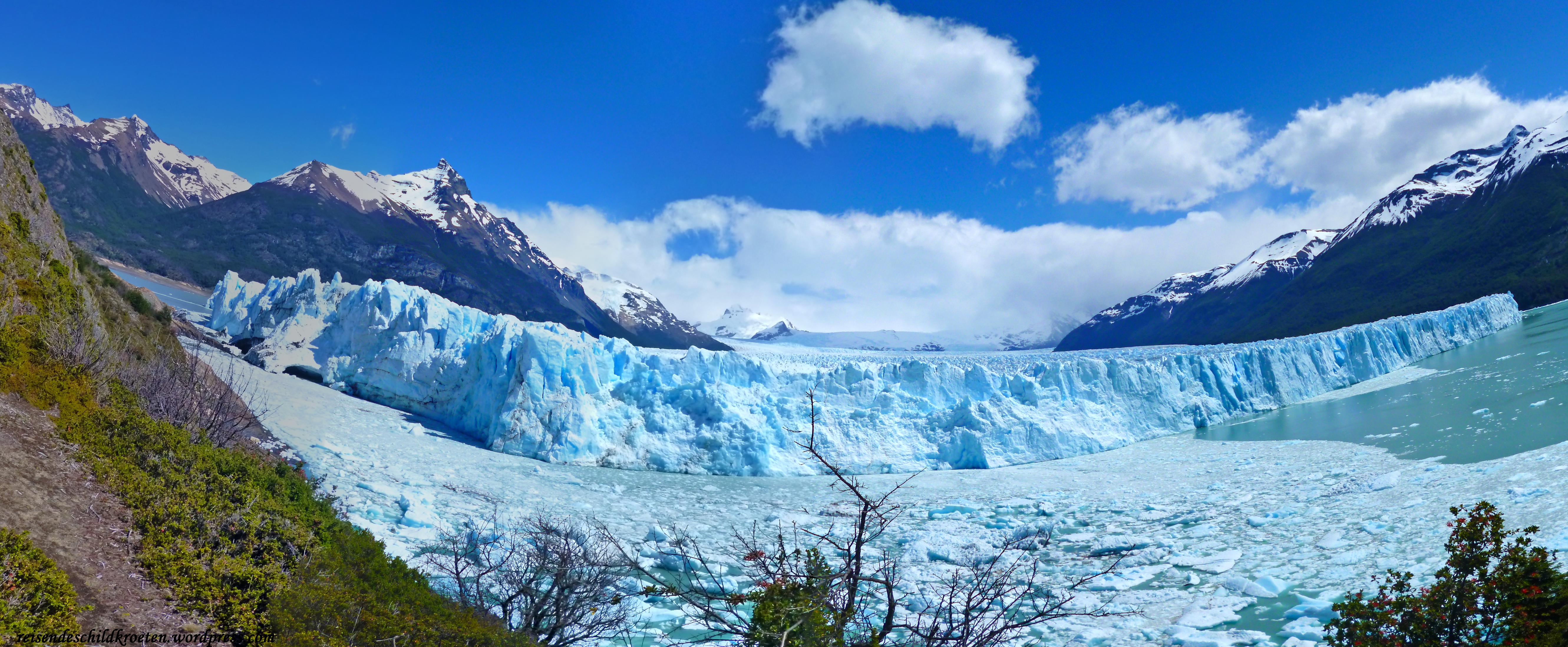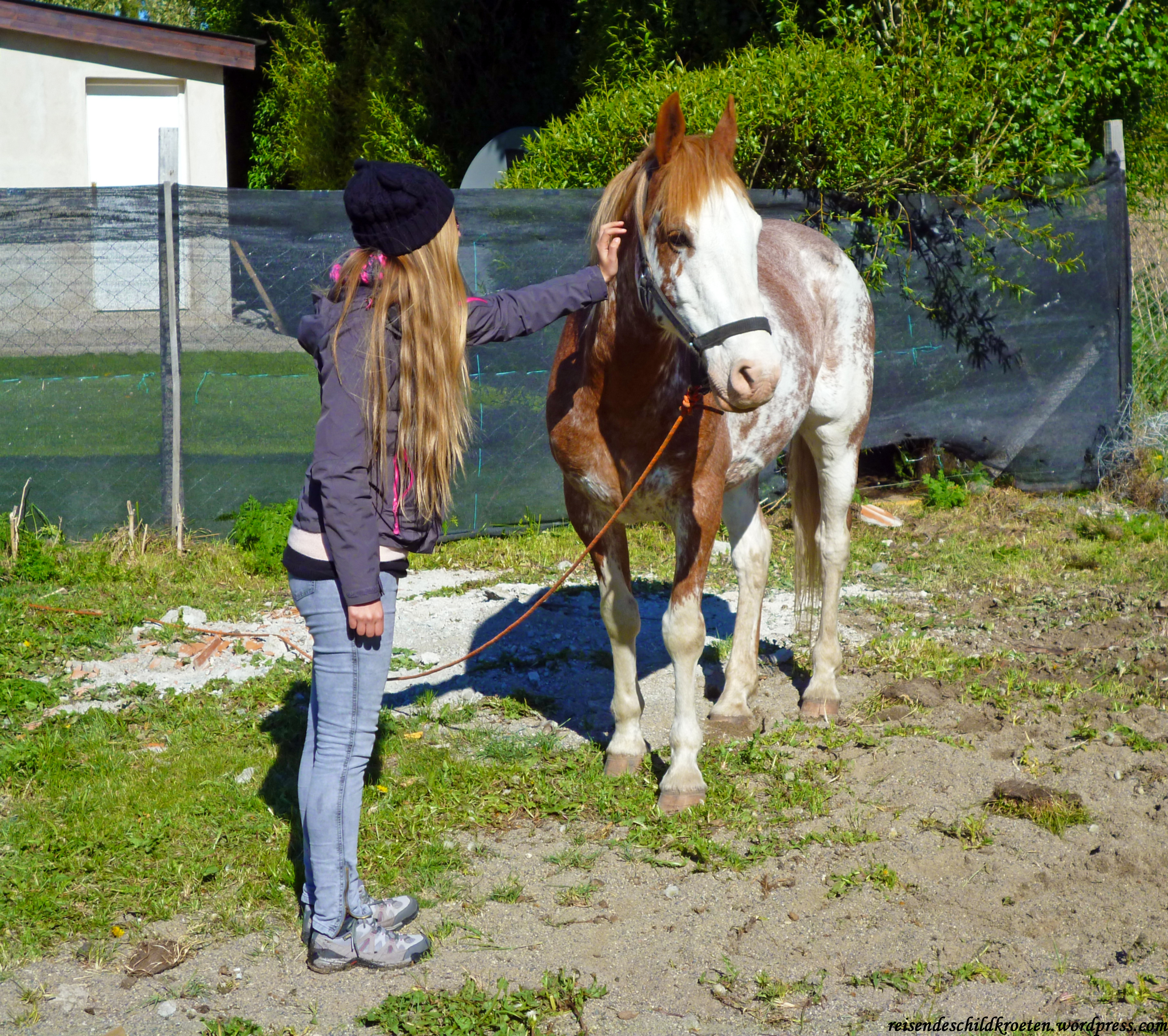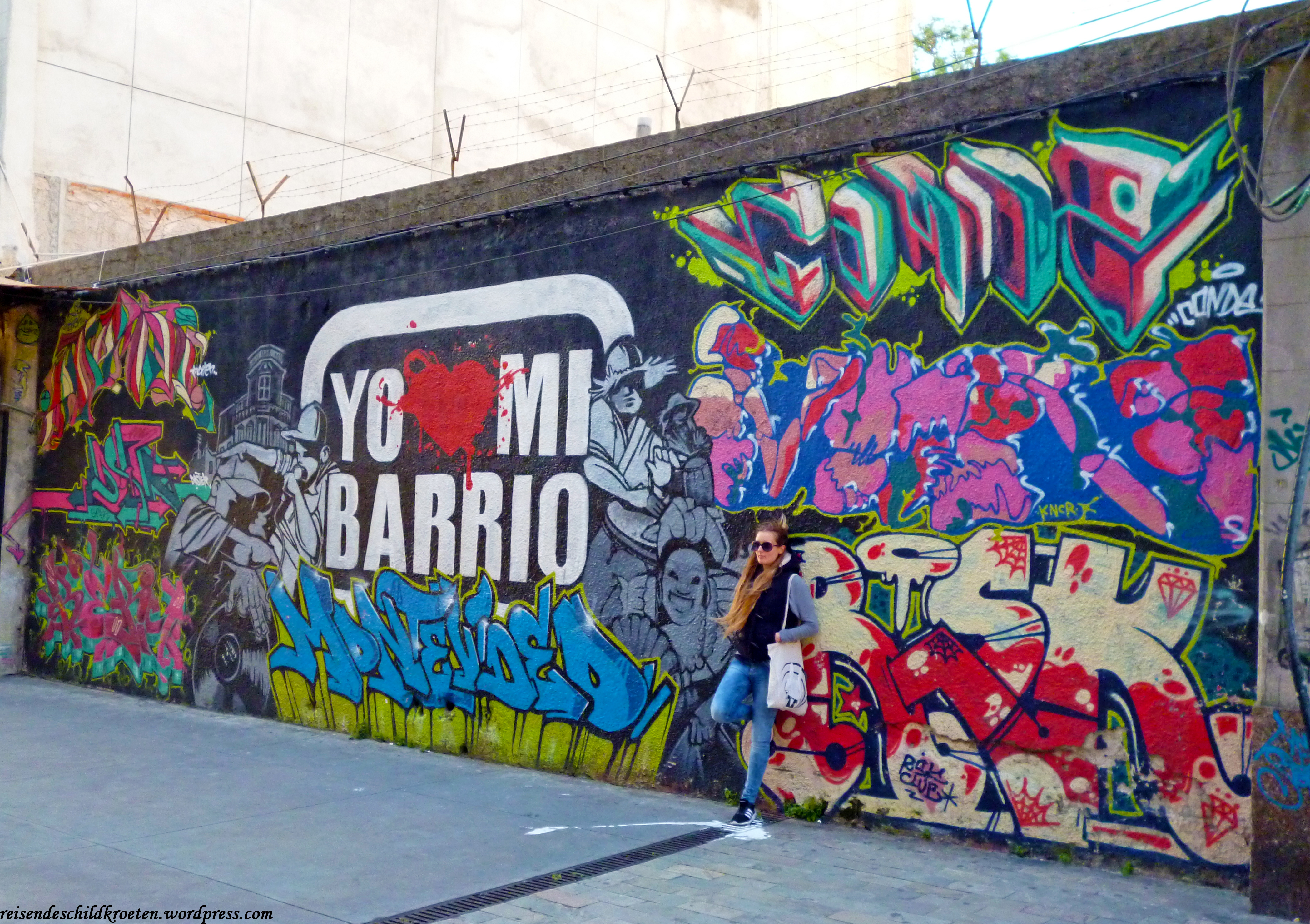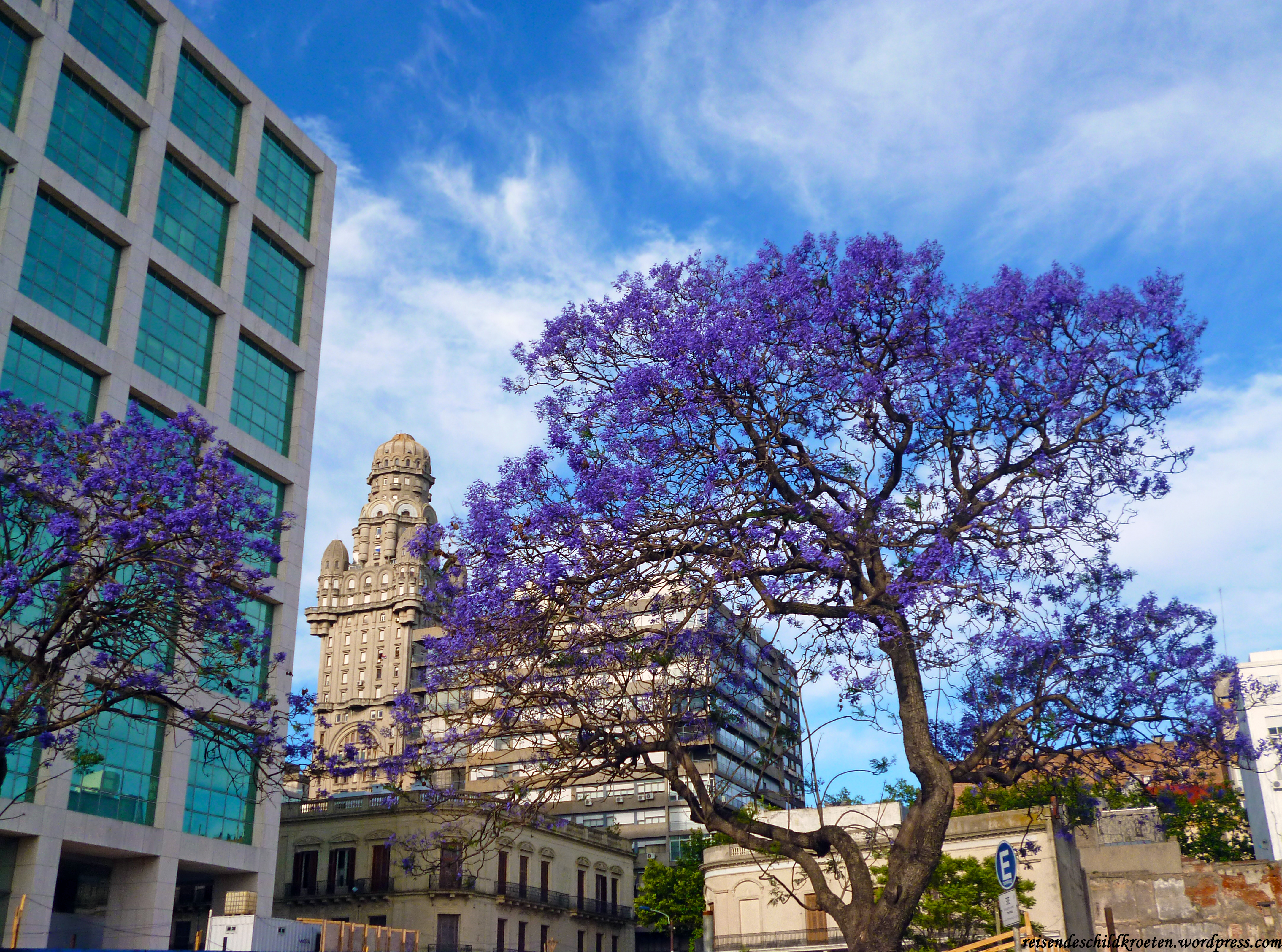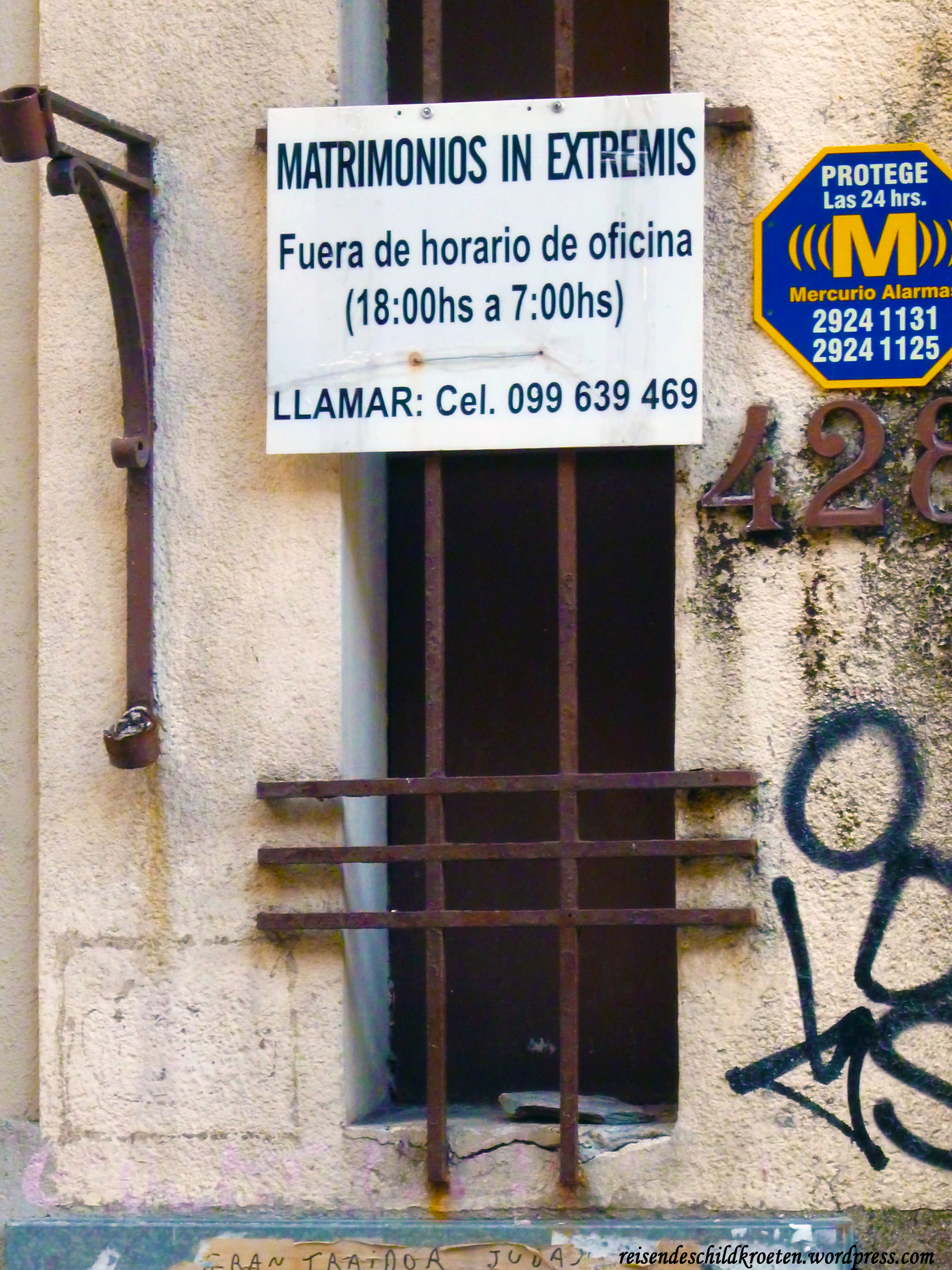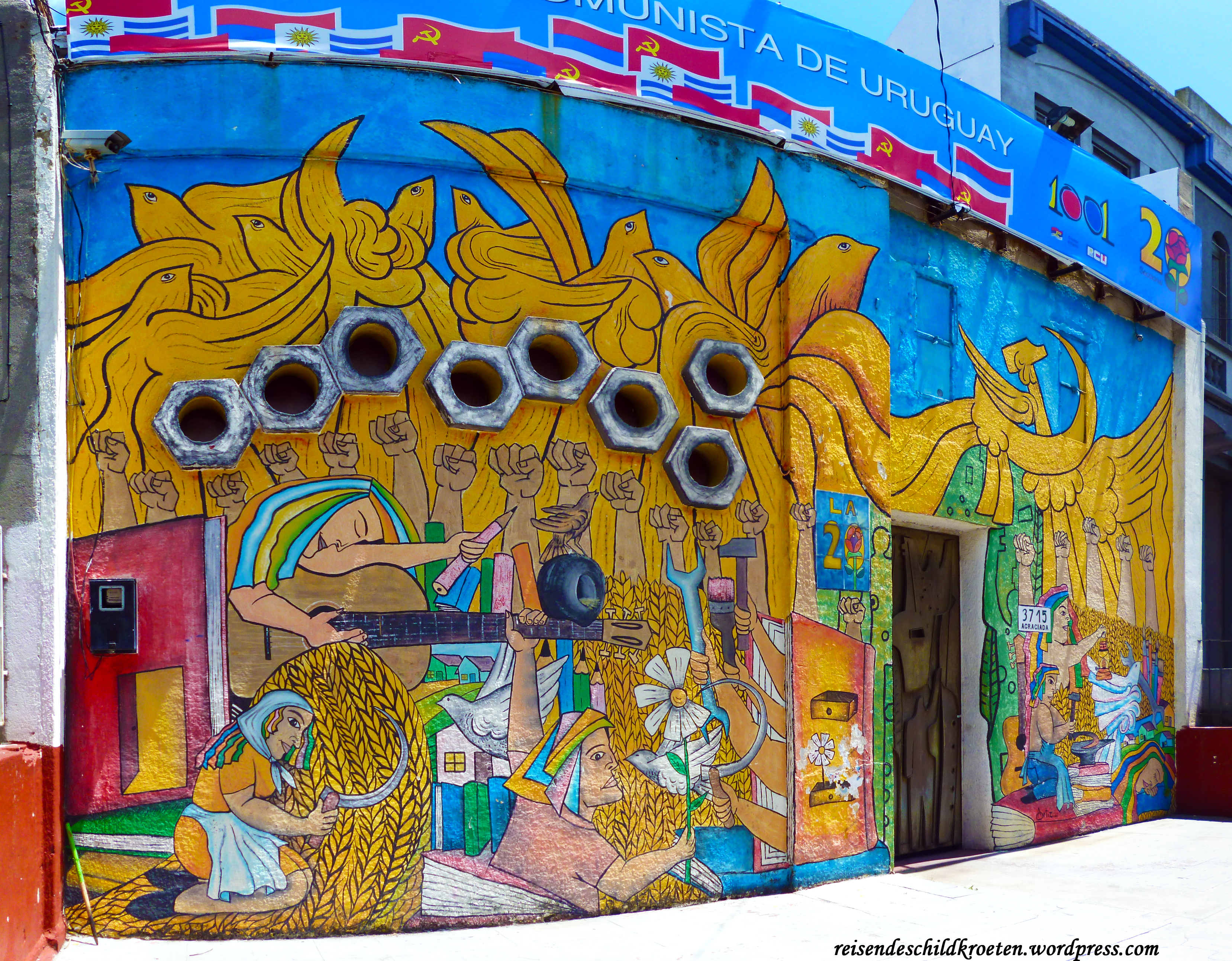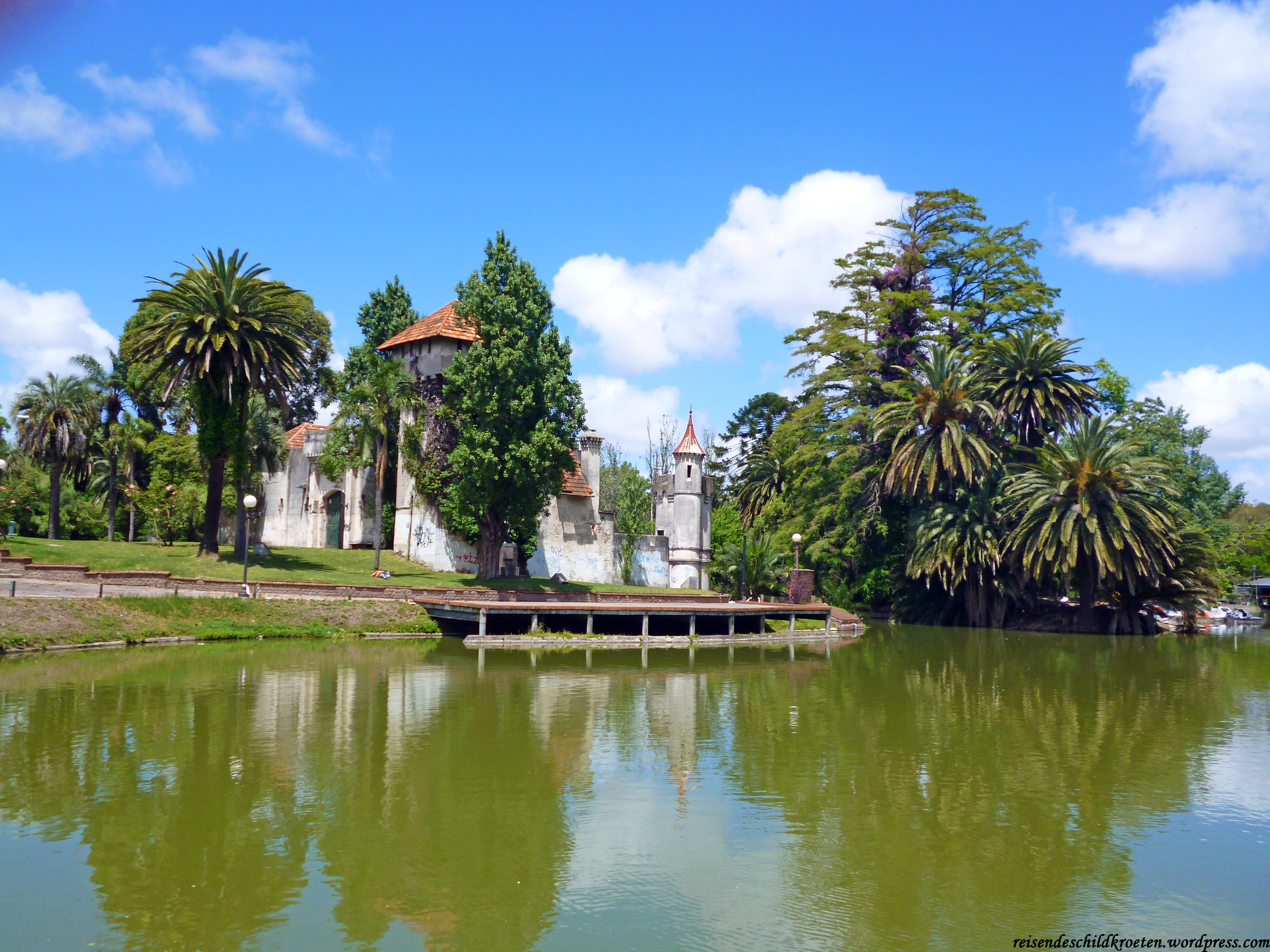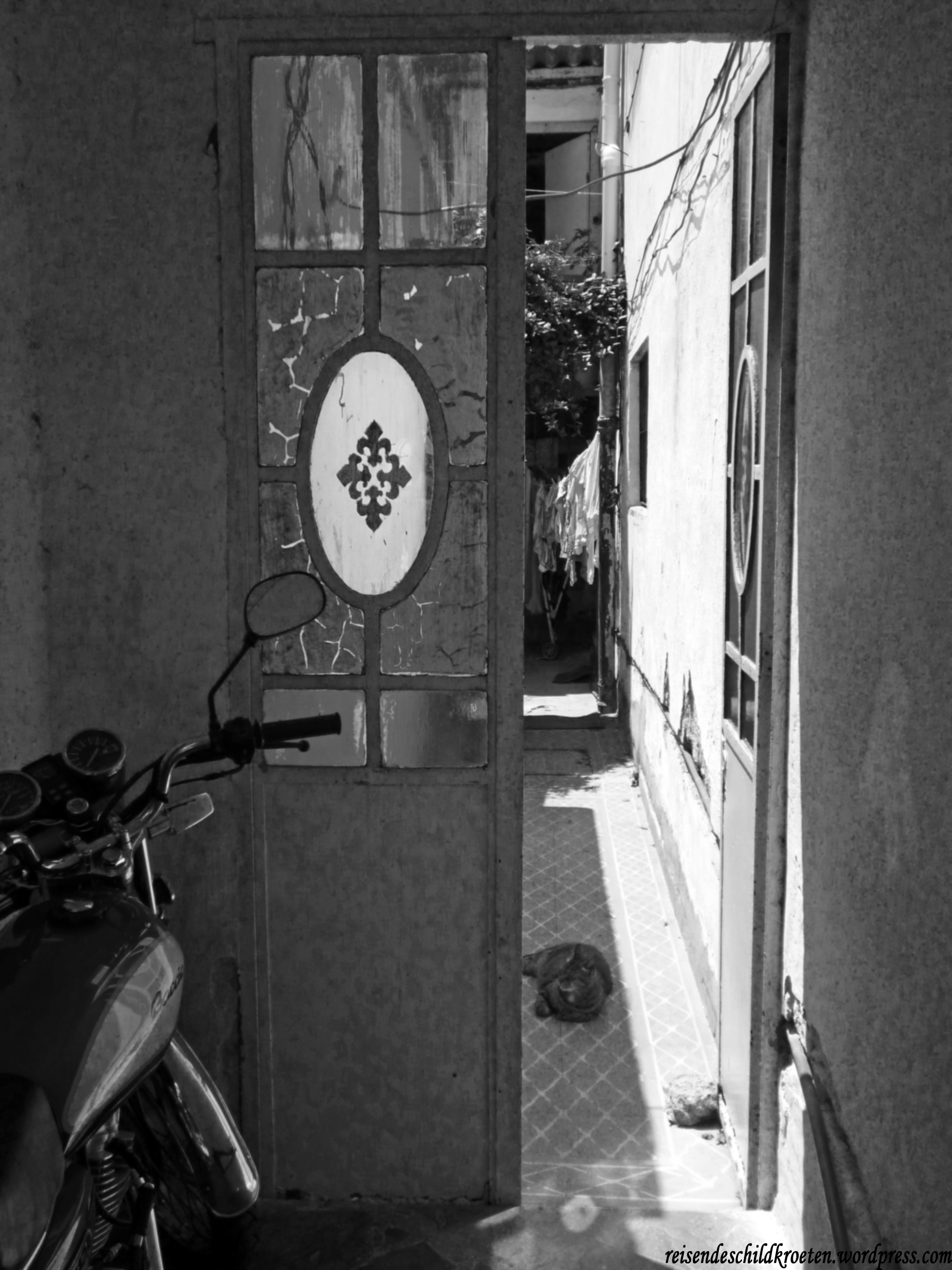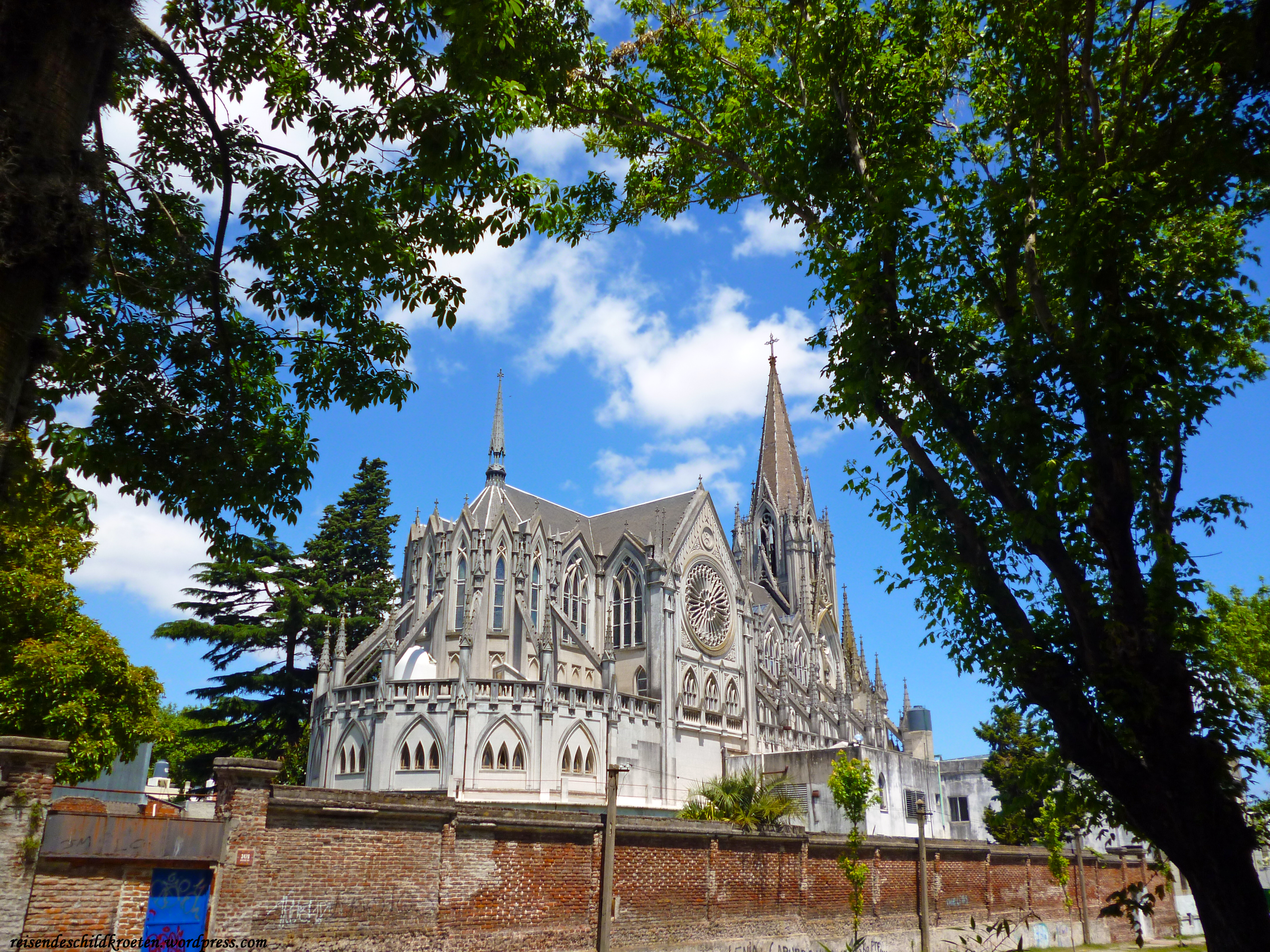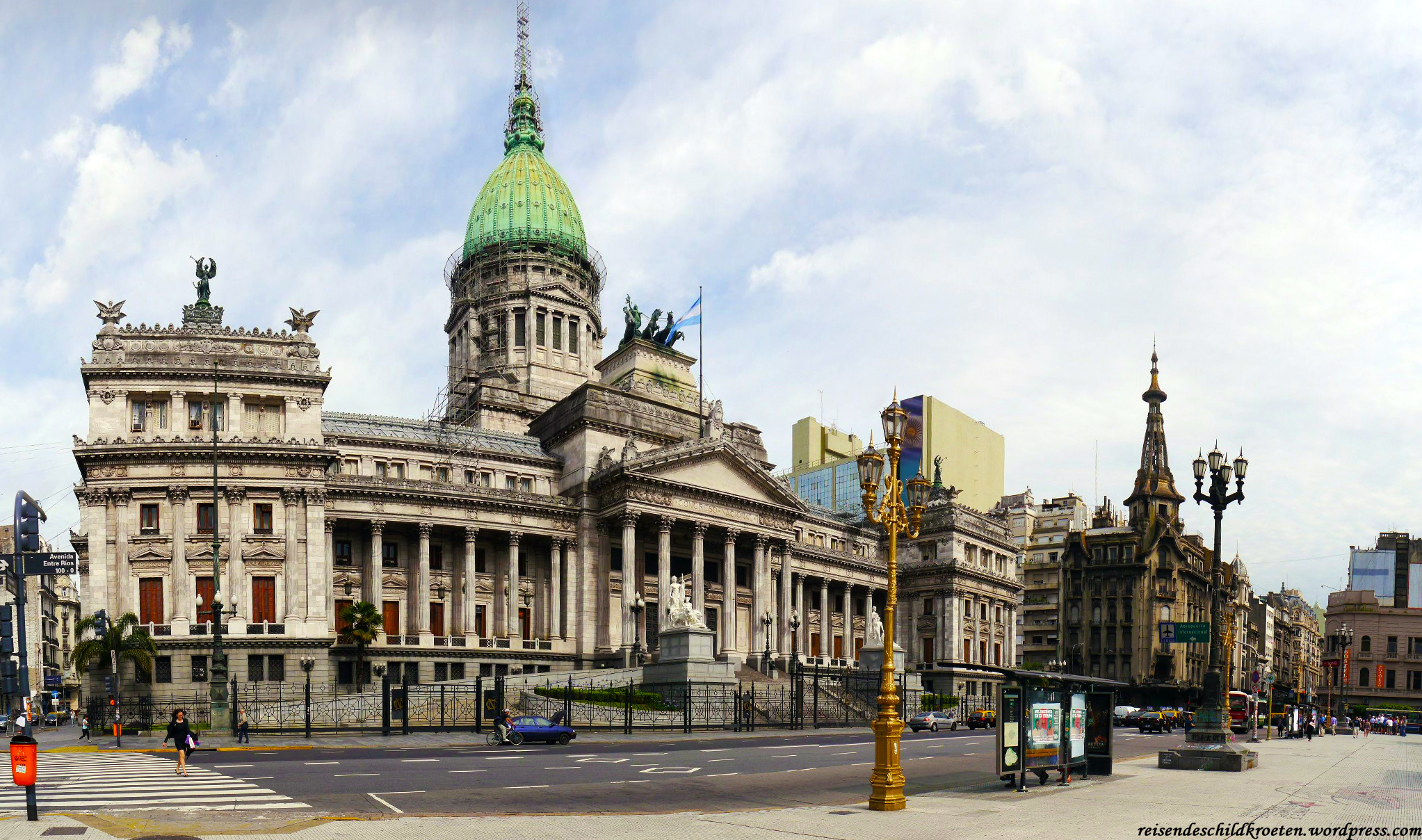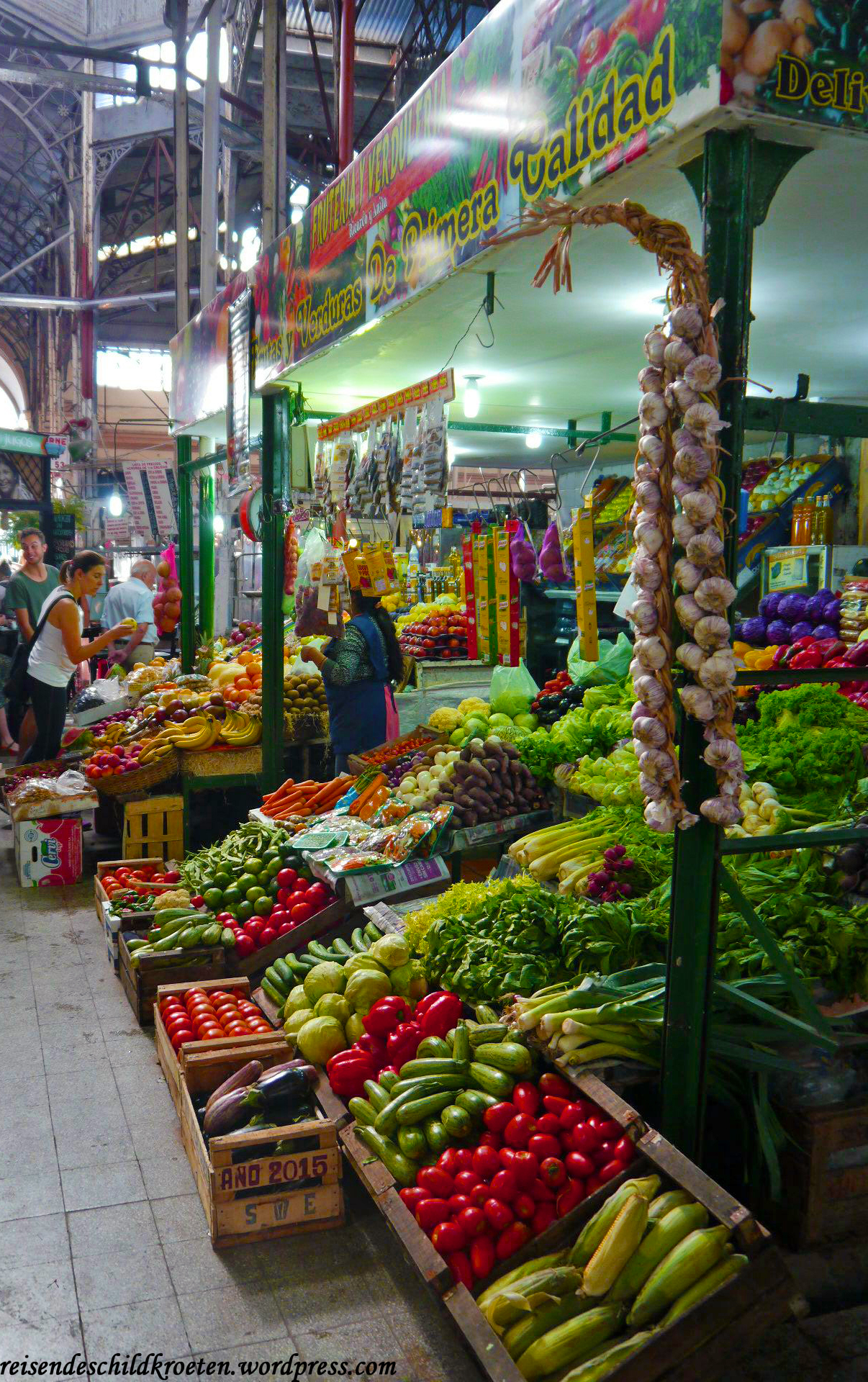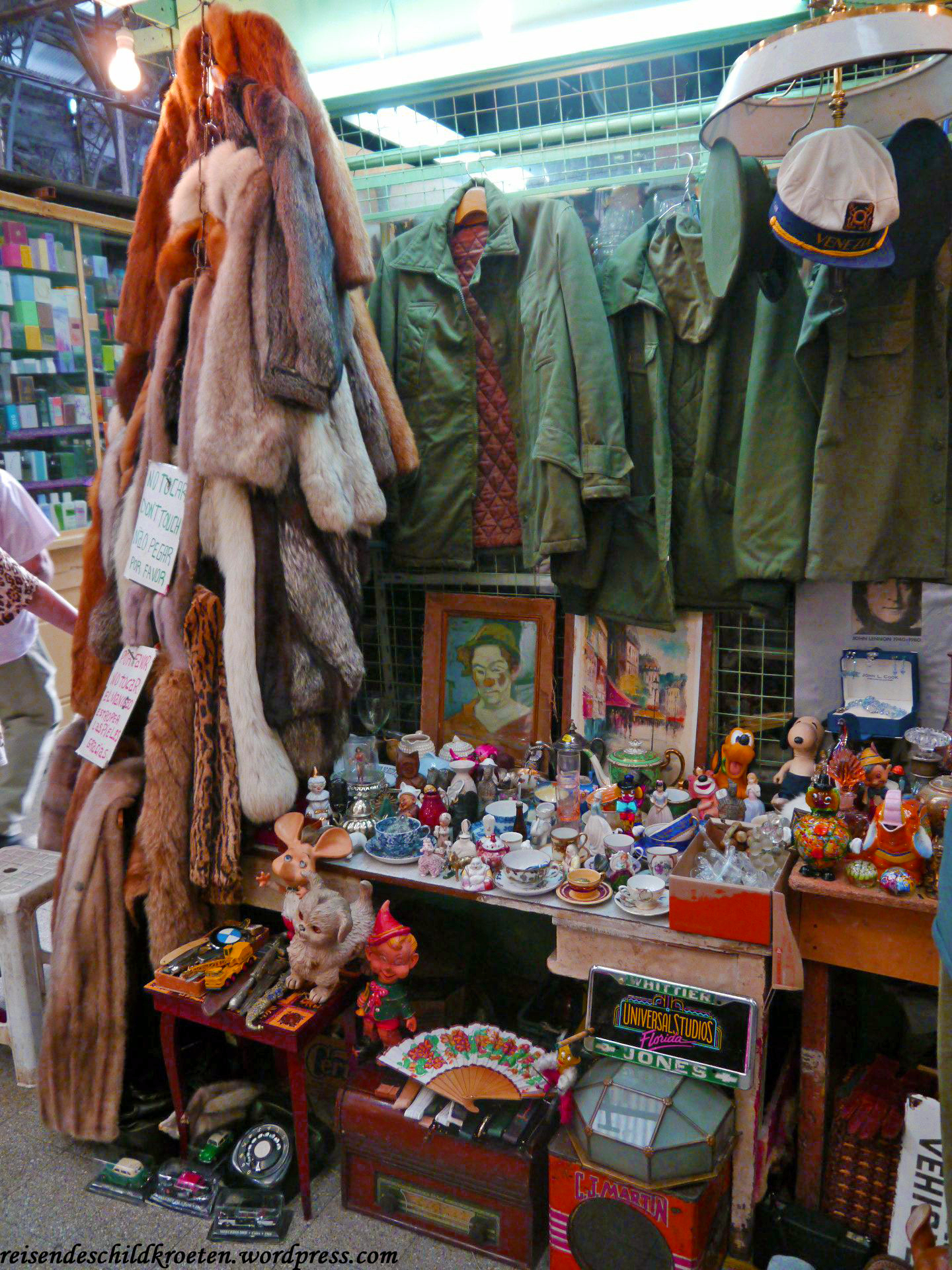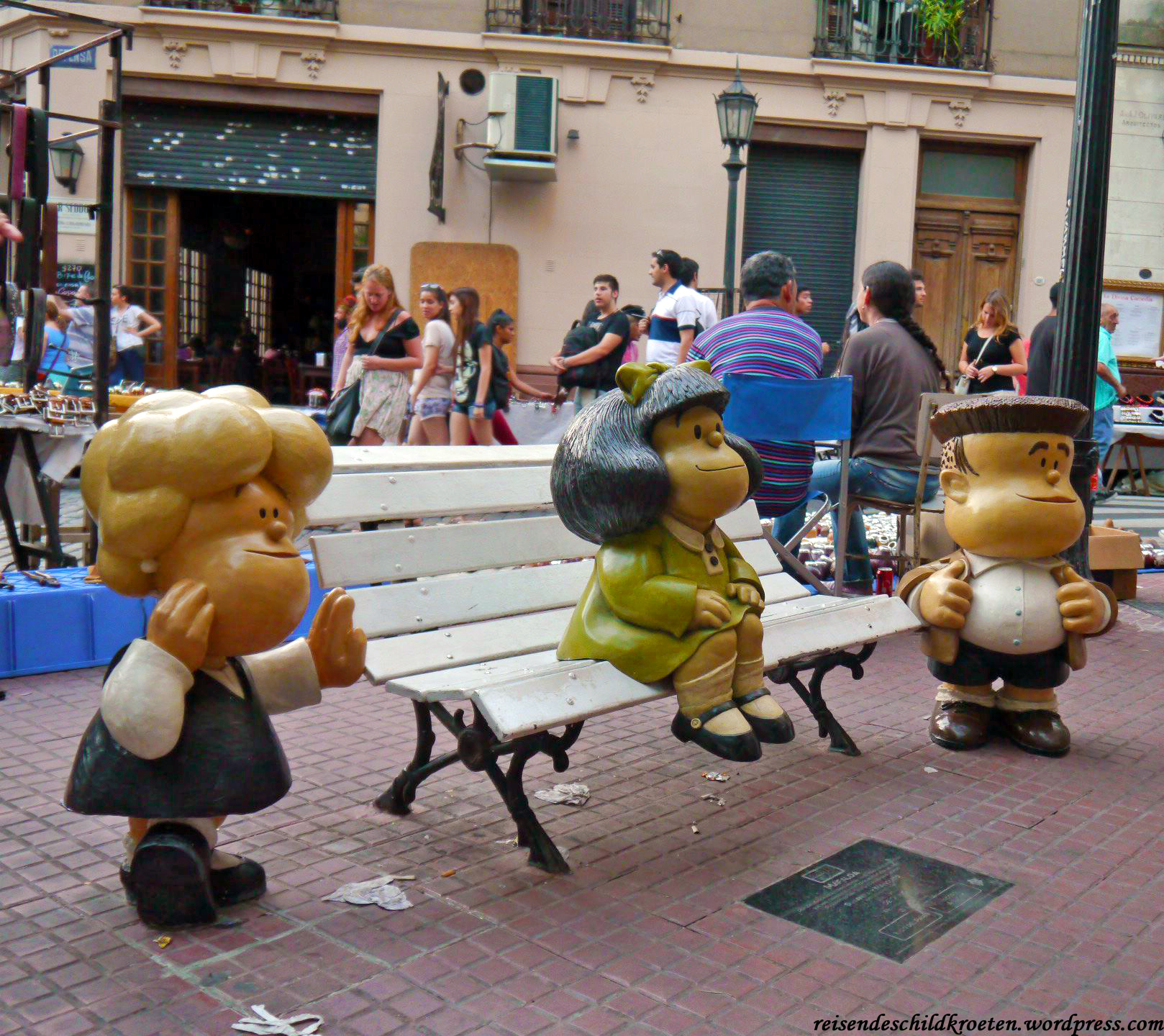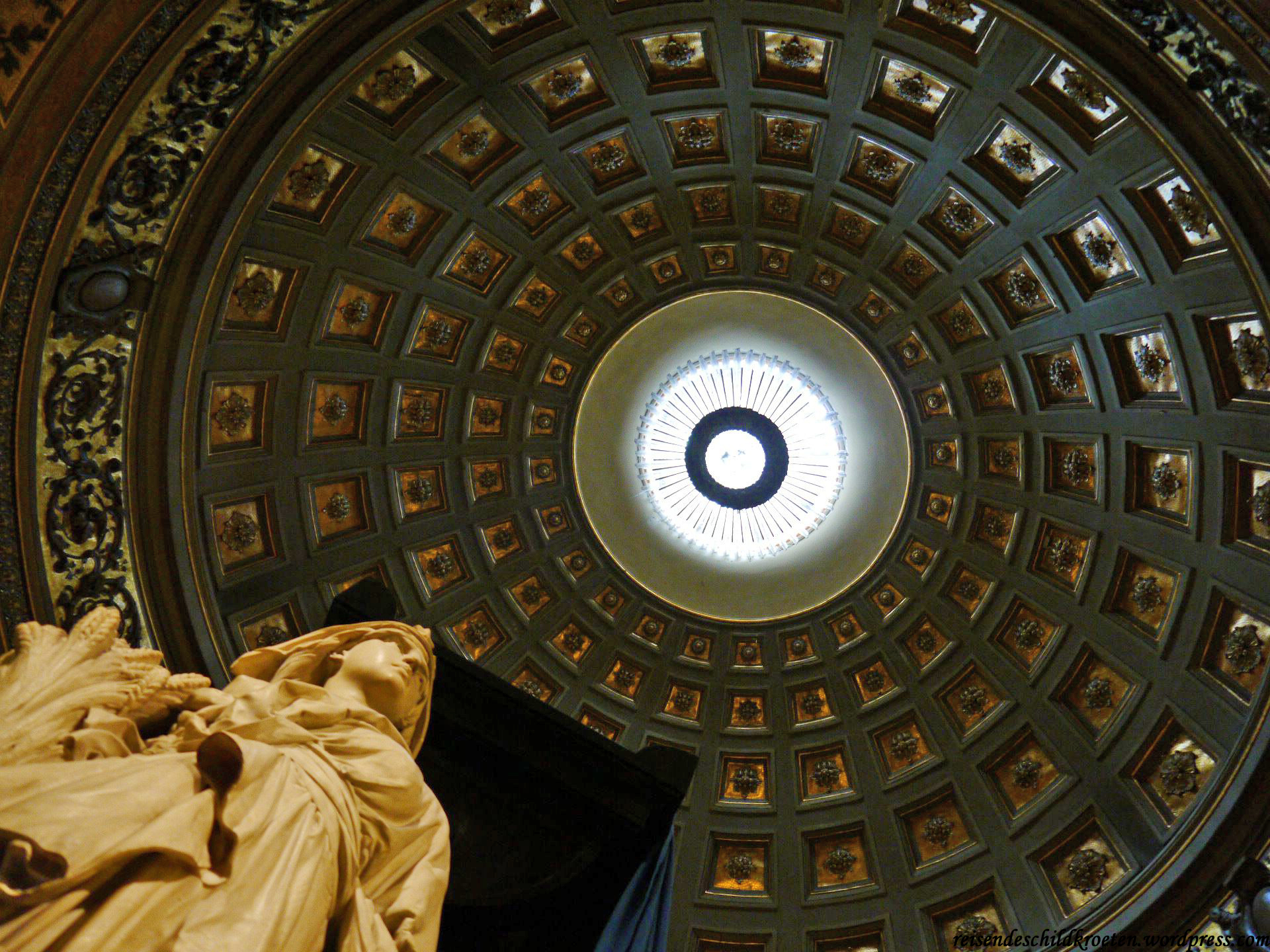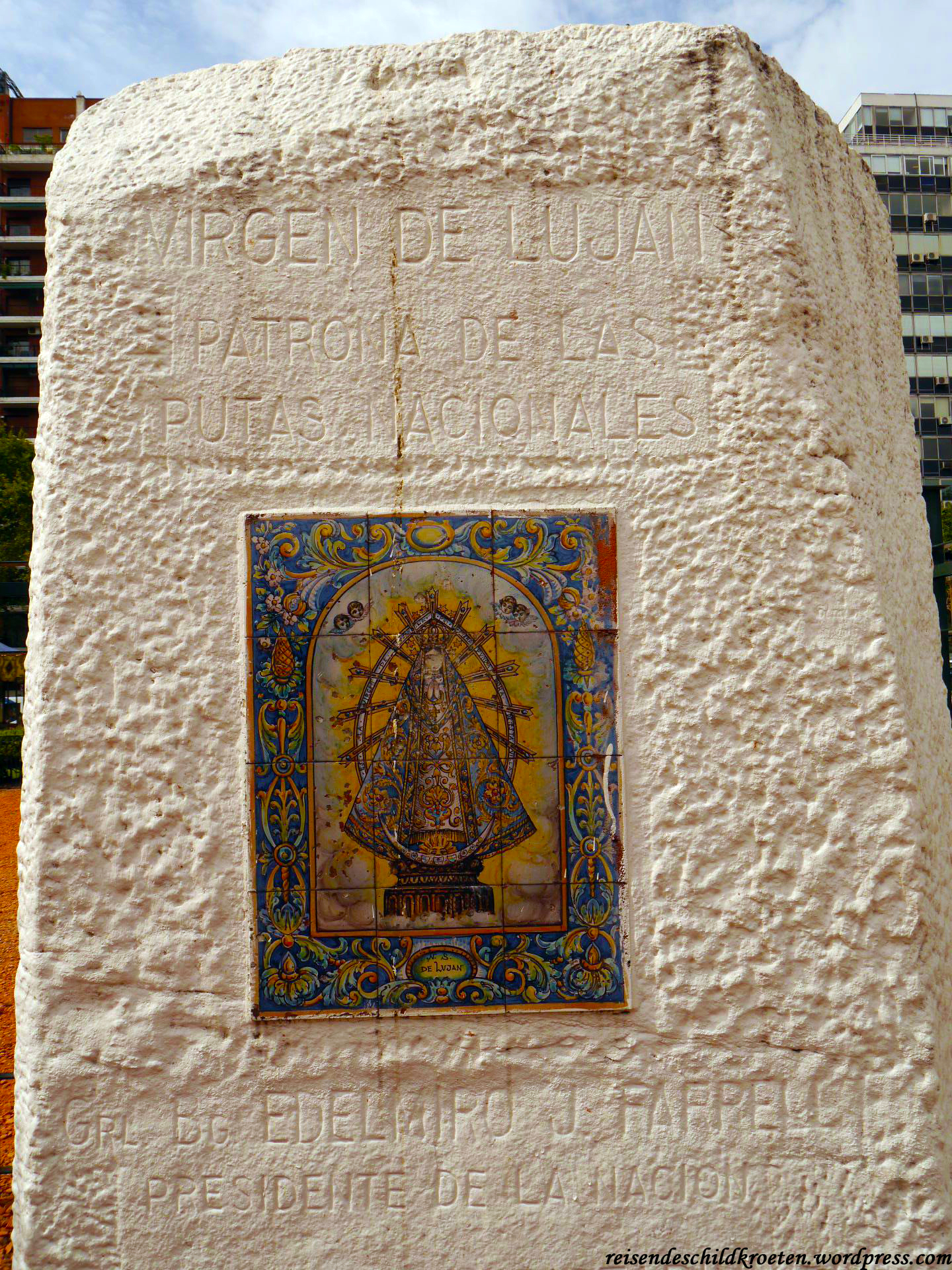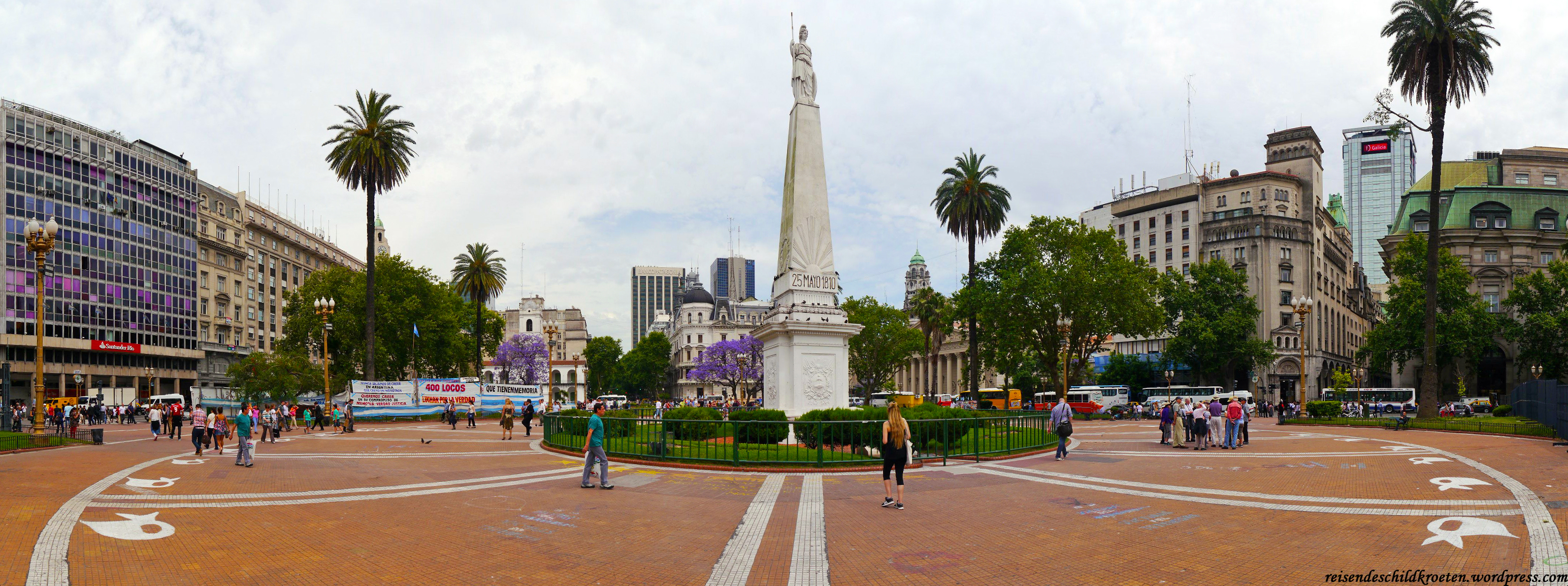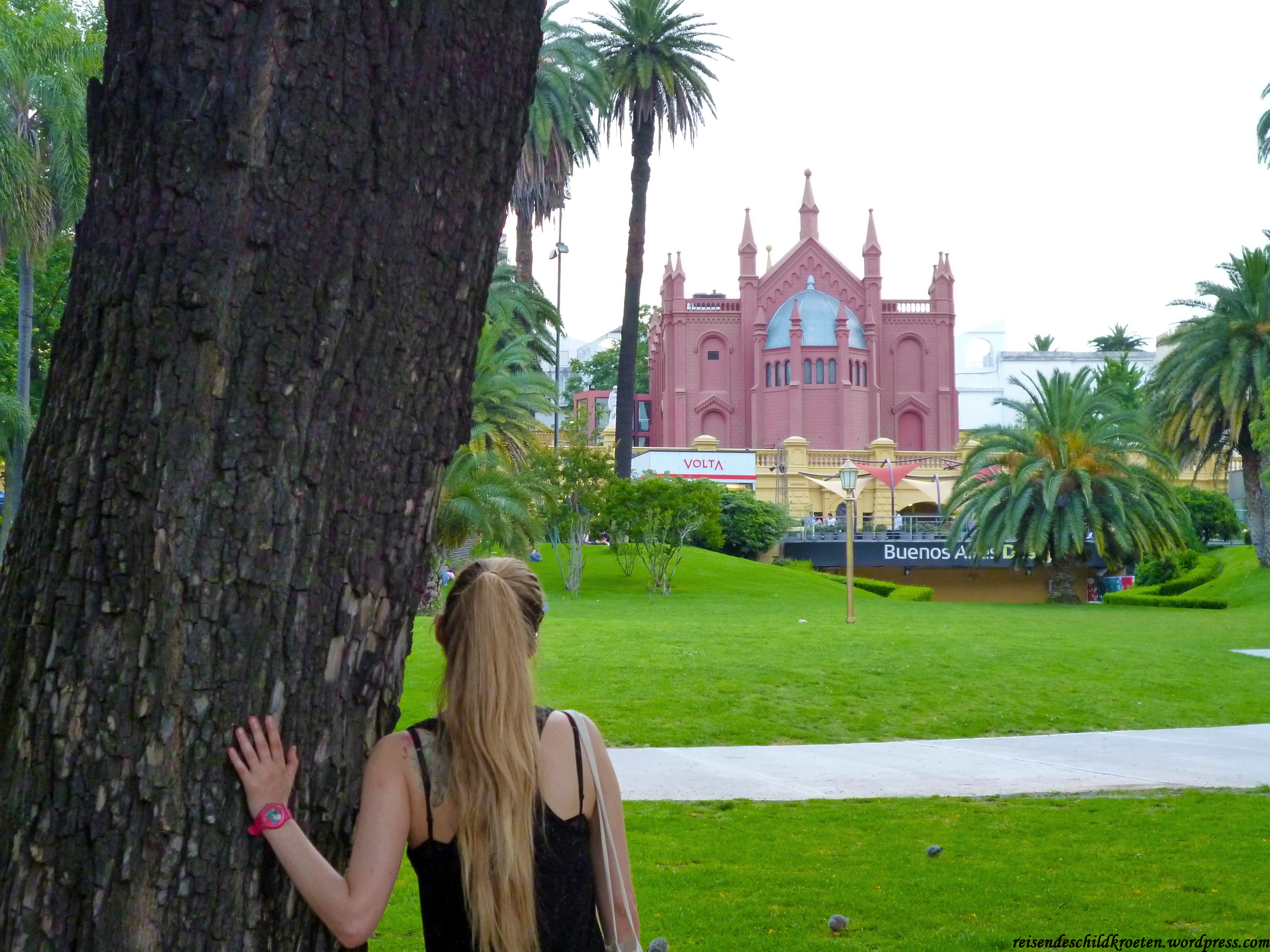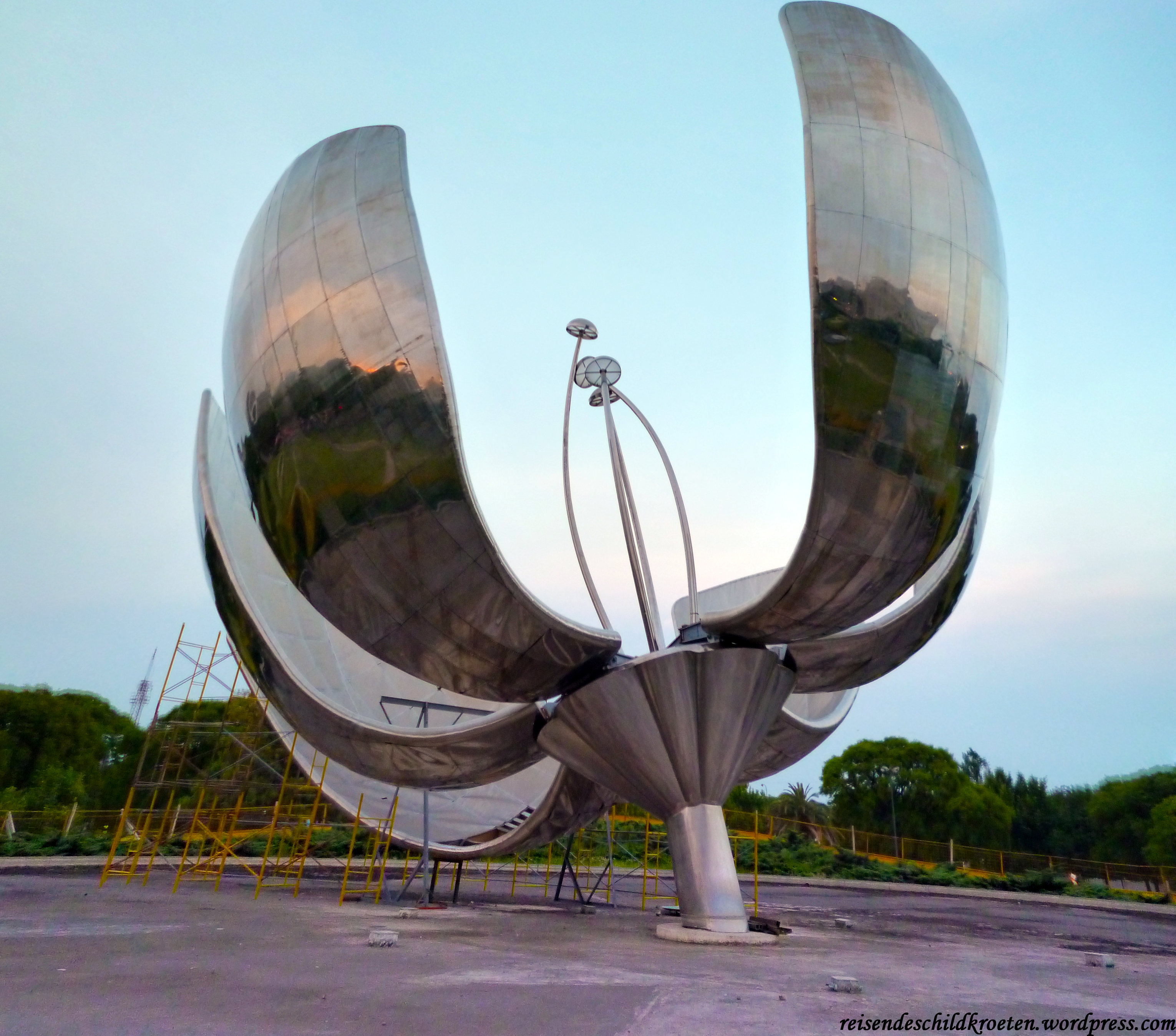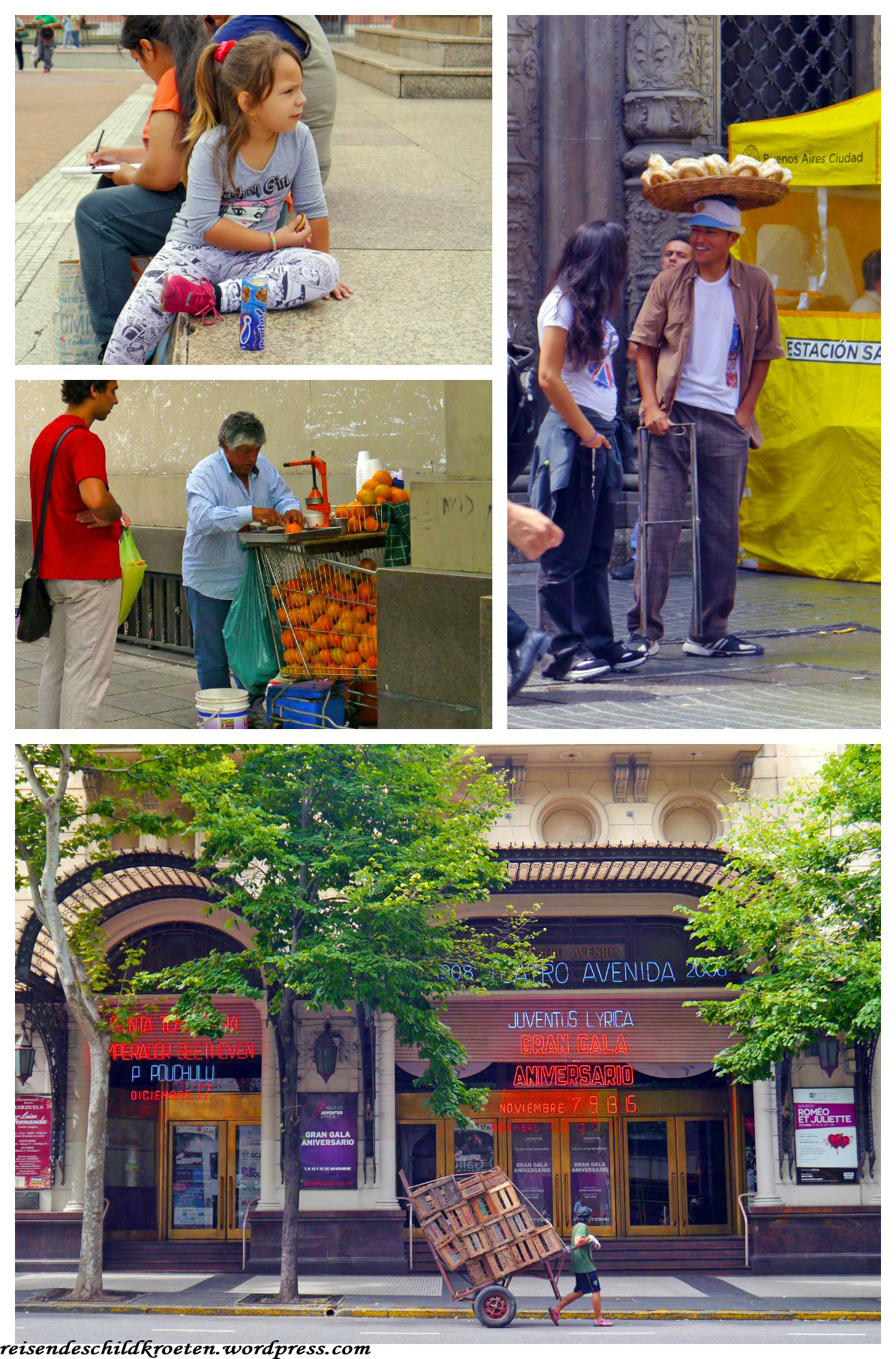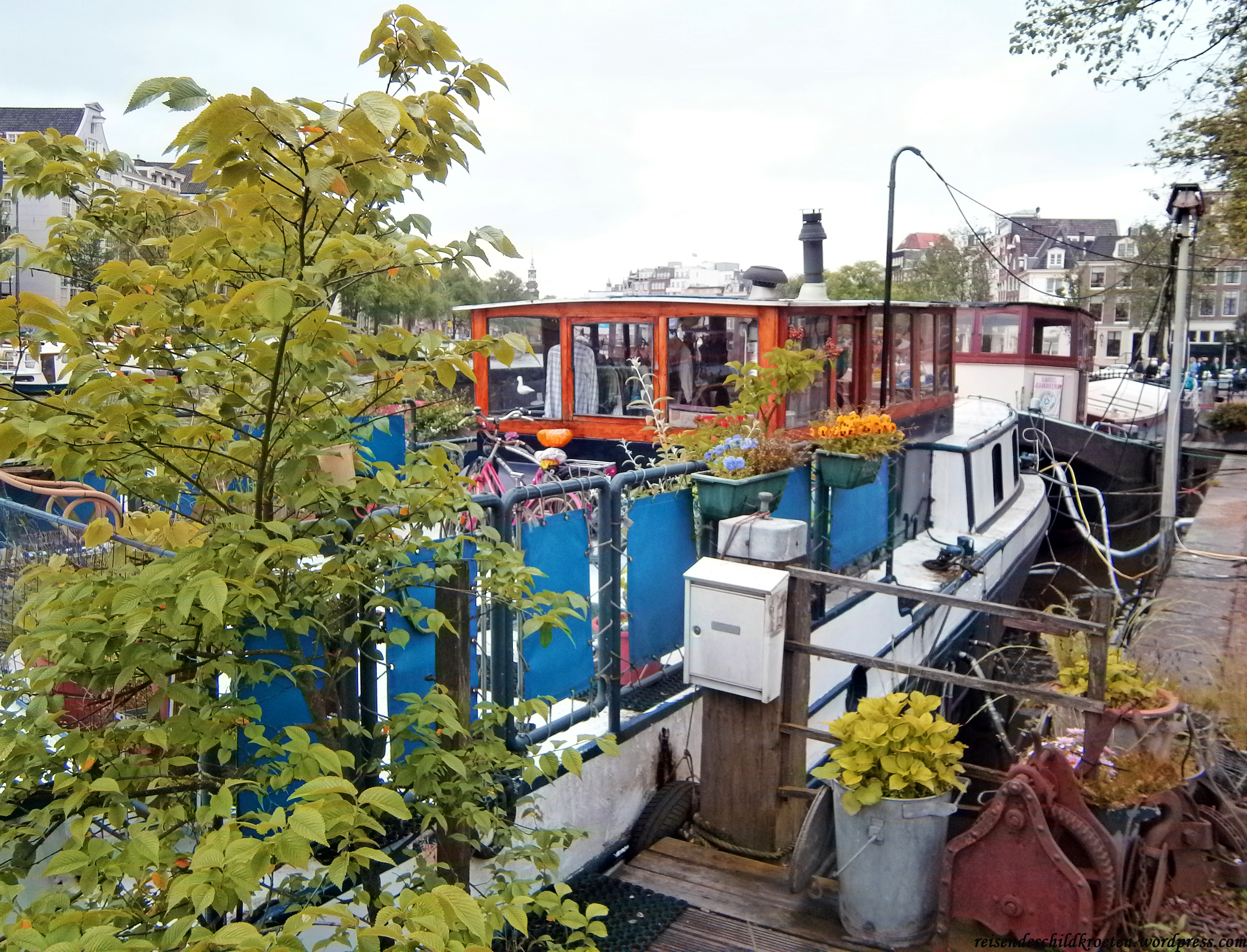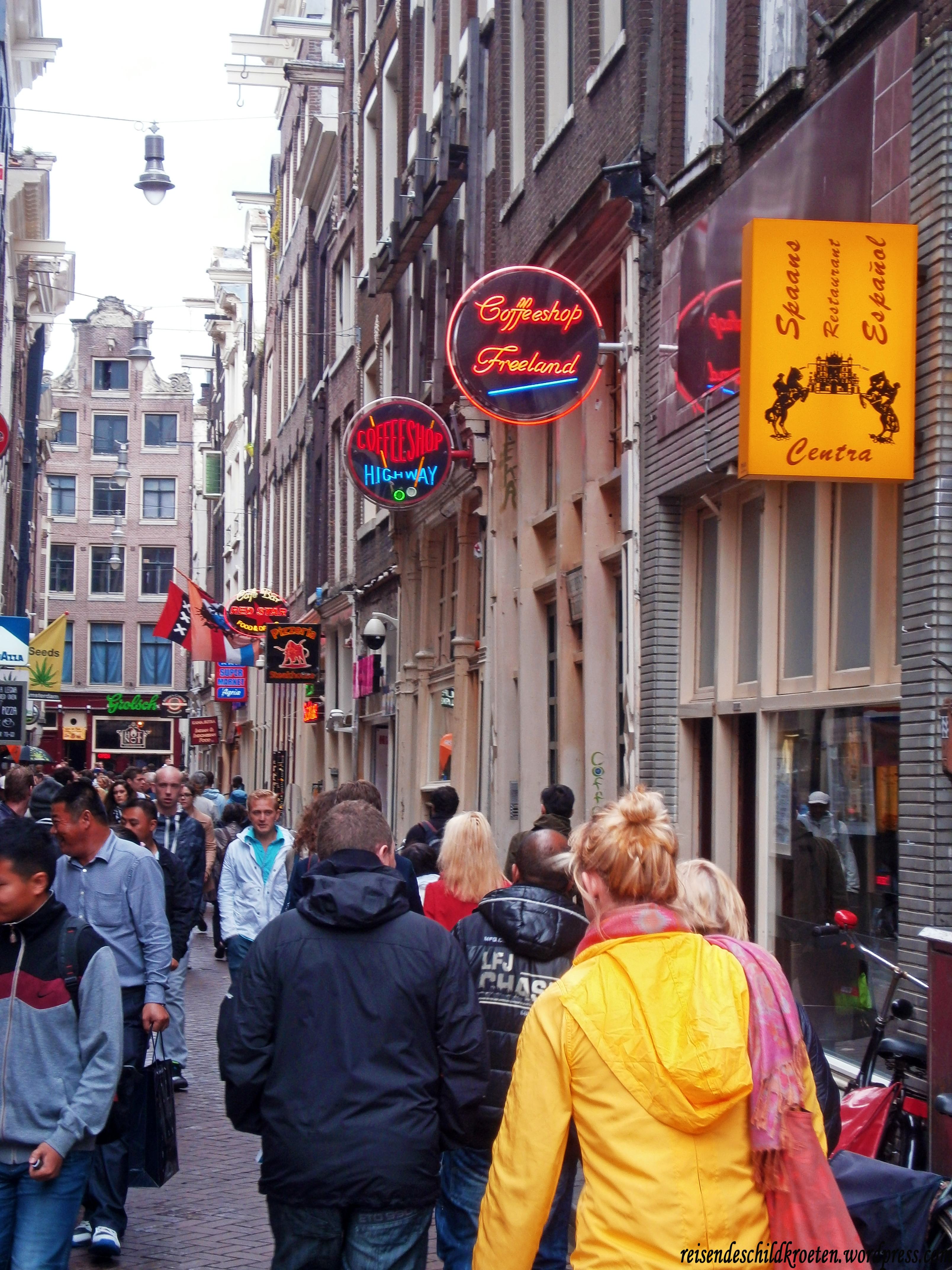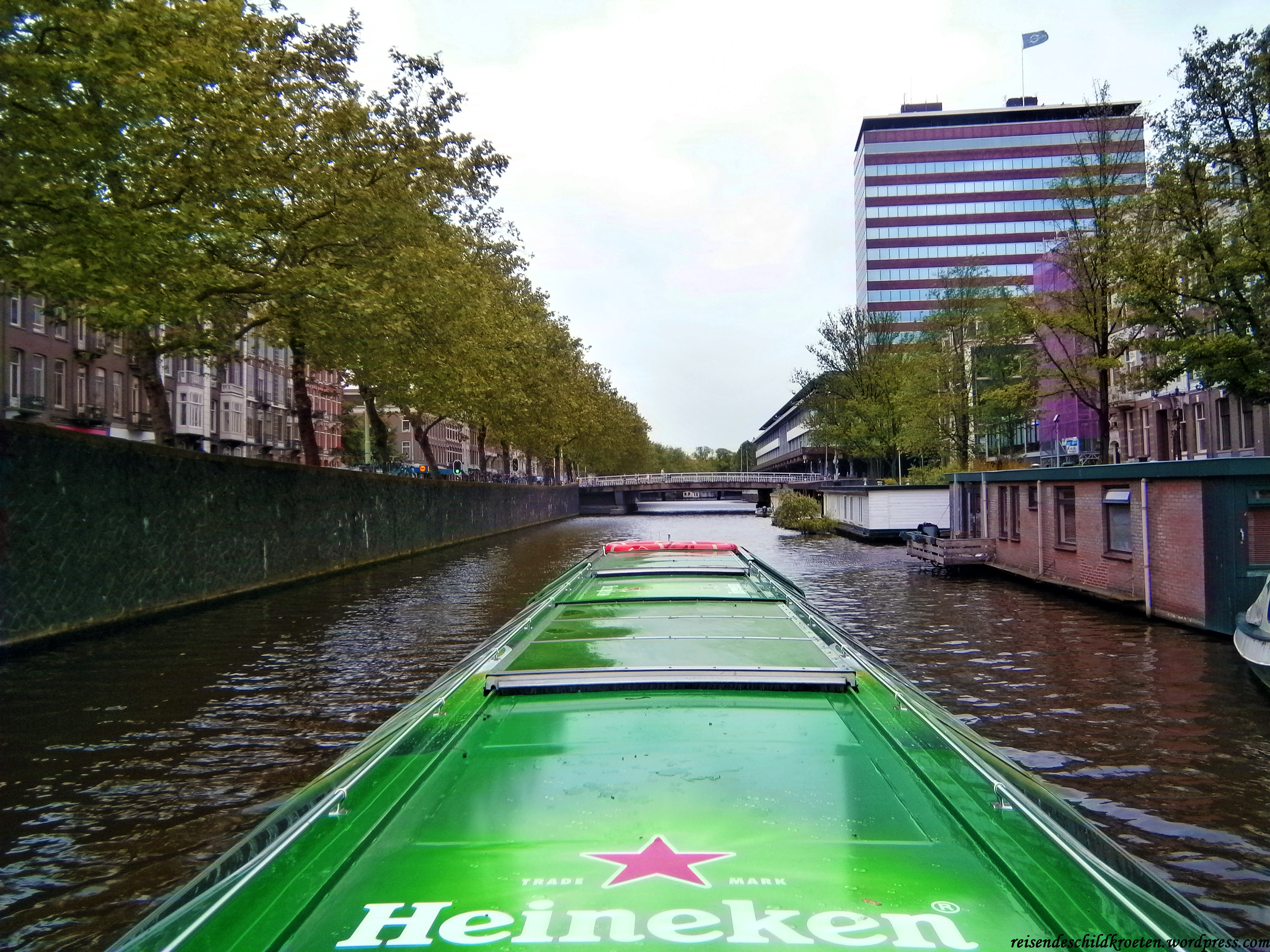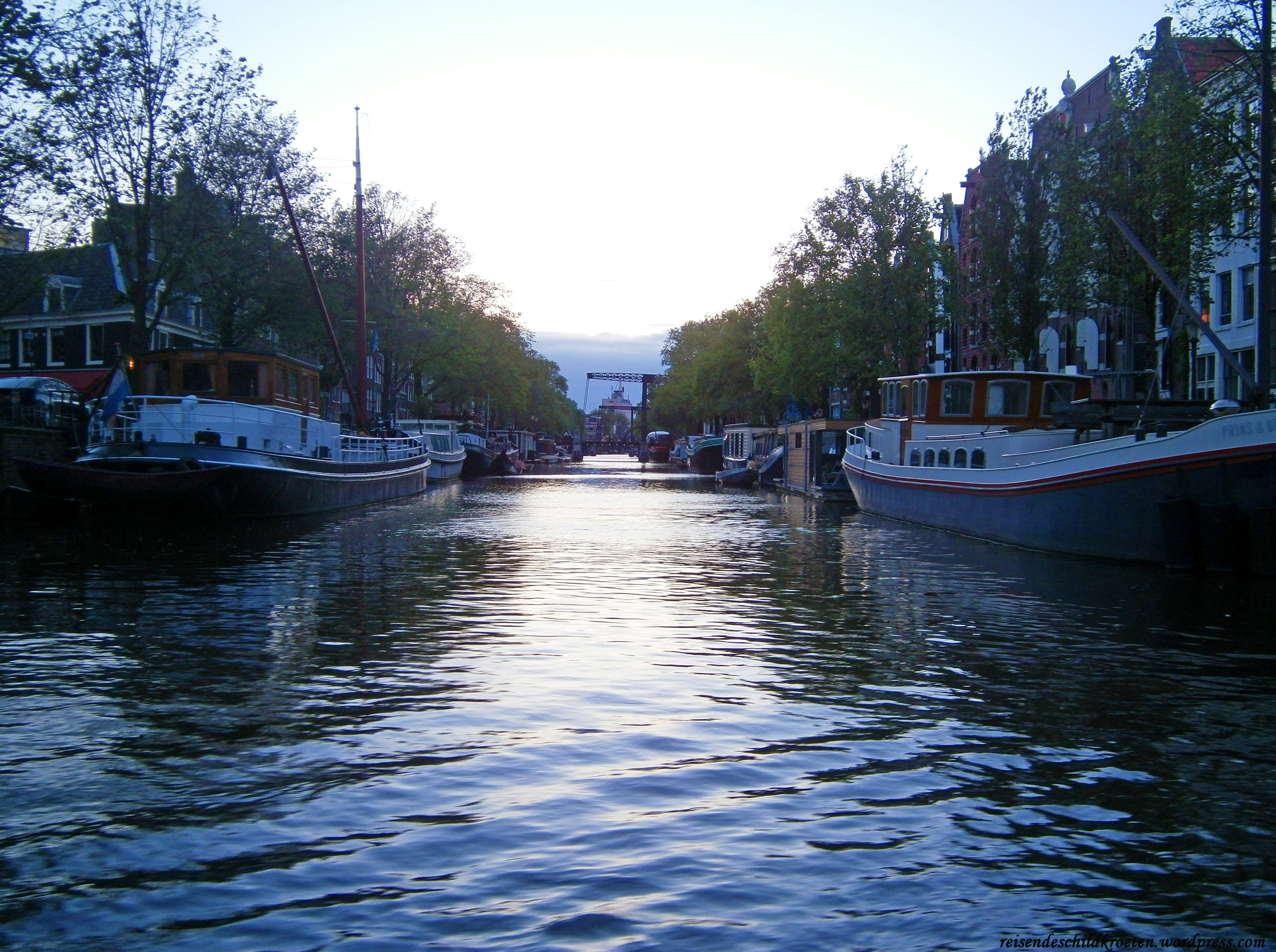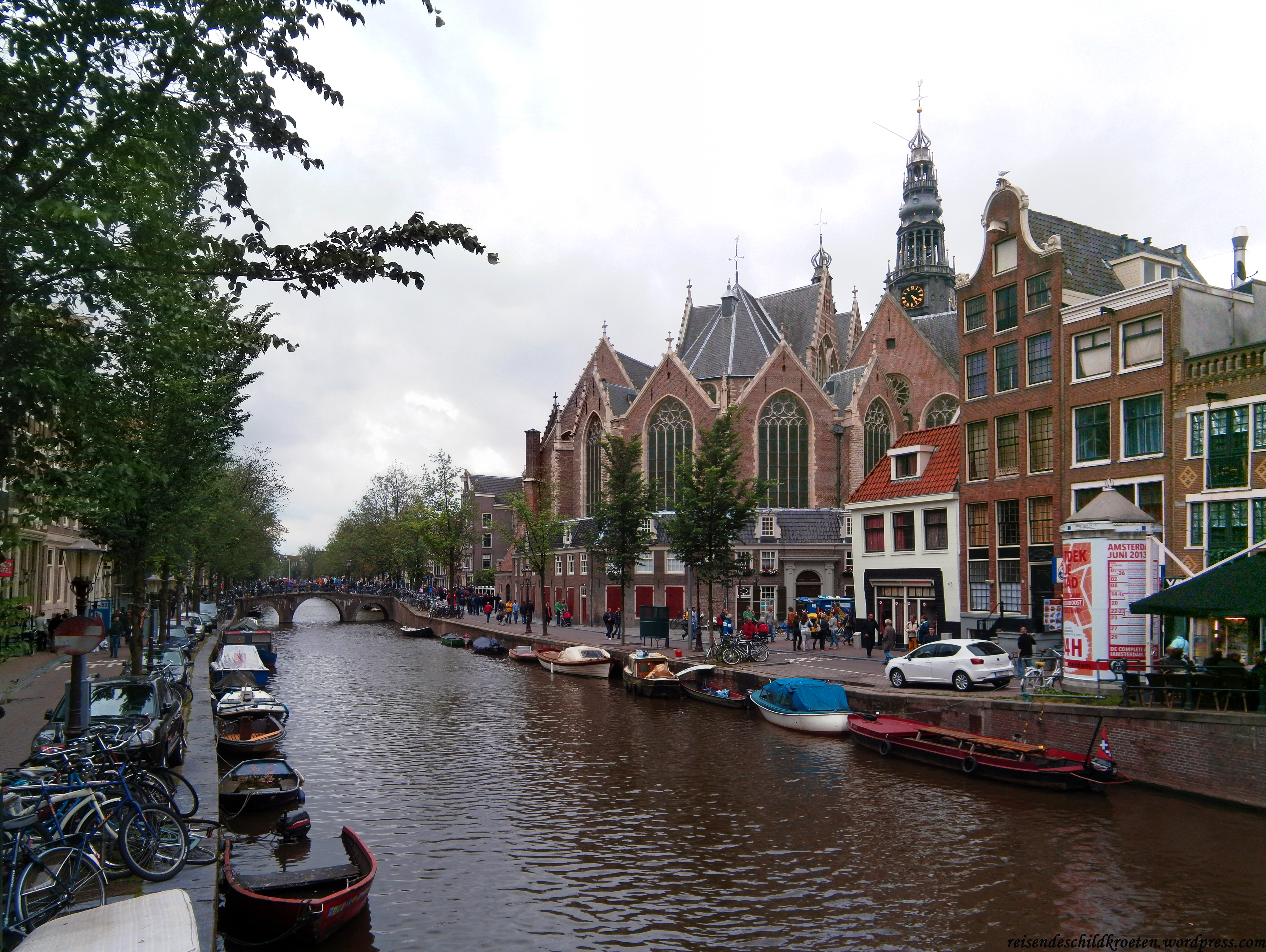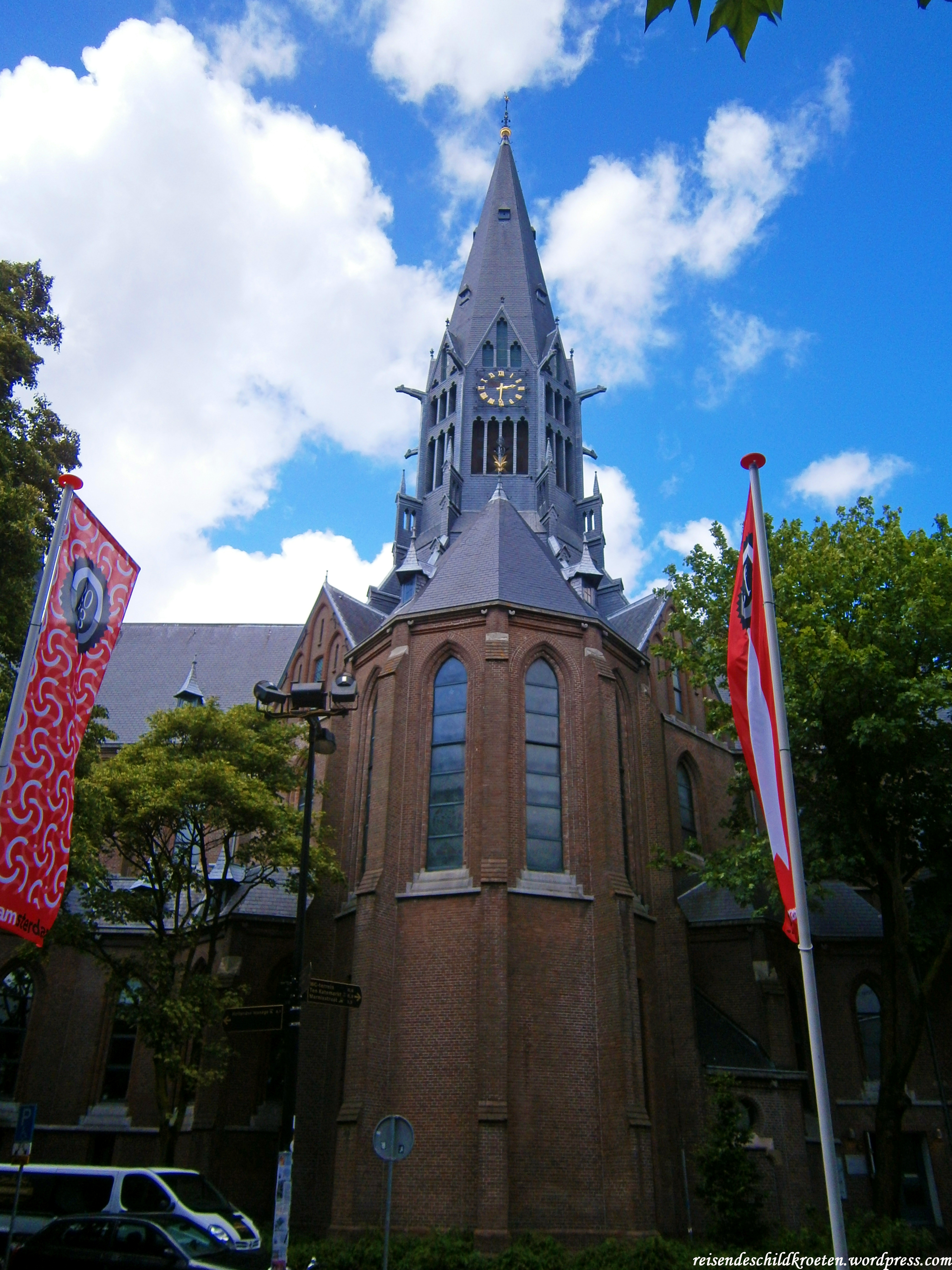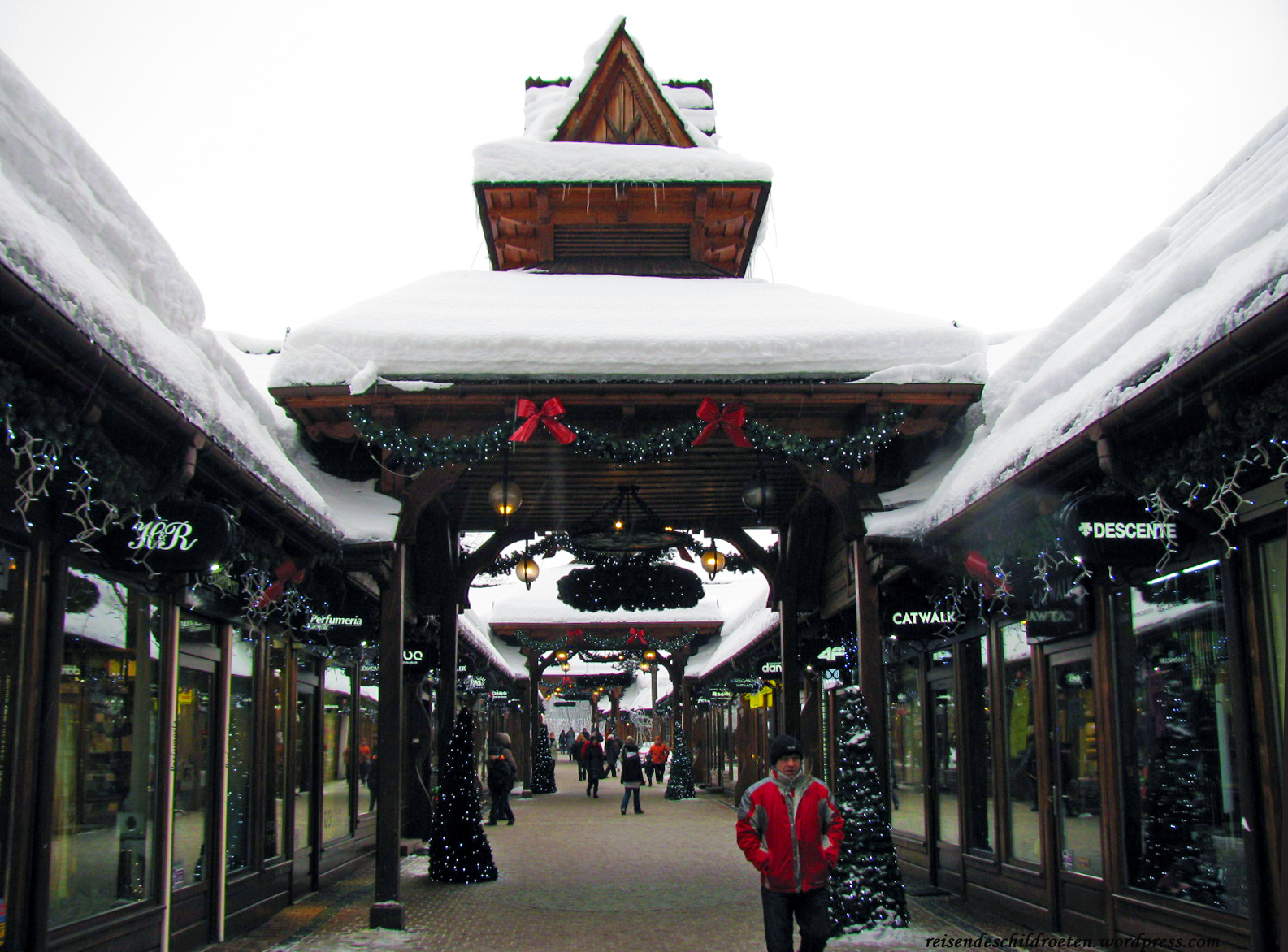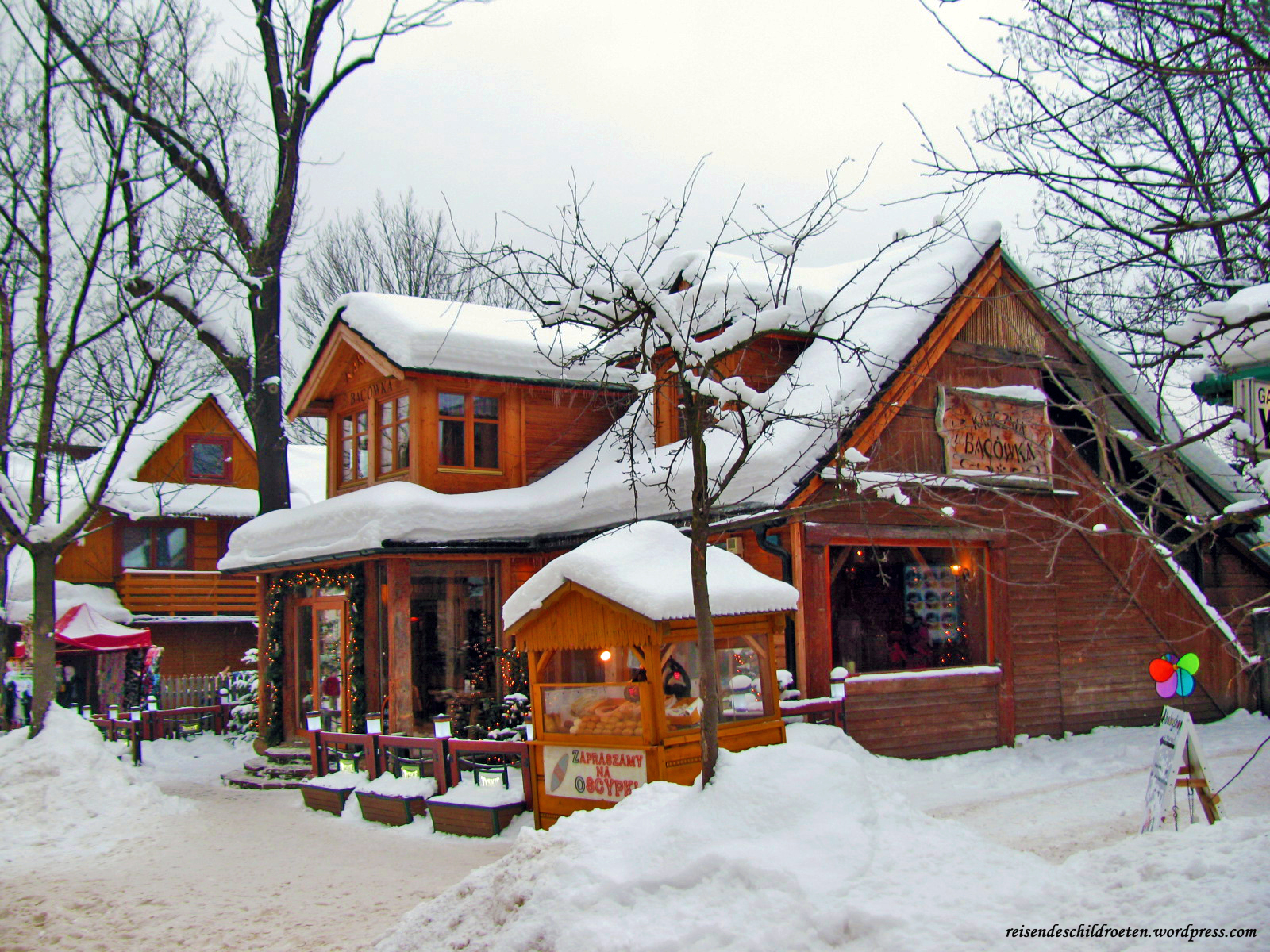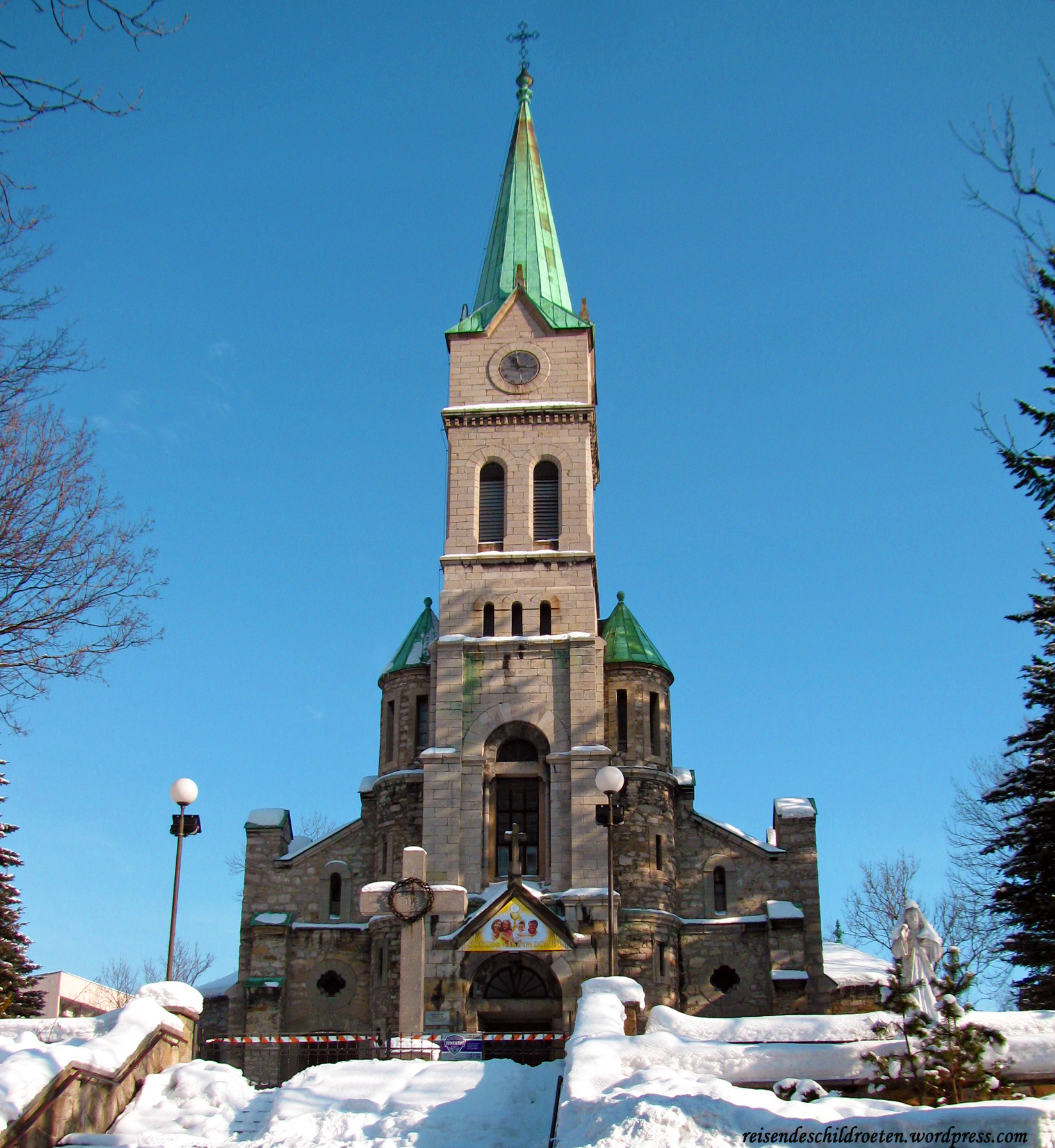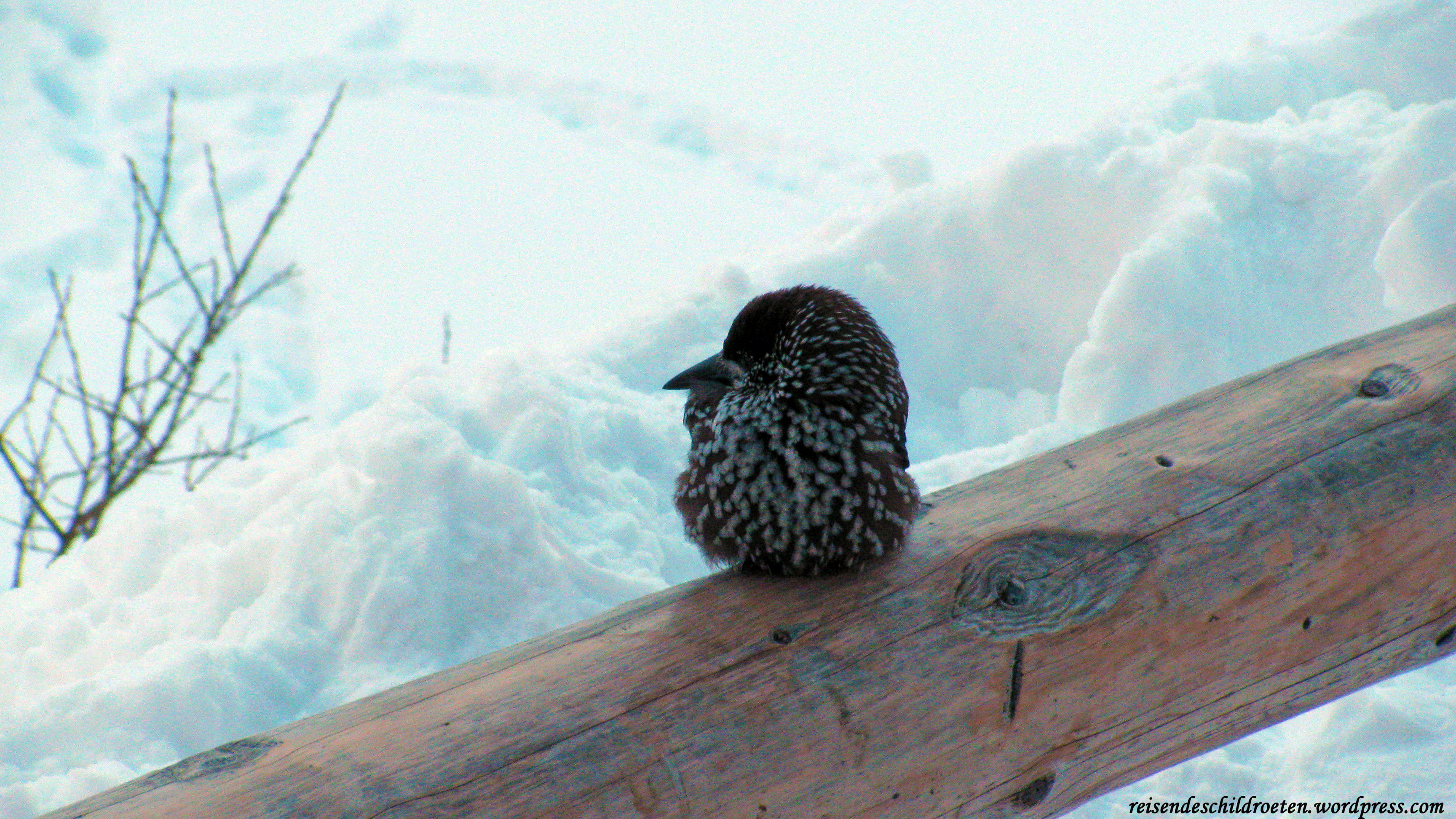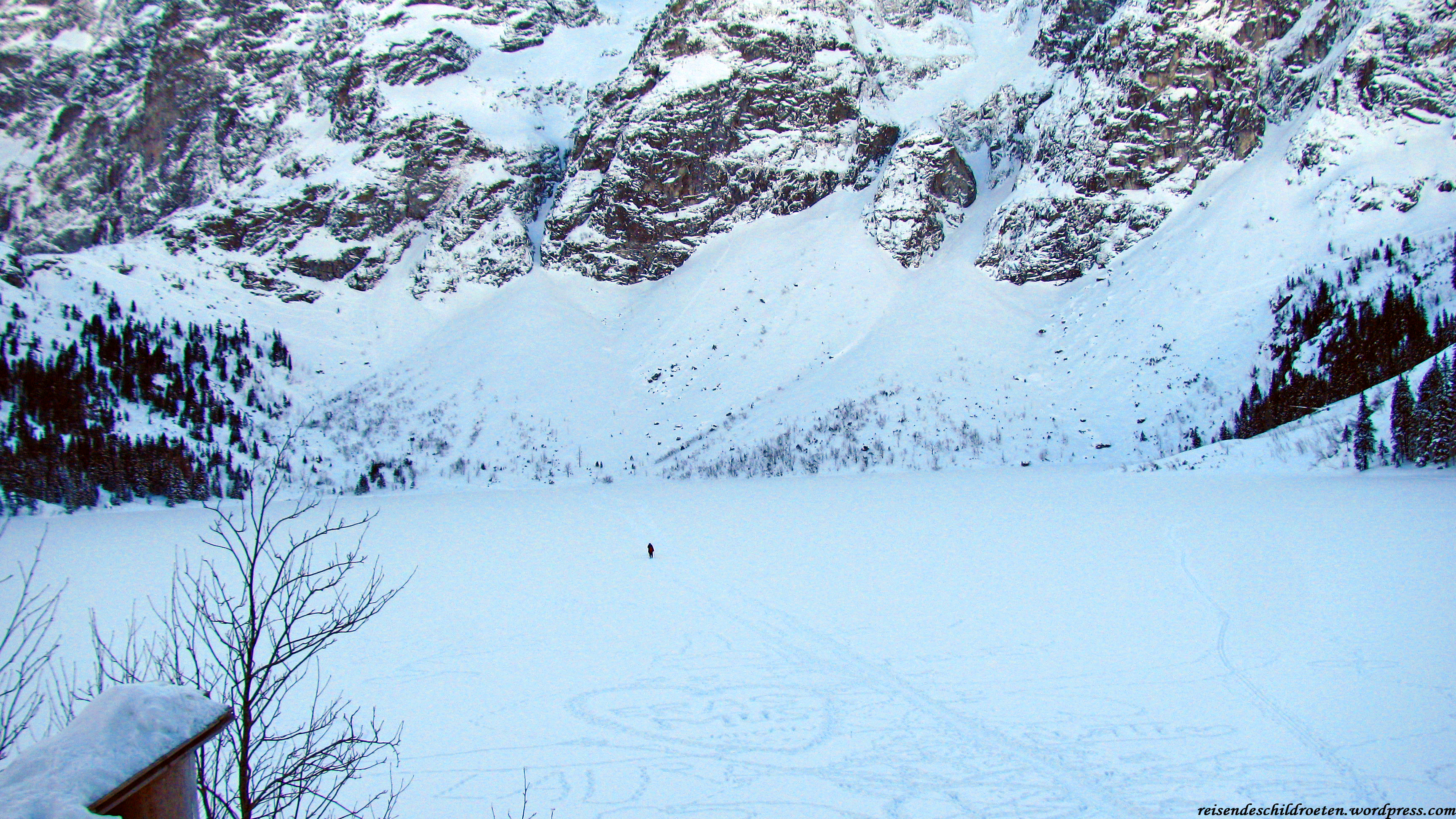One of the highlights of our trip was the stay at one Buddhist temple for 2 days/1 night. There’s a website called templestay that allows tourist to stay in one of the hundreds of temples around South Korea, sharing the monk’s daily routines. There’re different kinds of packages and we decided to go for a 1 night stay in a temple next to the city of Gyeongju.
We chose this temple mainly because it was more or less in our way to Daegu from Busan, and also because it was the only temple where the monks practiced Zen martial arts as a way of dynamic meditation.
It’s called Sunmudo.
We took a bus from Busan to Gyeongju, even the cheapest buses there, that run to small and unknown places, are more comfortable than the first class in any German or Spanish train.
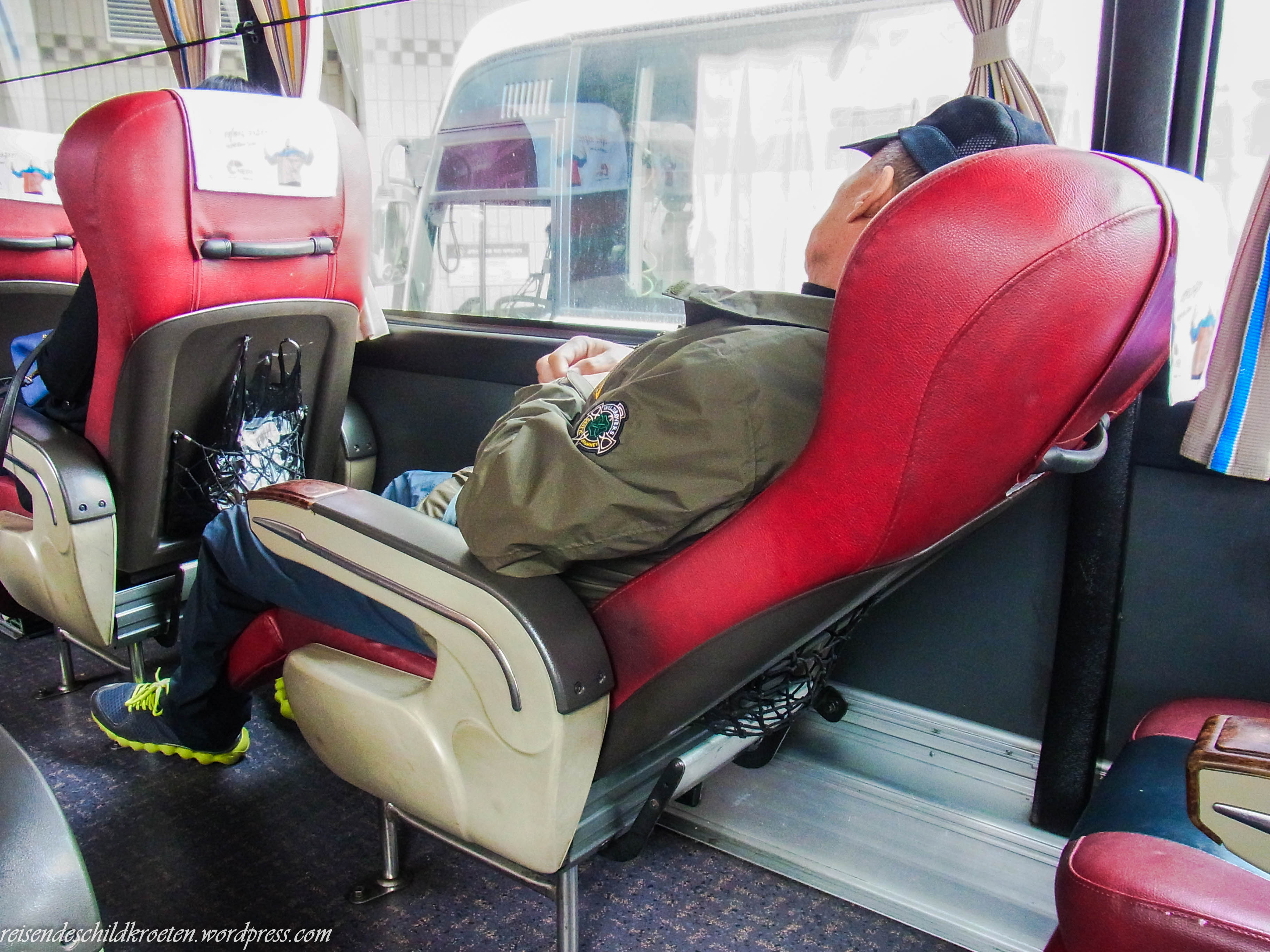 Enough space for a pleasant nap
Enough space for a pleasant nap
We had to wait a couple of hours for the bus that’d leave us “next” to the temple, so we took advantage of the time to eat something (Kevin bought a bunch of burgers in a McDonald’s nearby to take to the temple, as the food there was only vegan *sight*).
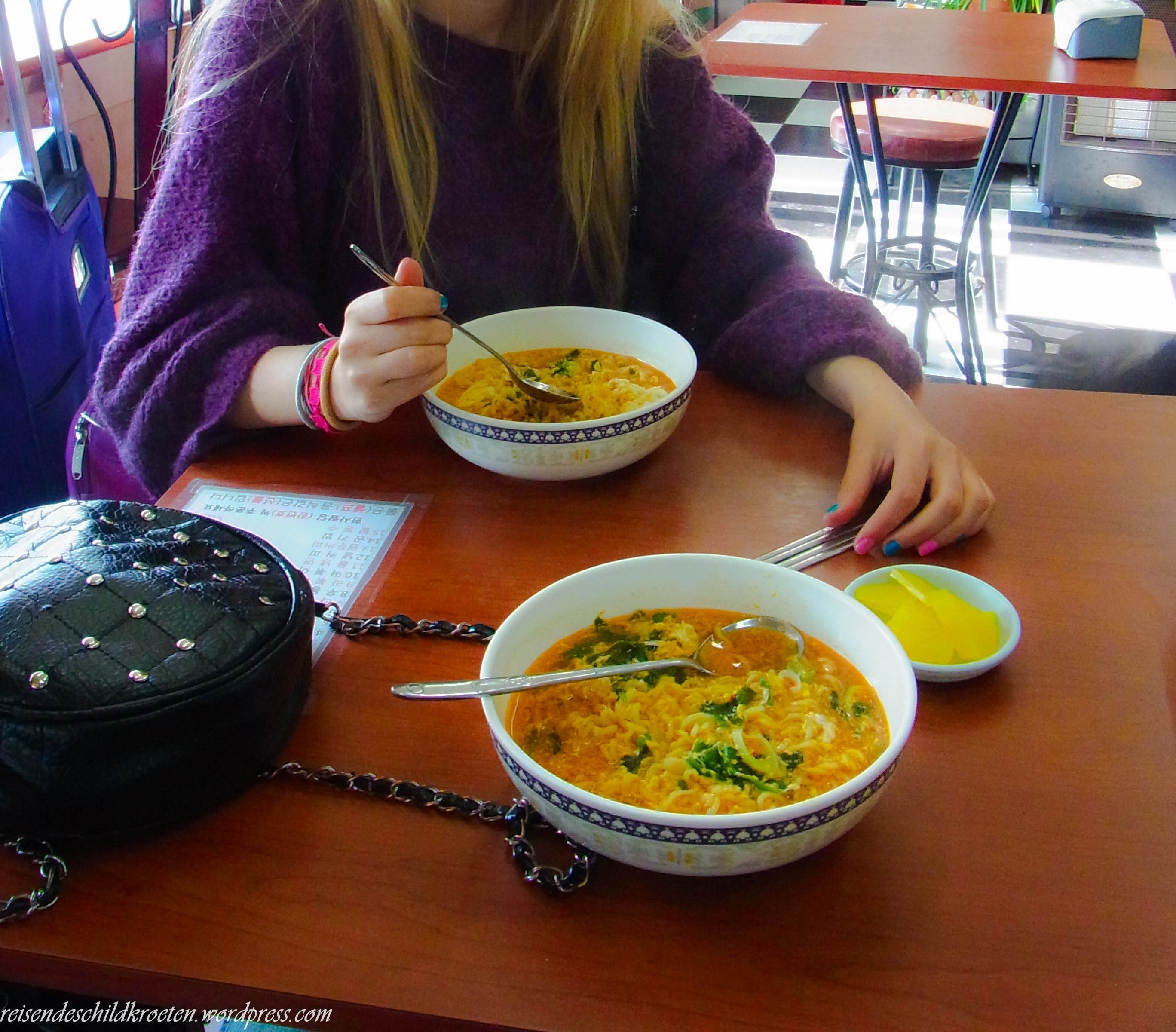 Energetic Ramen before the experience!
Energetic Ramen before the experience!
The bus left us around 2 km far away from the temple, I didn’t have my wonderful travel backpack by then, so it was kinda exhausting to do all the way with 2 big suitcases 😦
 Poor me
Poor me
Once at the temple an English girl who volunteers in the temple since 2 years gave us our new uniforms, the key of our rooms and the schedule for the next 2 days.
She was once a tourist visiting the temple like us, but during a sunmudo training something did click in her mind and left everything behind to stay in the temple for undefined time.
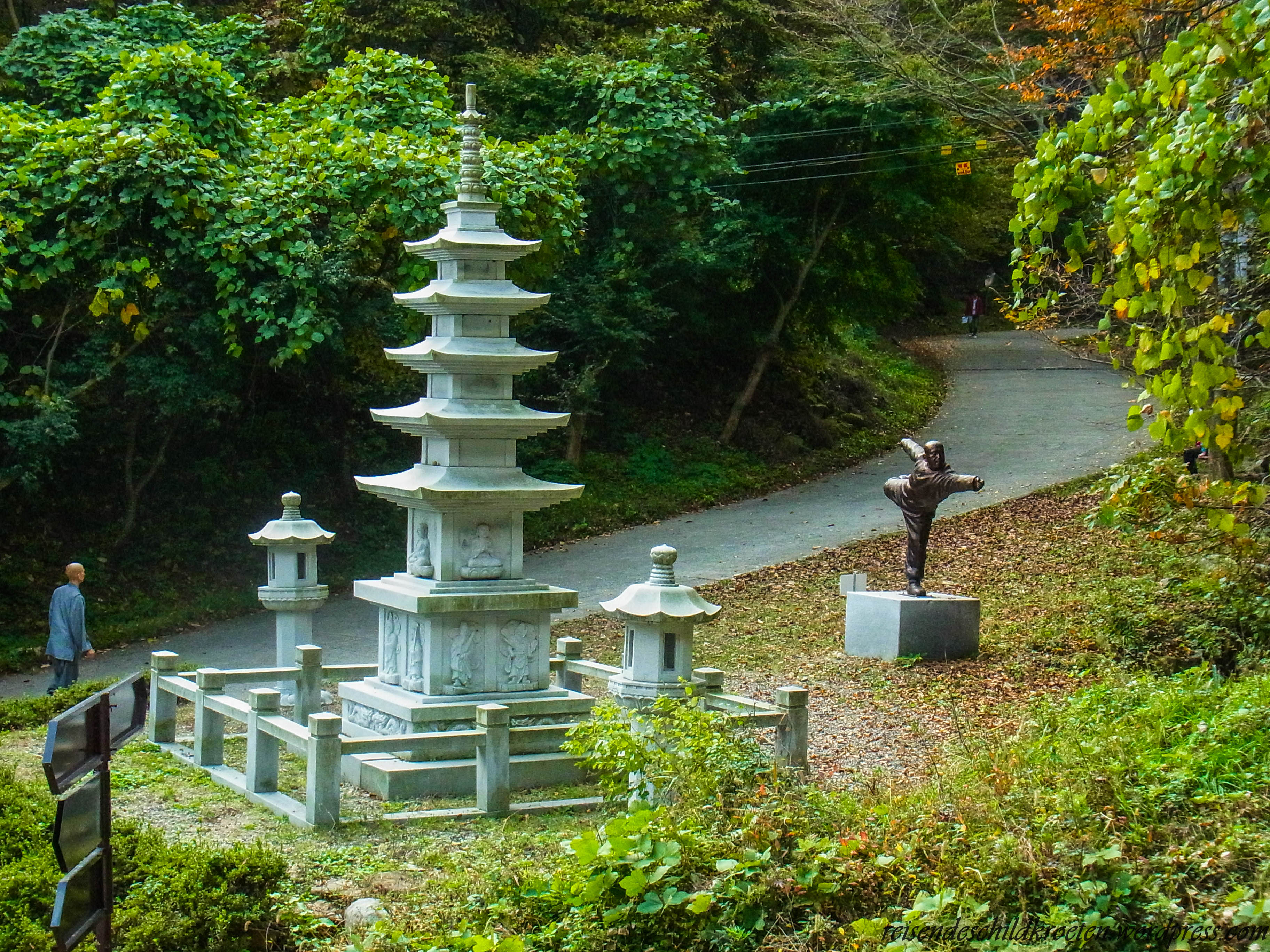 The entrance to the temple
The entrance to the temple
In the temple men and women must sleep and eat separately, so I had to share my room with a Korean girl called Kate and Kevin with her boyfriend, also called Kevin and Korean born in the USA.
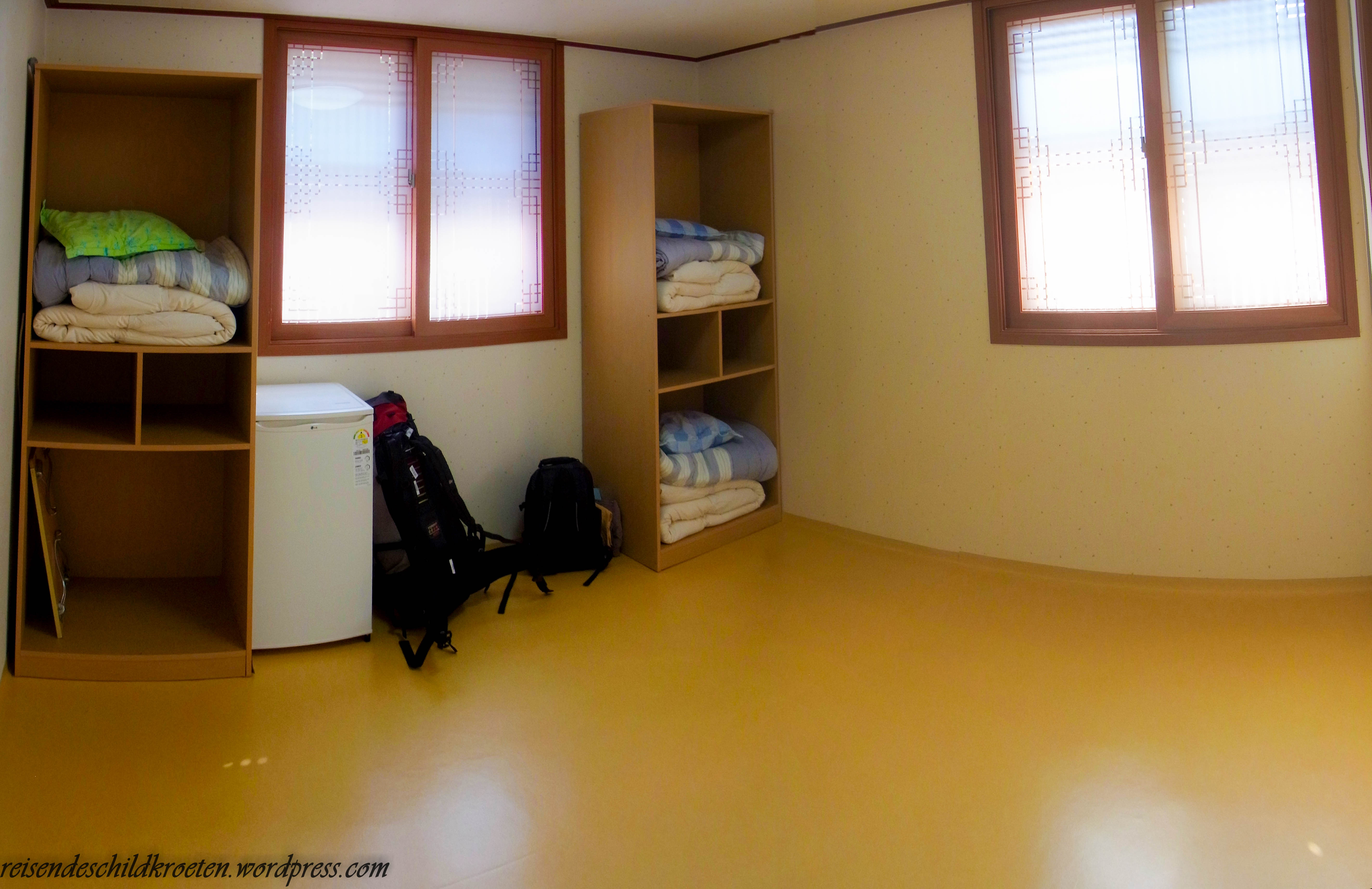 Our sober room
Our sober room
We had a strict schedule, everything was volunteer but we wanted to do everything, as we’re only 2 days there.
4:00am – Wake up
4:30am – Morning Chanting
5:00am – Sitting Meditation / Walking Meditation (30 minutes each)
6:00am – Breakfast
8:30am – Sunmudo Training (90 mins)
10:10am – Tea-time
11:30am – Sunmudo Demonstration
12:00 – Lunch
2:00pm – Sitting Meditation
3:00pm – Community Work
3.30pm – Sunmudo Demonstration
5:00pm – Dinner
6:10pm – Orientation on Buddhism, chanting and meditation
6:30pm – Evening Chanting
7:00pm – Sunmudo Training (90 mins)
10:00pm – Lights Out
The check-in is between 2 and 4 pm, so the first day we only saw the Sunmudo demonstration and the chanting.
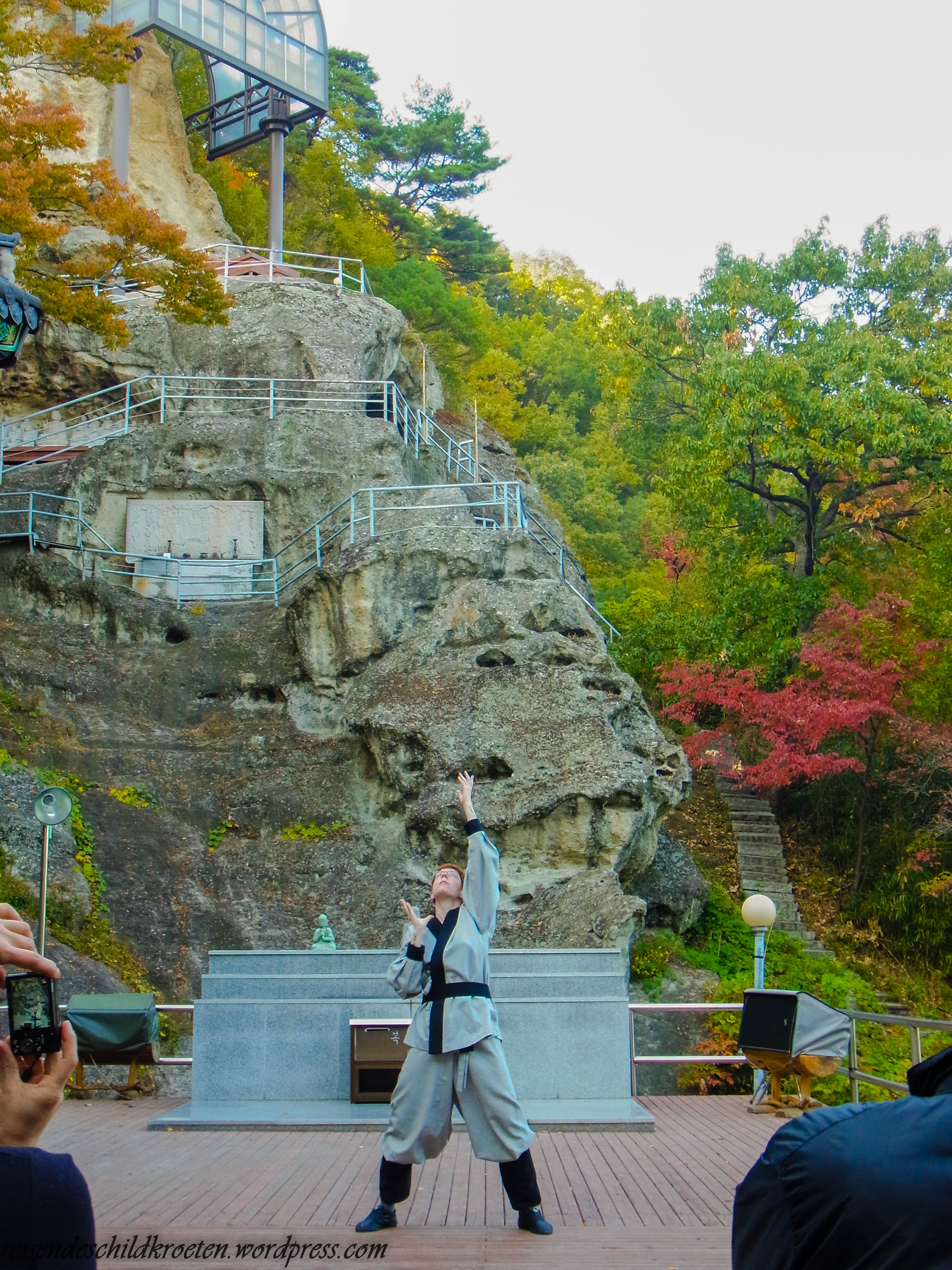 Sunmudo demonstration
Sunmudo demonstration
At 7 pm we went to the pavilion where the monks train with the other guests.
They’re all mainly Koreans, besides a couple of tourist from Europe, and I was surprised to see a bunch of teenagers that didn’t seem to enjoy too much their time far away from the technology, I guess their parents sent them hoping that they’d learn something.
During the training some girls didn’t pay attention to the monk and were laughing and chatting with each other, until the monk got angry enough to lecture one of them and to kick her out (no jokes with trained sunmudo monks, got it)
I gotta say that the training made me really tired, and it didn’t help that the good Kate snored like a big brown bear or to sleep directly over the floor, so you can imagine my mood when I had to wake up at 4 am to assist to the morning meditation.
The meditation chapel was at the highest point of the temple domains, once there we had to meditate for 30 min, that is, to sit without talking fighting for not falling asleep (3 small kids, monk apprentices didn’t succeed). Right after that we followed the monk down hill on the walking meditation.
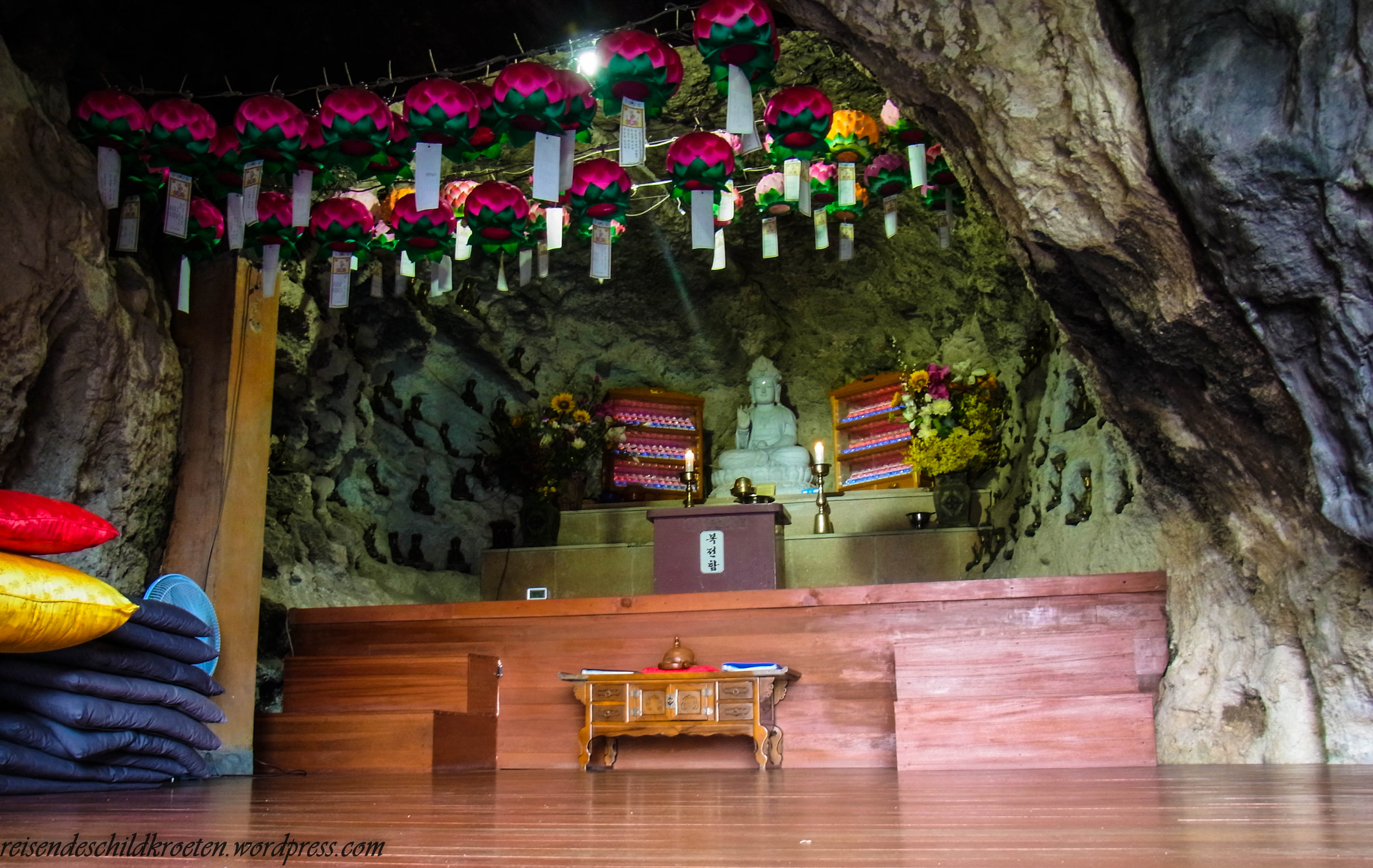 The meditation chamber
The meditation chamber
By 6 am I was so hungry that I really enjoyed all the veggie food from the canteen. Men had to sit in one side of the room and women in the other and you could take as much food as you wanted, the only rule was that nothing could go to the trash.
That was specially hard for Kev, as he was eating only rice and added a lot of very spicy sauce (he thought it was ketchup, how could he think that there’d be ketchup at a Buddhist temple??).
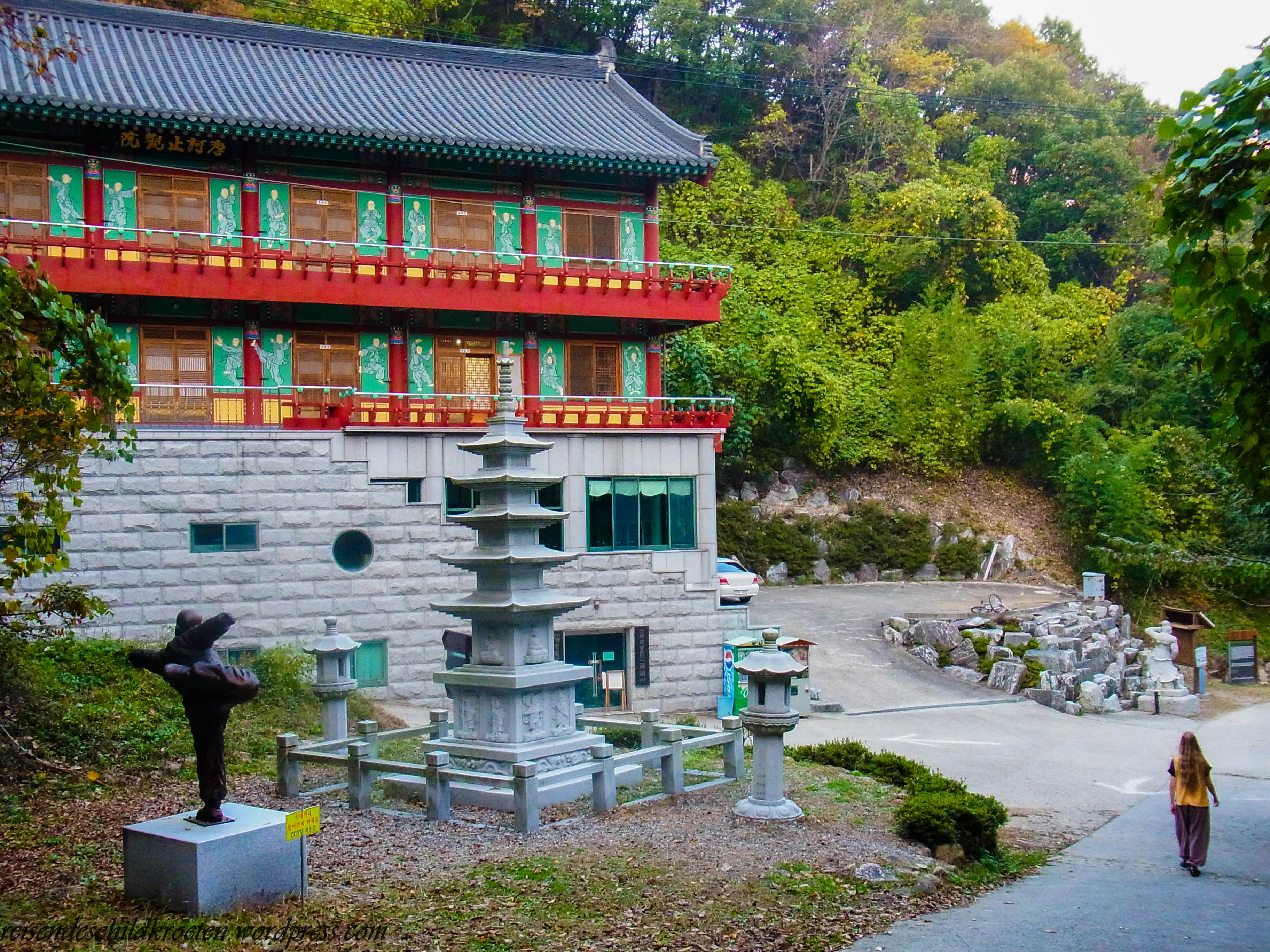 The dining room
The dining room
I was so destroyed that I skipped the sunmudo training (shame on me), it was a pity as that day it took place outside.
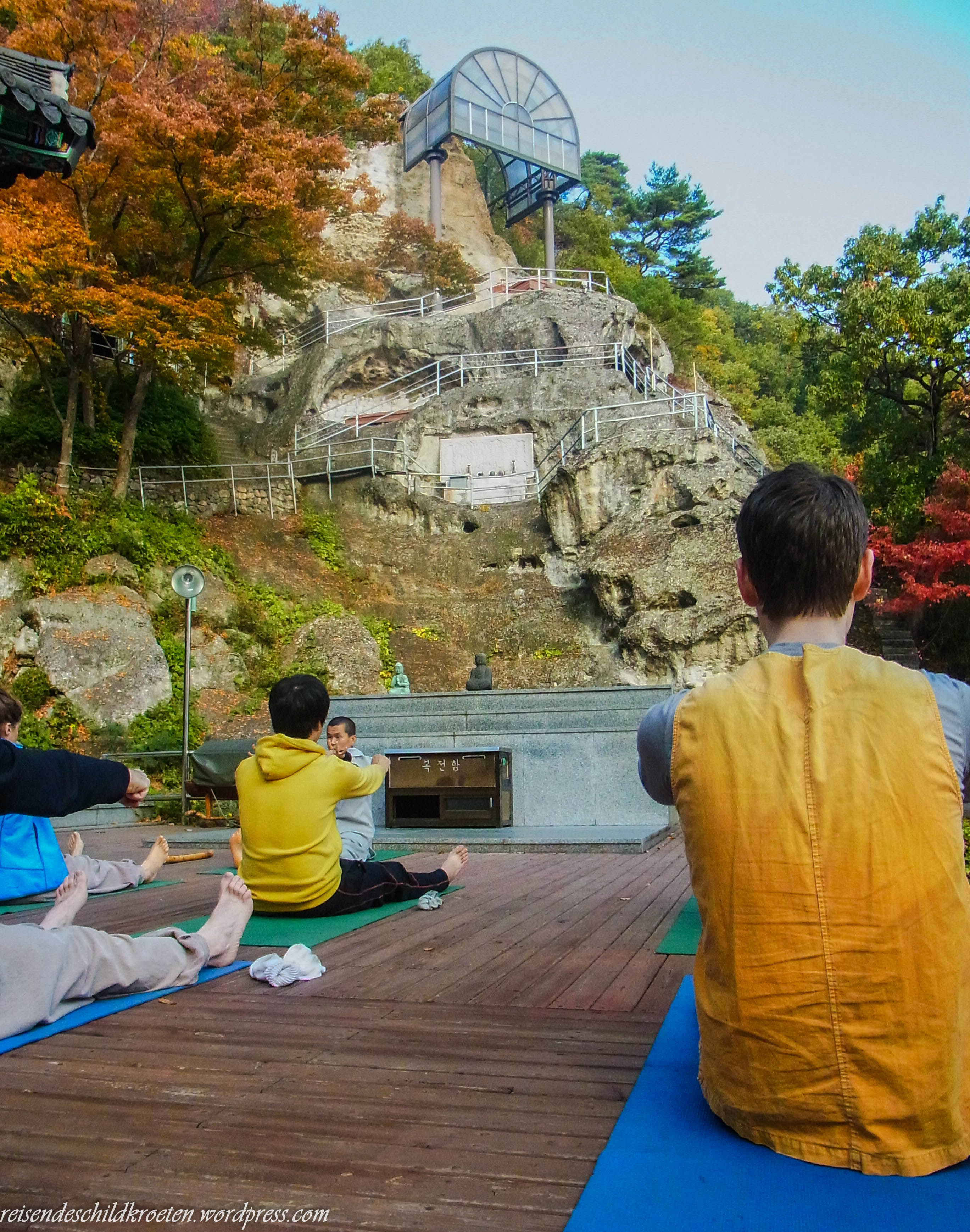 Kevin was more diligent than me.
Kevin was more diligent than me.
I’m not sure if we’re lucky of not of having tea time instead of 108 bows. The 108 bows is, as the name says, 108 prostrations in order to purify ourselves (and it sounded very unpleasant, considering my muscle soreness). The tea time, on the other hand was a sermon from the monk, while drinking tea. All in Korean of course.
The Korean Kevin translated a bit for us but it wasn’t the same.
The sunmudo demonstration that day was a bit special, as some Korean tourists came to see the spectacle, a traditional Korean fan dance, called Buchaechum, took also place. After the performance they left some alms to support the temple maintenance.
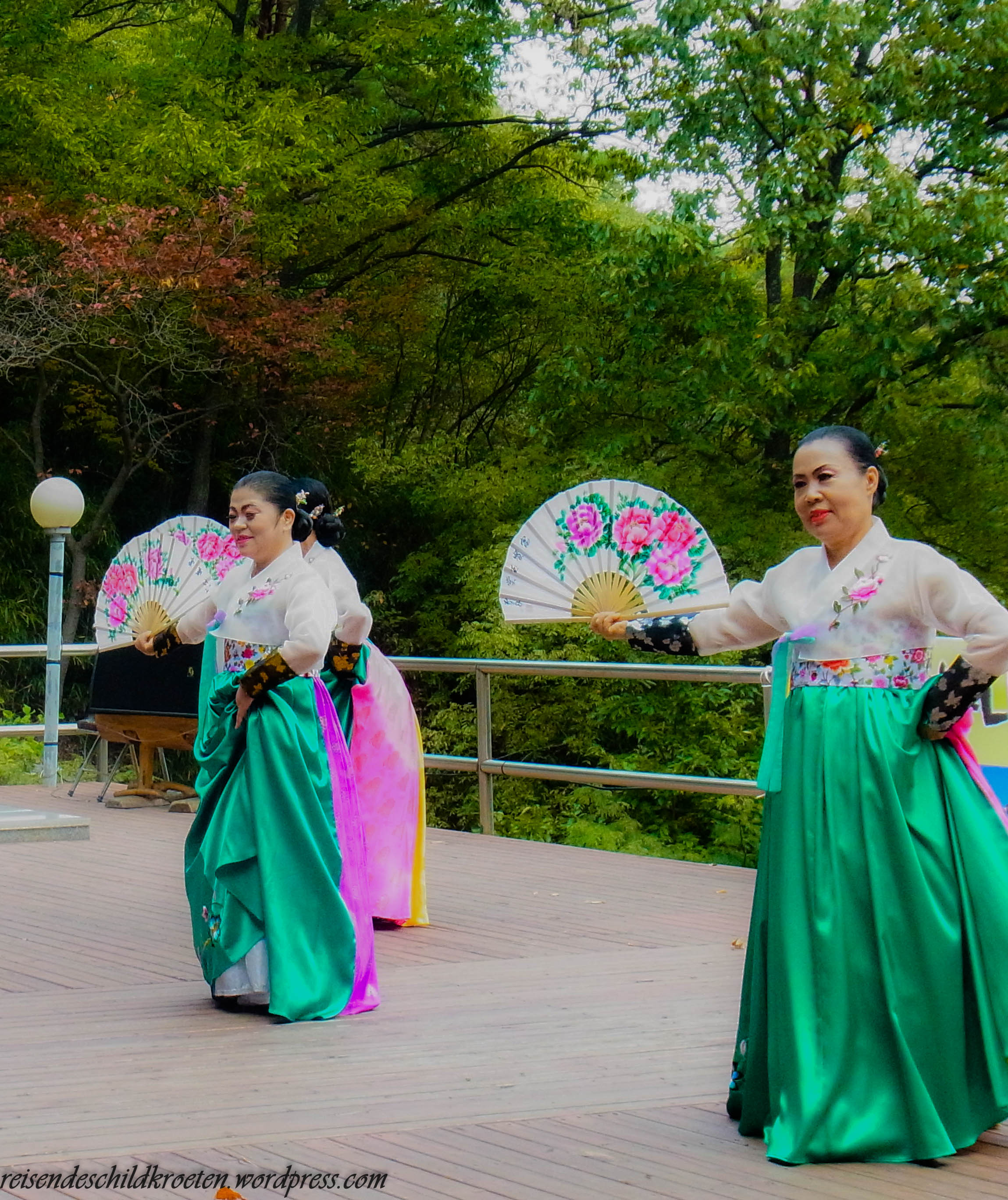 Buchaechum dance
Buchaechum dance
The community work varies during the year, as we’re there during November our work consisted mainly in collecting the leaves from the water drains.
We had enough time between the activities to explore all the temple domains and to take some nice pictures.
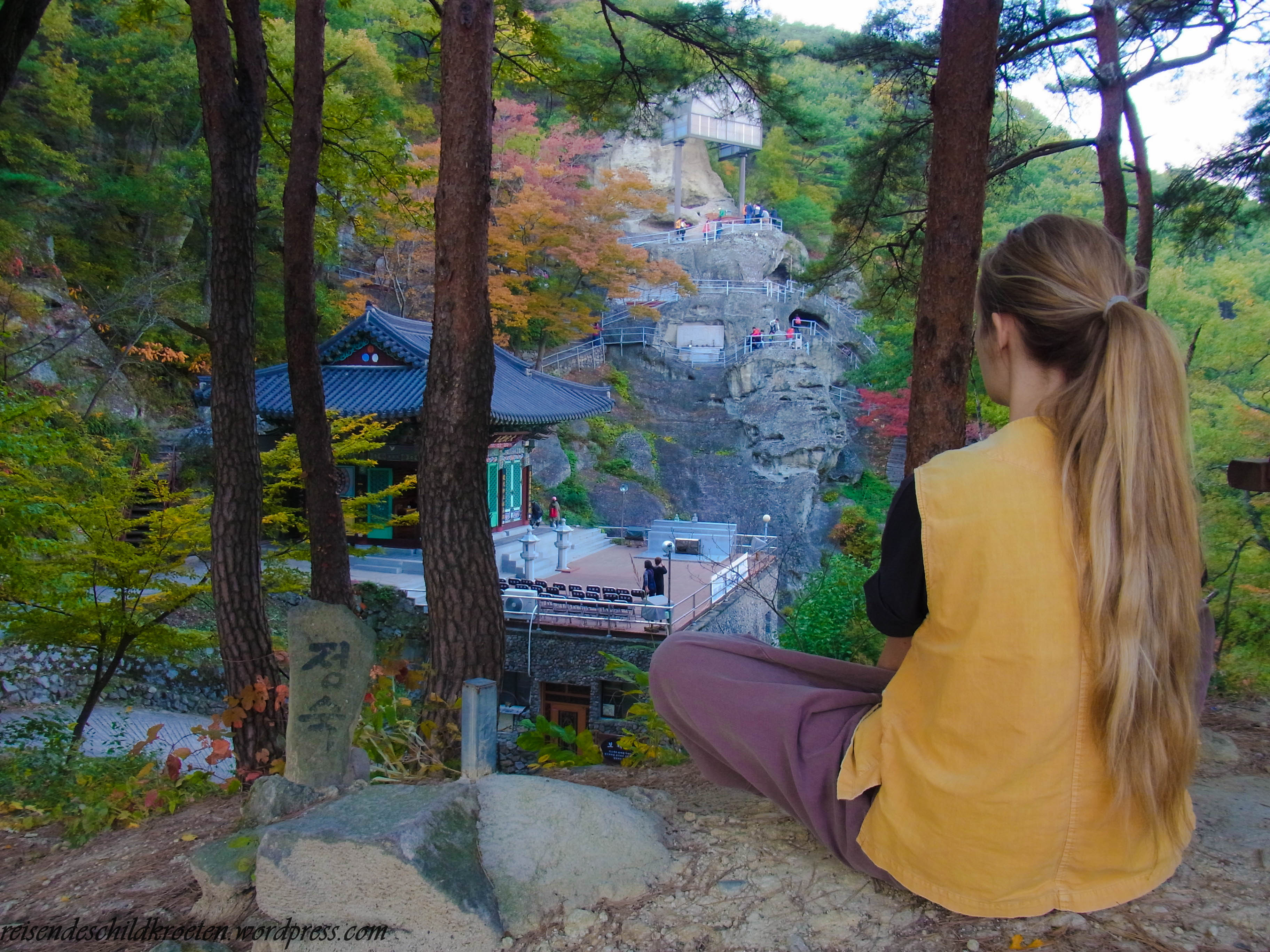
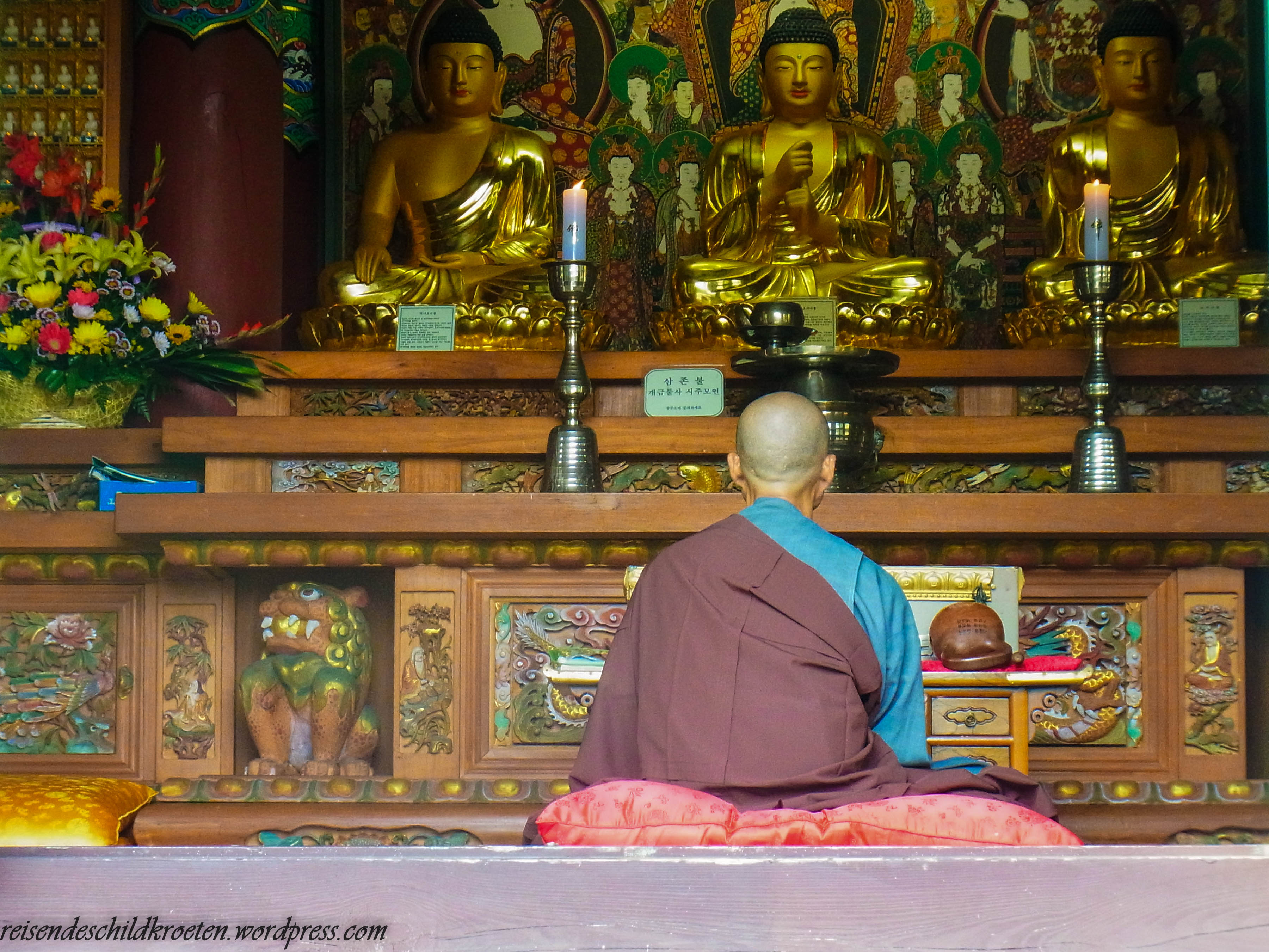
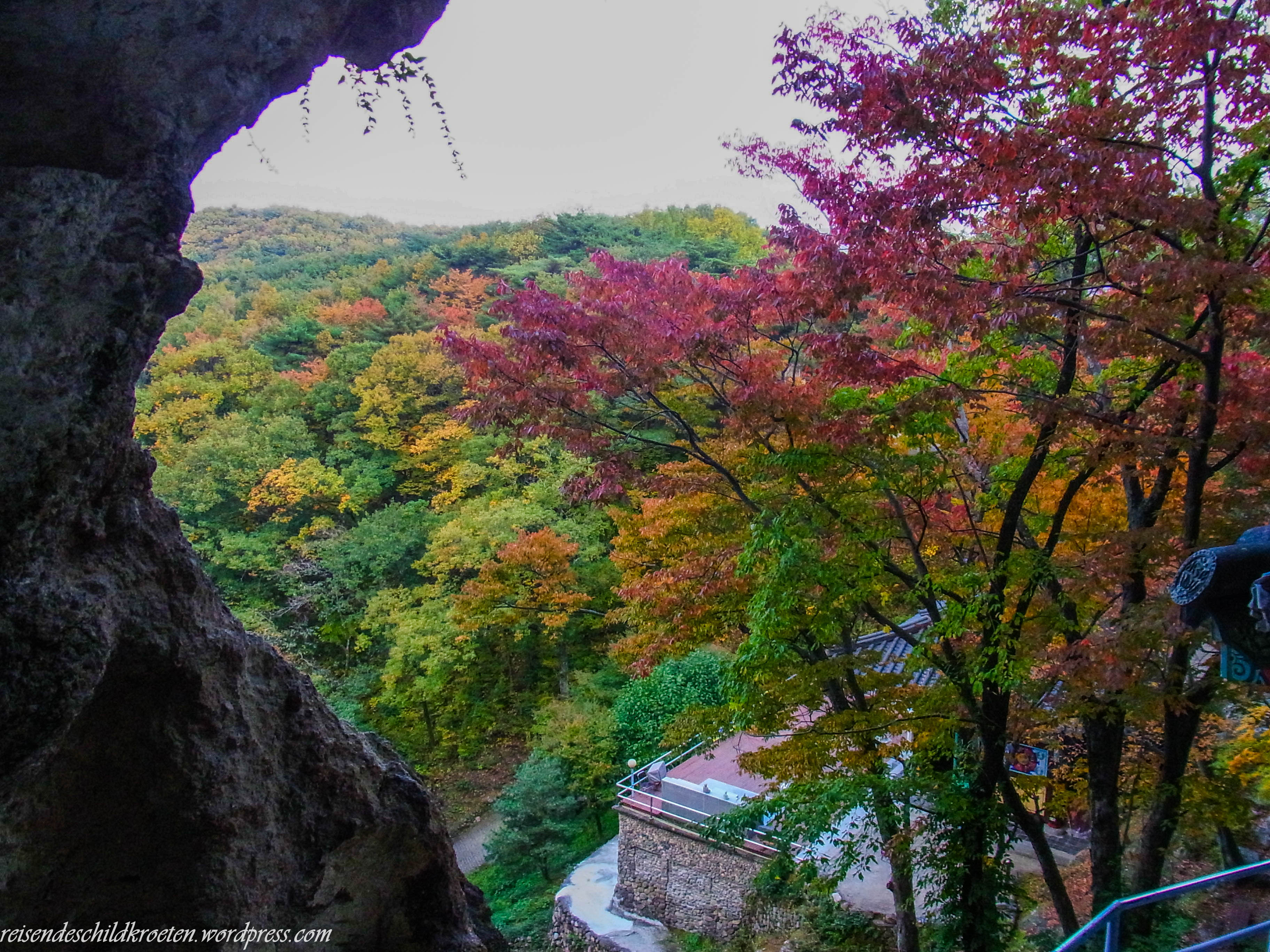
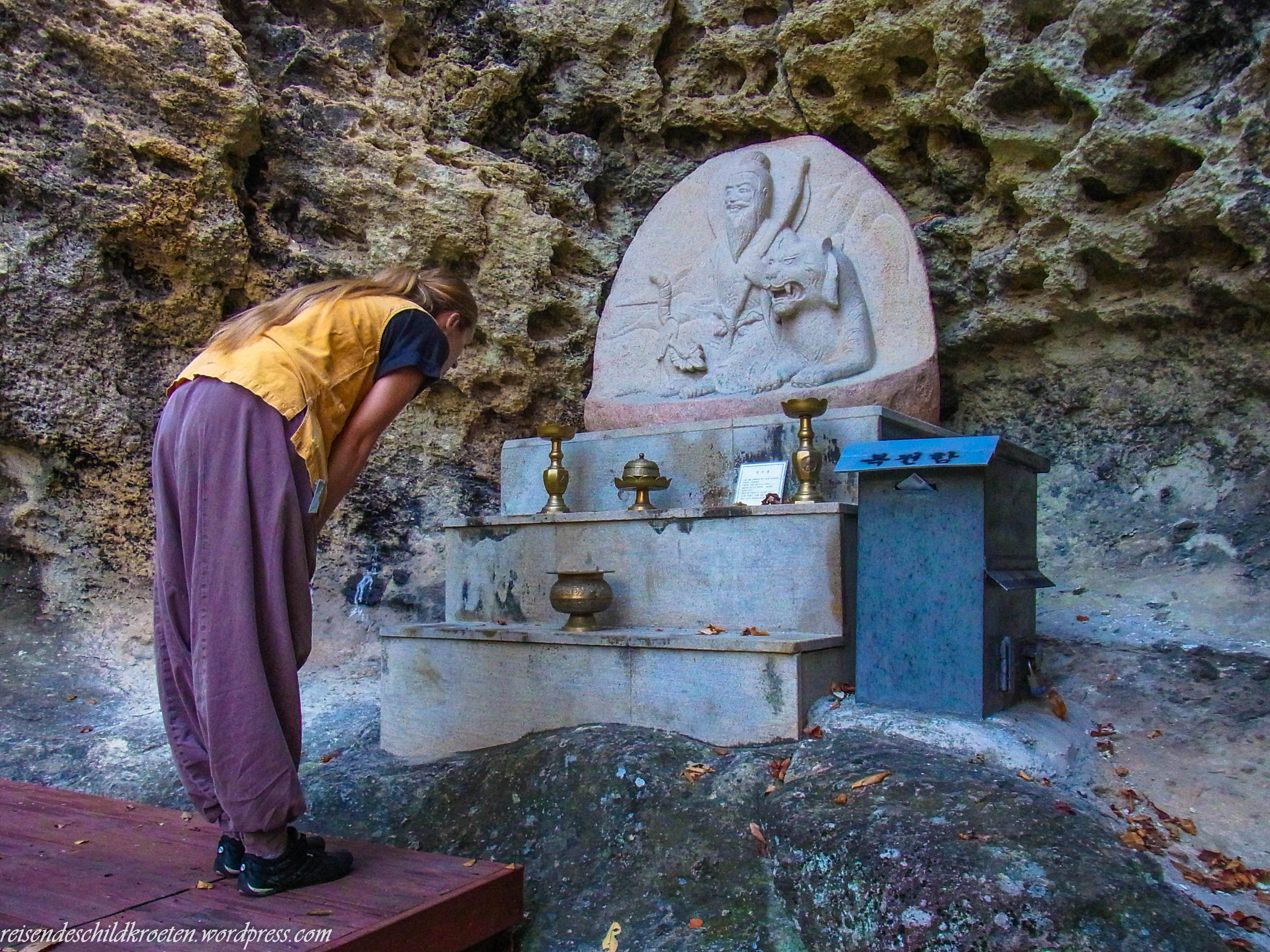

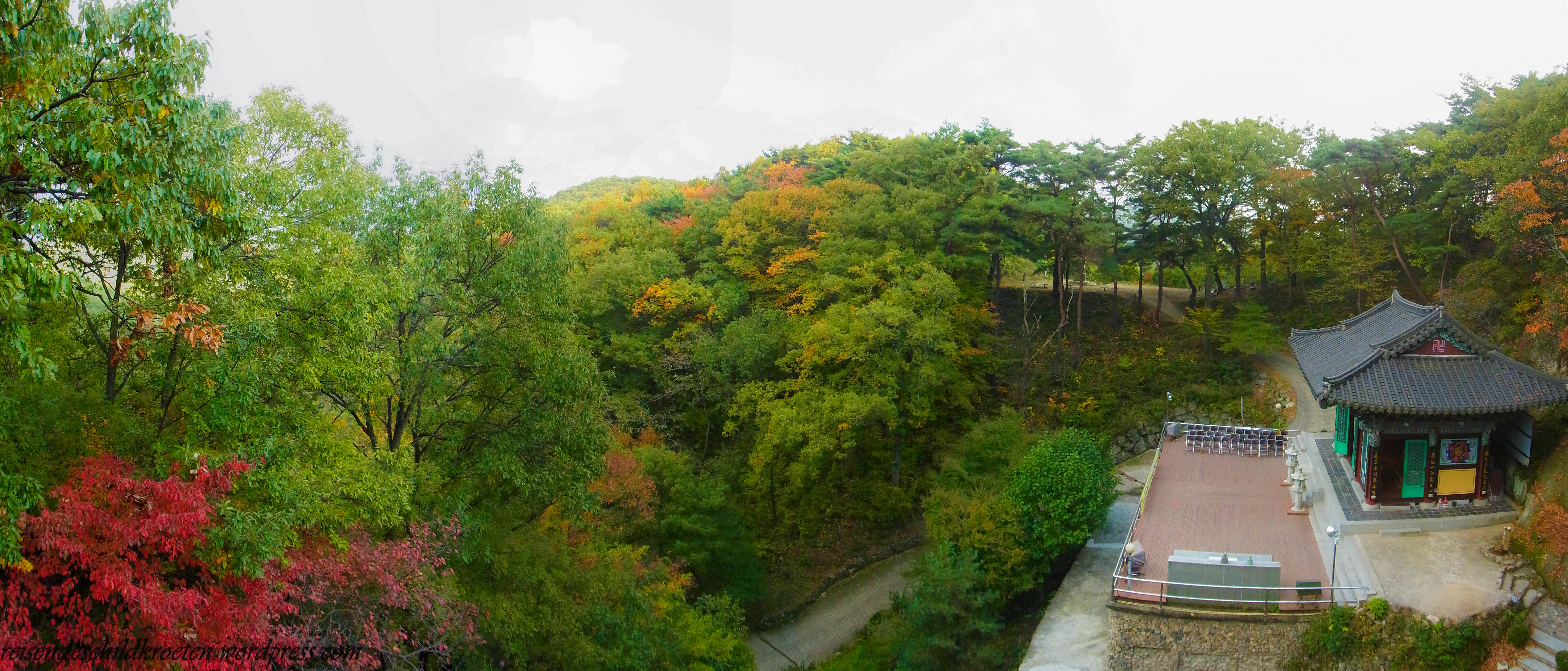
 Maae Amitabul
Maae Amitabul
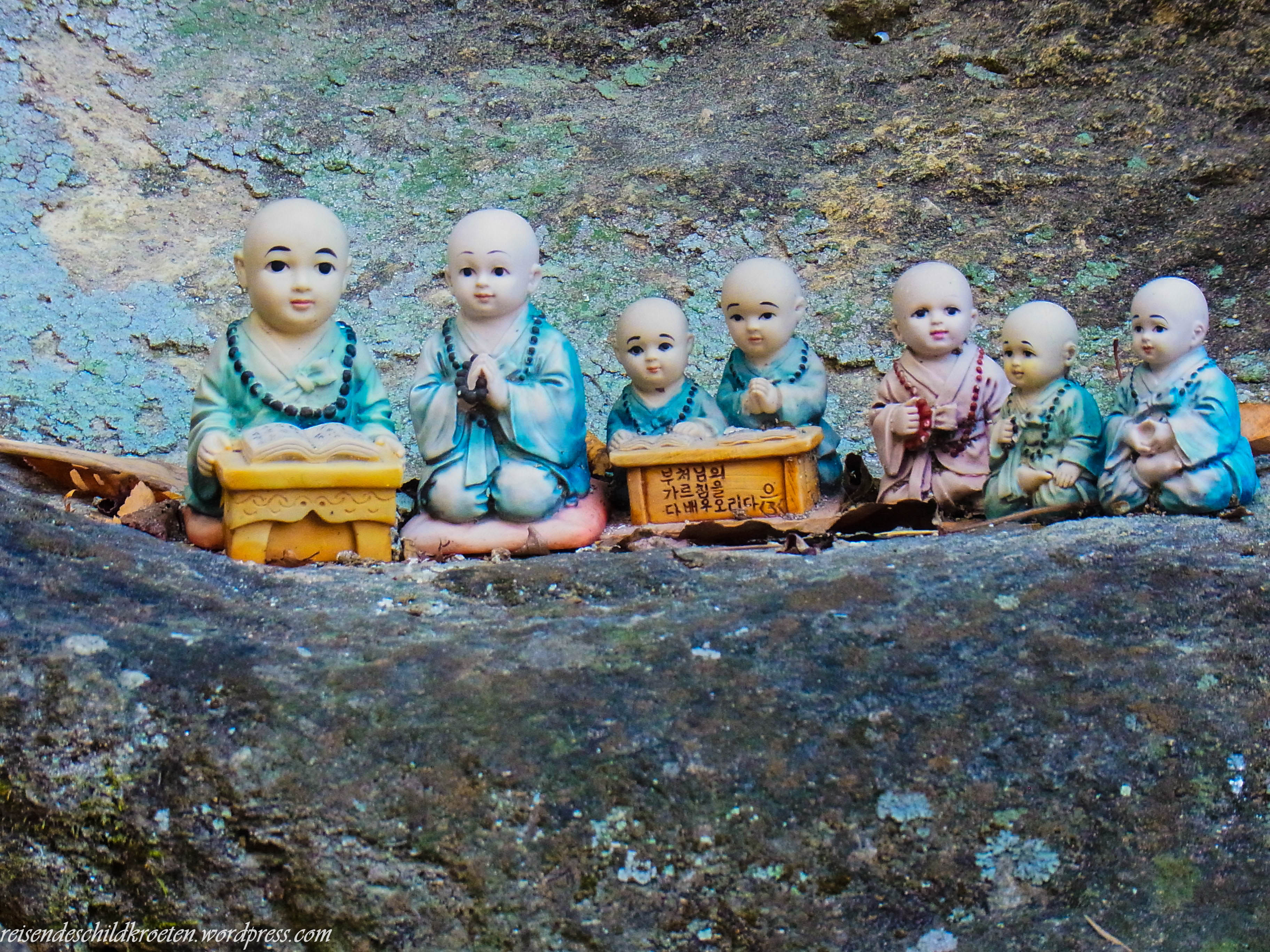
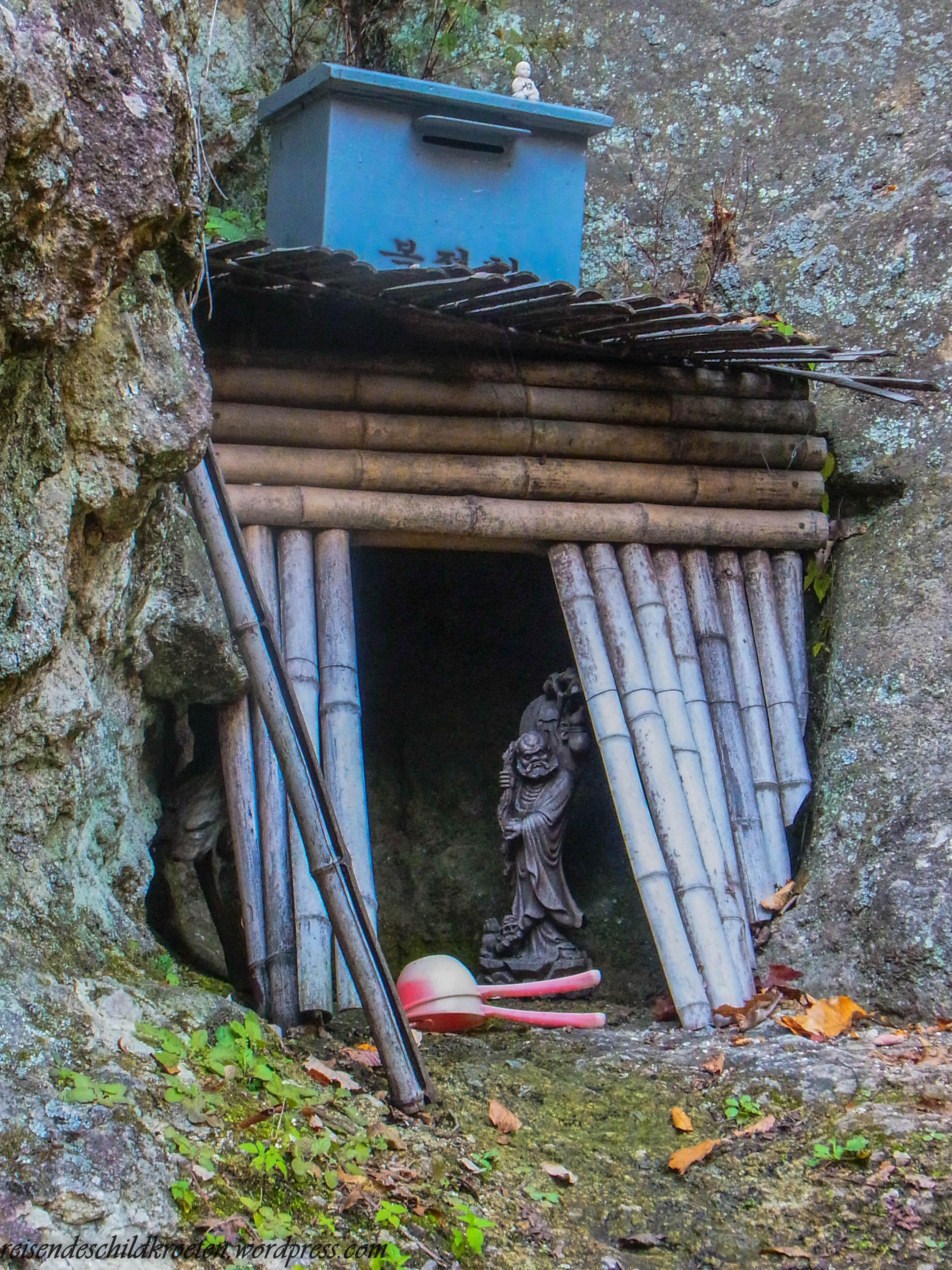
Super exhausted but satisfied we headed to the last part of our trip.
One bus later we’re in Daegu, the third biggest city from Korea and the hometown from my friend Yongtae.
We stayed only one night there, so after taking a cold shower in the apartment (we couldn’t figure out how to connect the heating) we met Yongtae for a walk through the city and a nice dinner.
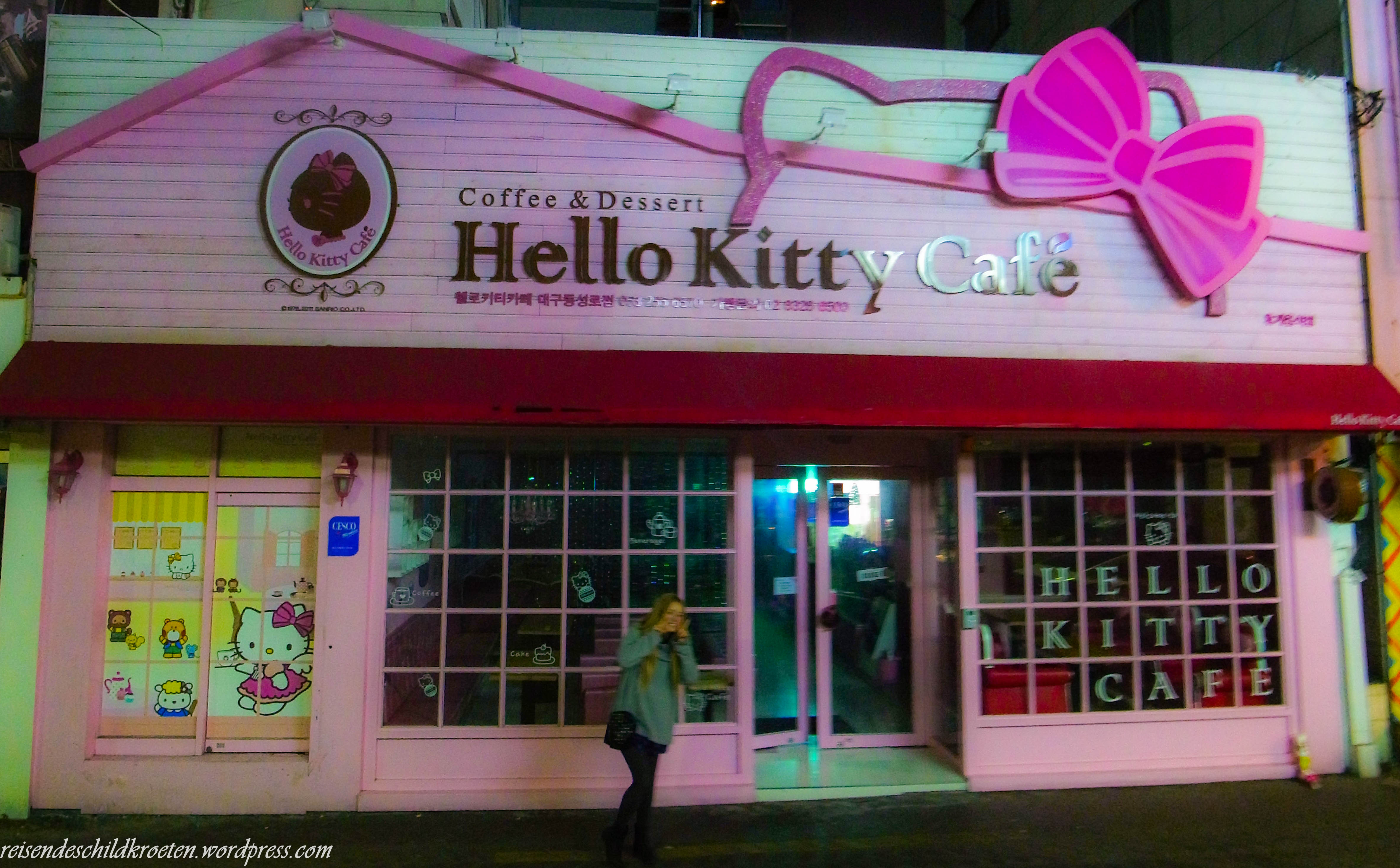 Unfortunately the dinner wasn’t here 😦
Unfortunately the dinner wasn’t here 😦
 Dongseongno
Dongseongno
I wanna thank him and his parents for the hospitality, he was a great guide and her mom was so sweet, I still have some of the Korean tea that she gave to me.
We found the train station next day thanks to our mimic skills, ready to spend our last day in Seoul.
This time the apartment was centermost and with great views.
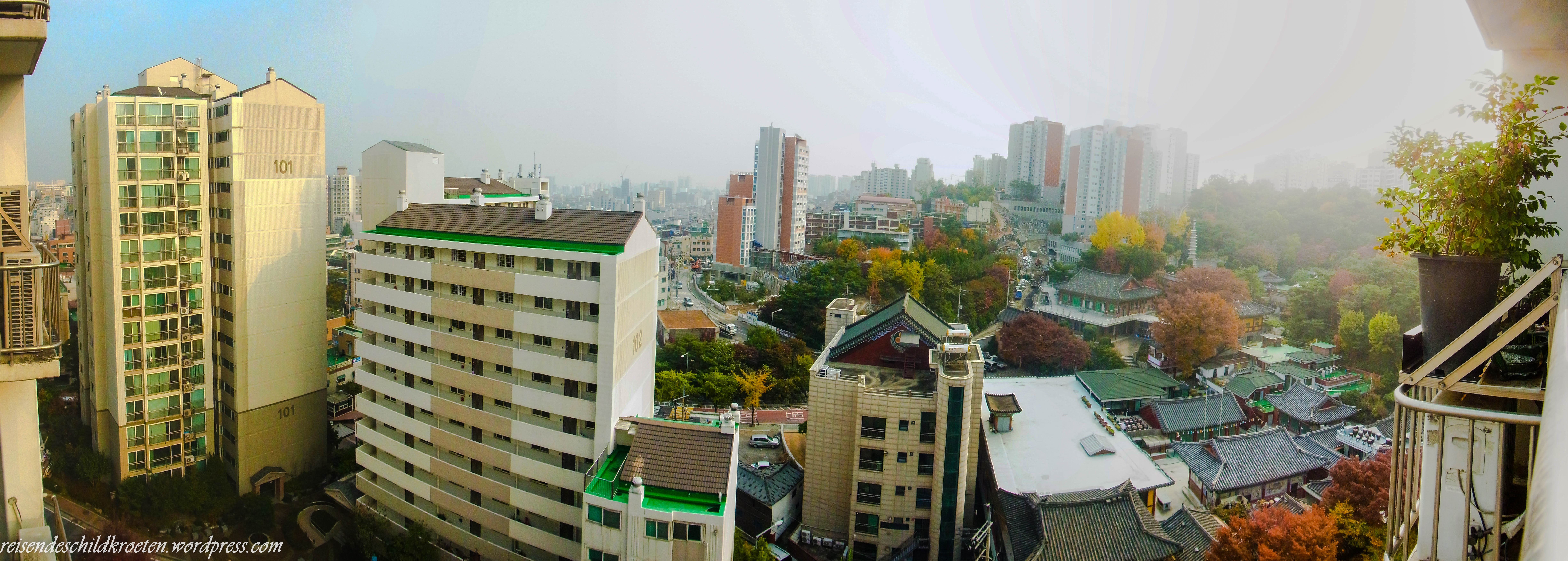
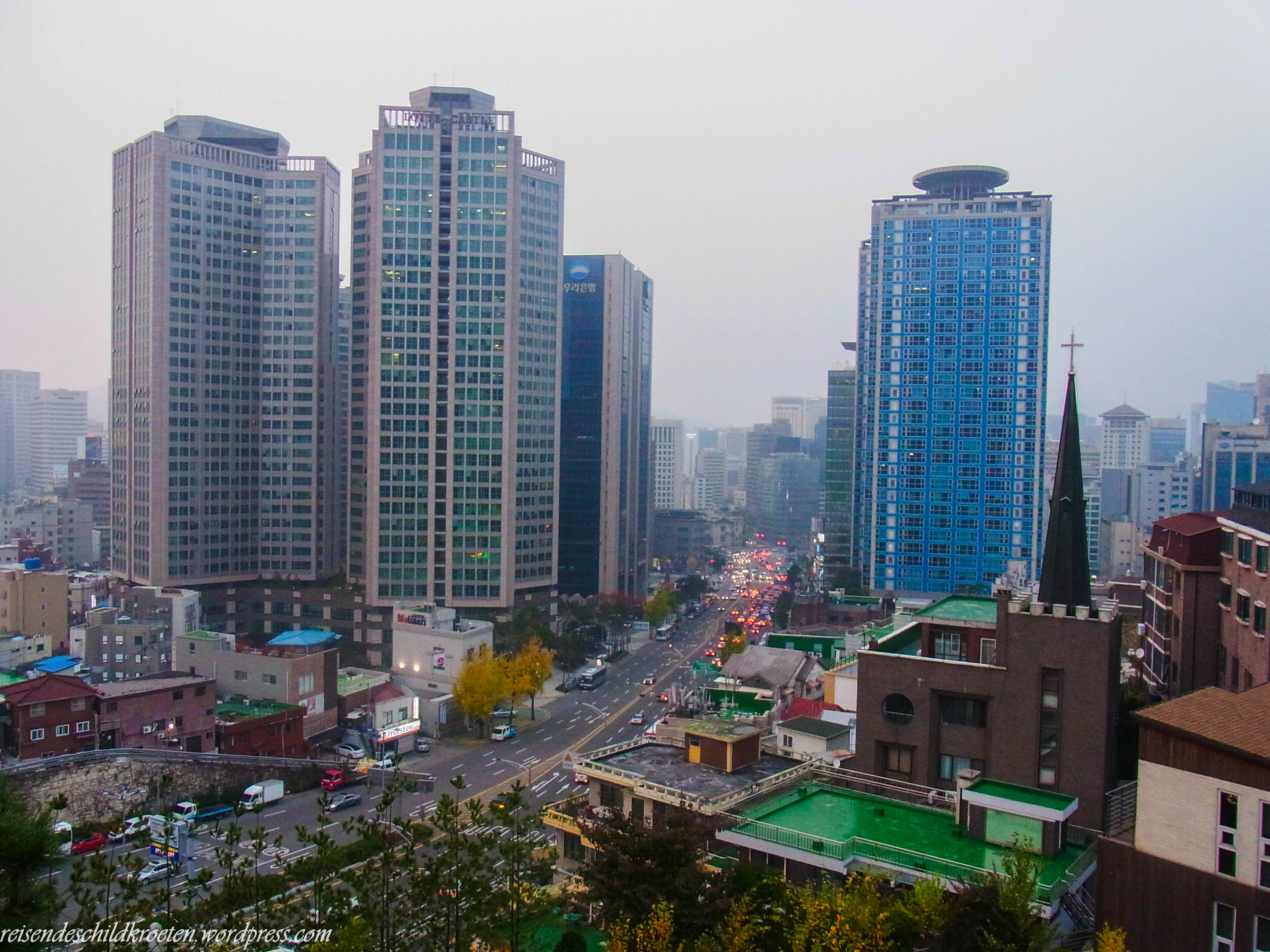
We decided to use our last day in Seoul to visit the Seoul Tower. If you’re thinking on going to the top using the cableway instead of walking, think it twice. Our idea was to go up with it and to walk on our way down…the queue was so huge that we could have used the time in line to go up and down 3 times! Furthermore, we thought that the price of the cableway included the entrance to the top of the tower, as it was pretty expensive, but it wasn’t the case.
Whenever we thought that we’re already at the end a new room full of people showed up in front of us. The only good think we got from it was to meet a very sweet Korean baby that got hypnotized by Kevin eyes. I guess he had never seen blue eyes until then!
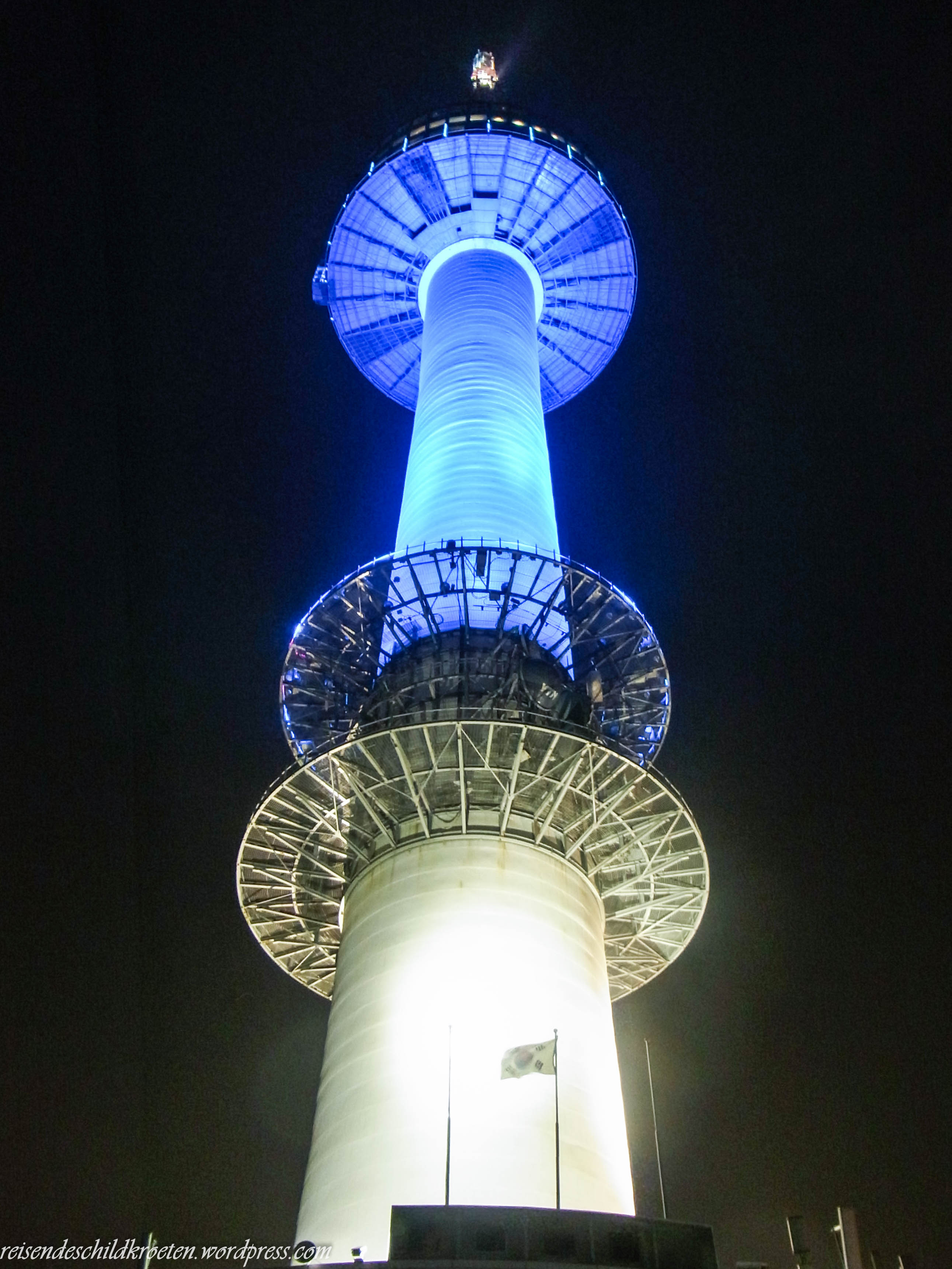 The Seoul Tower
The Seoul Tower
 At the top
At the top
 Views from the tower
Views from the tower
The perfect finale for our trip was to go back to the restaurant that we found by mistake the day that we went to Lotteworld. Kevin ordered so many dumplings that the lady was so impressed to tell the other costumers about his feat!
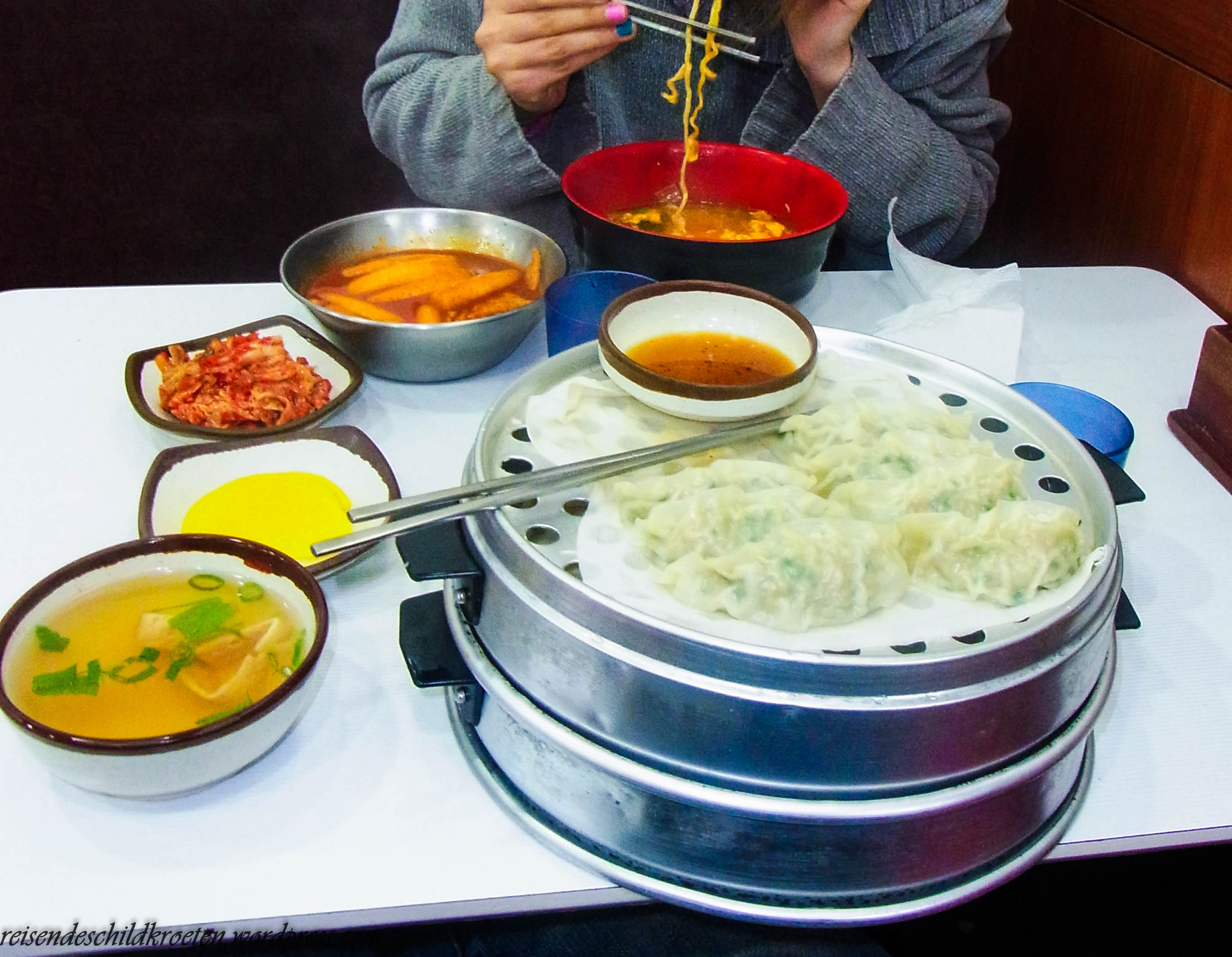 He ordered even more…40 in total!
He ordered even more…40 in total!
 Approaching Tsurugaoka Hachimangū
Approaching Tsurugaoka Hachimangū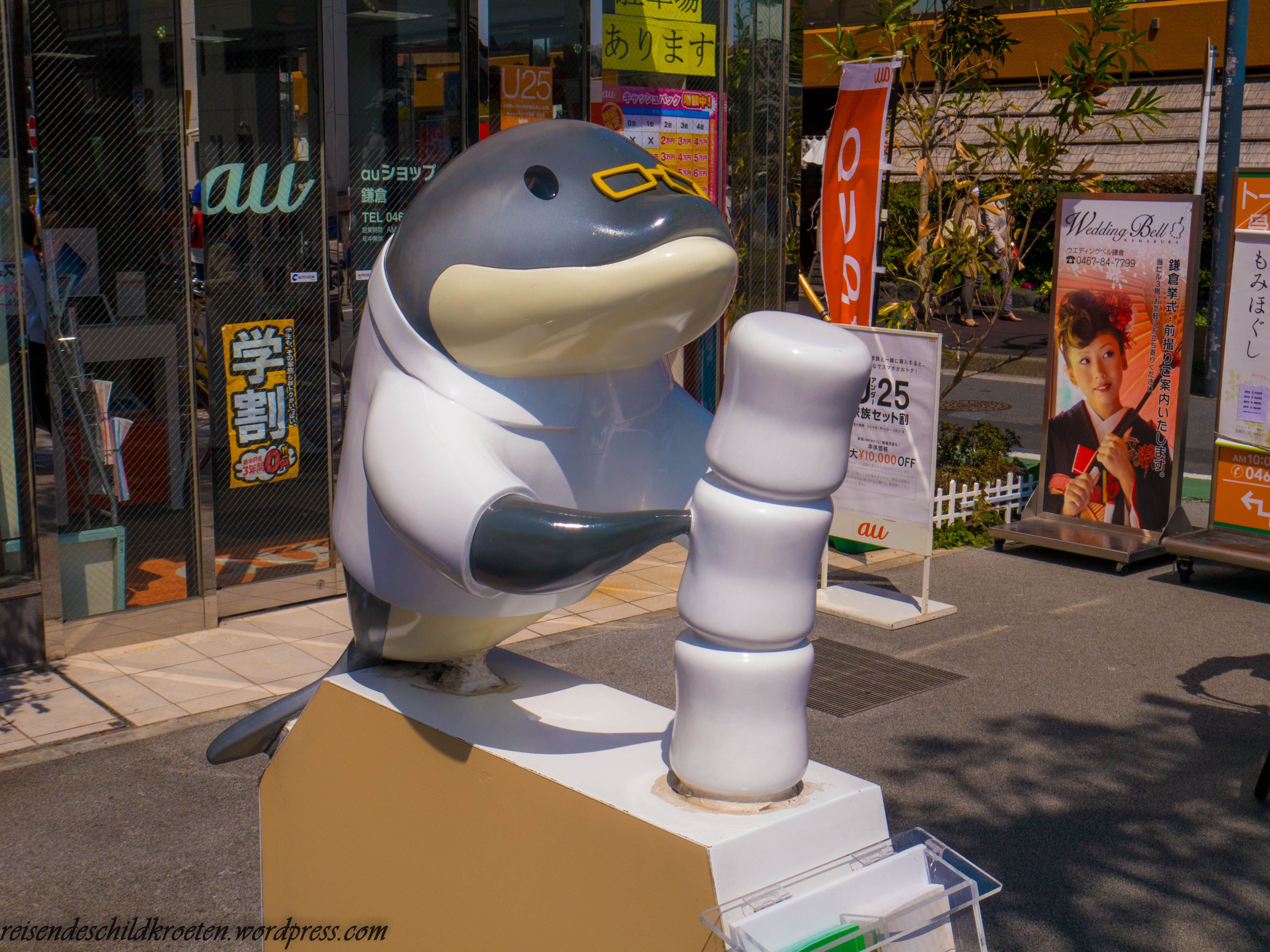 Kawaii dentist on the way to the shrine
Kawaii dentist on the way to the shrine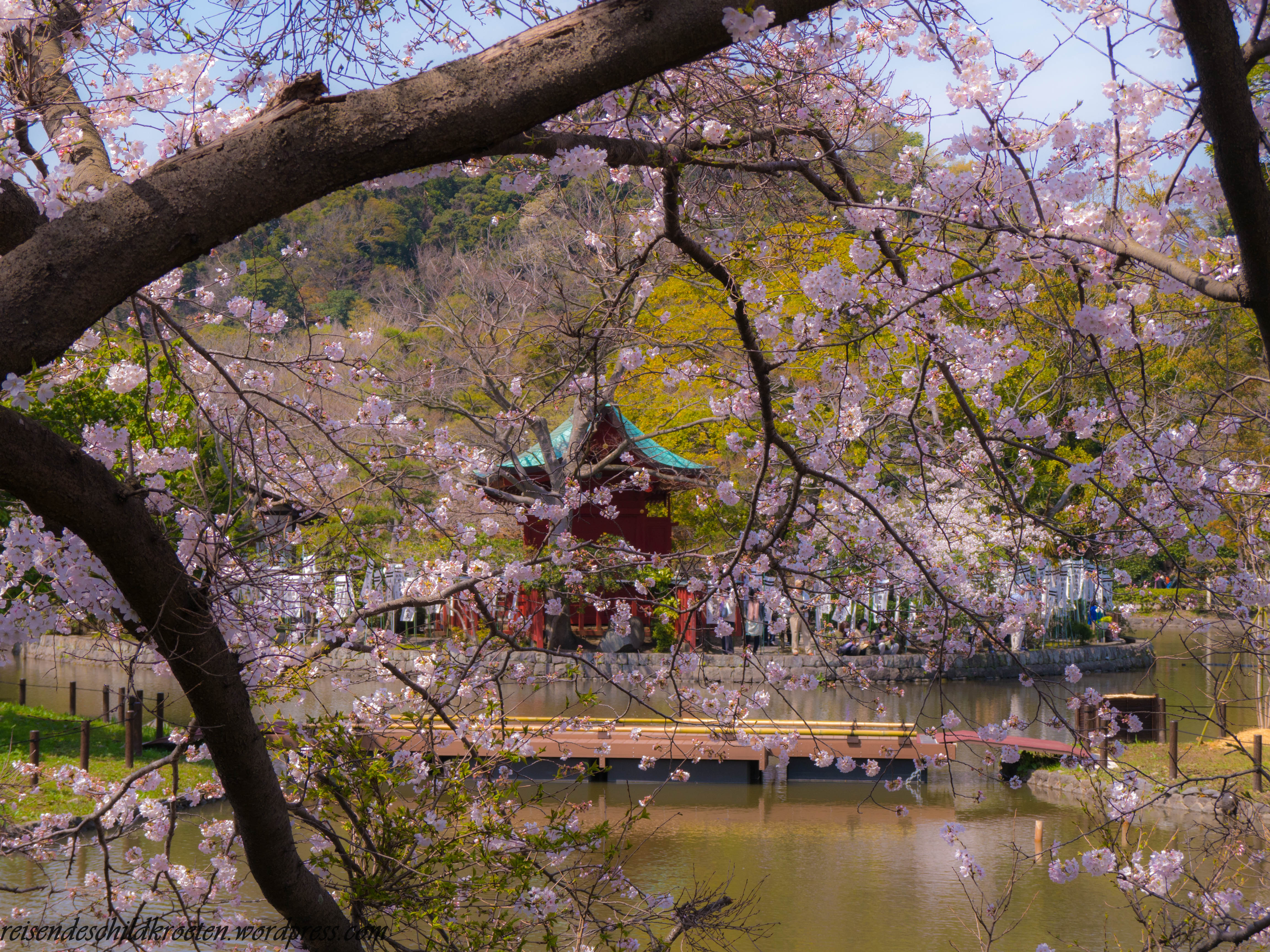 The Hataage Benzaiten Sub-shrine
The Hataage Benzaiten Sub-shrine 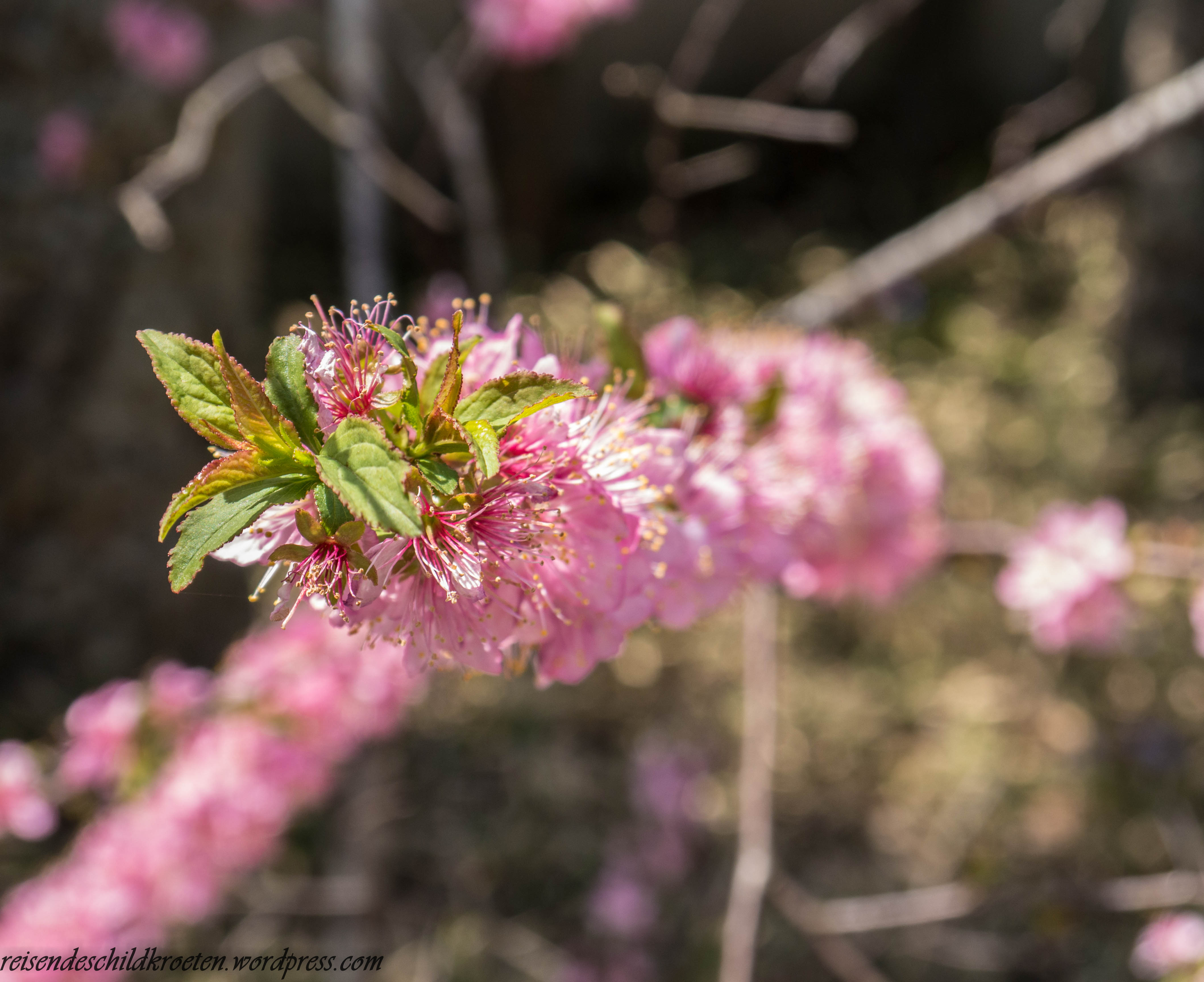 The cherry blossoms always improving the views!
The cherry blossoms always improving the views!

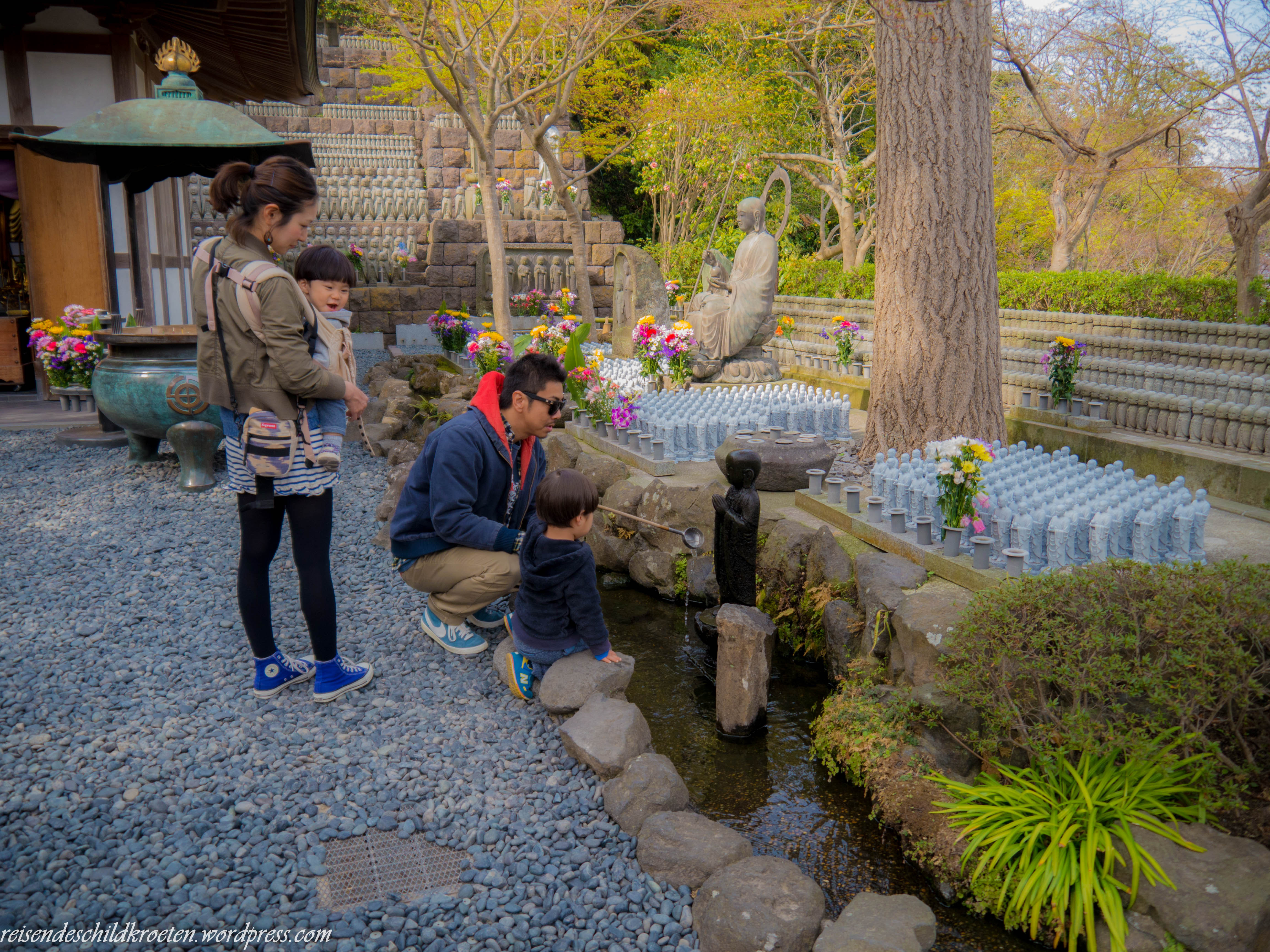 A japanese family visiting the temple
A japanese family visiting the temple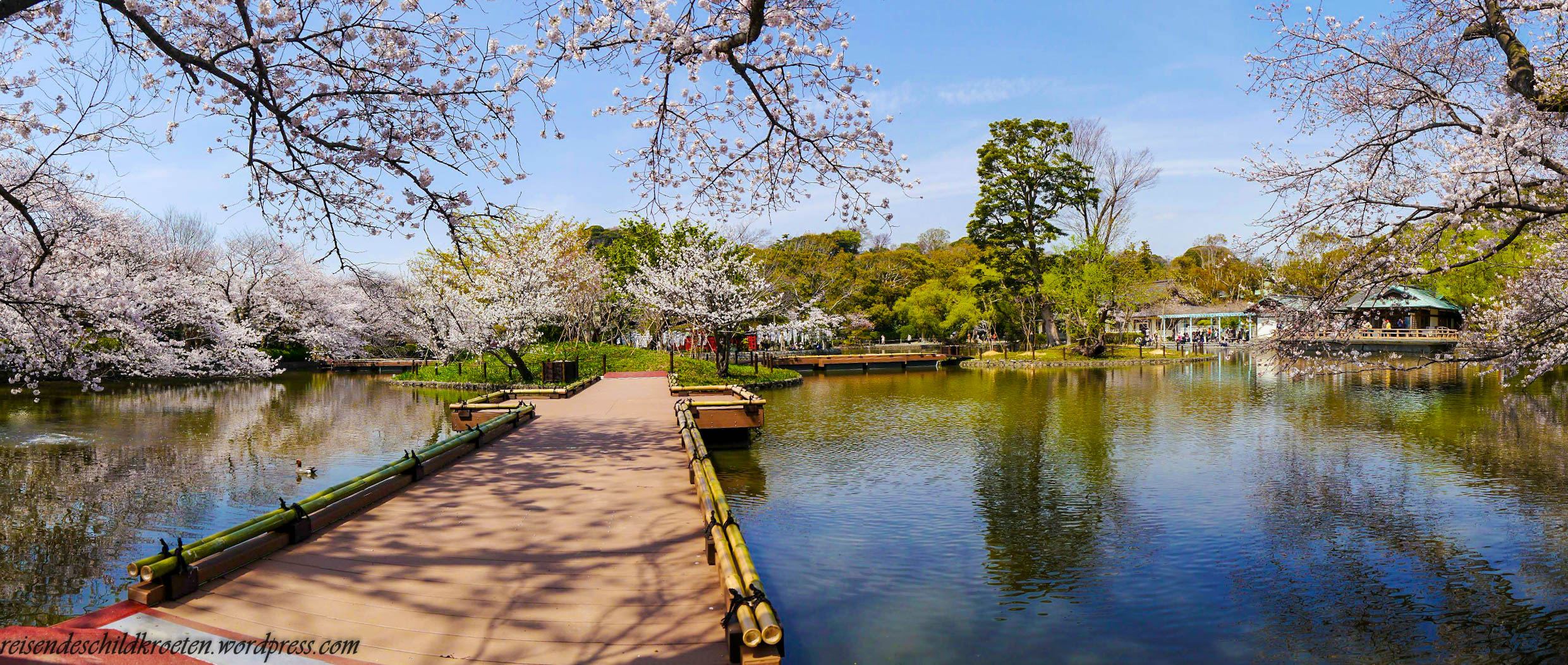 Minamoto pond at the shrine
Minamoto pond at the shrine
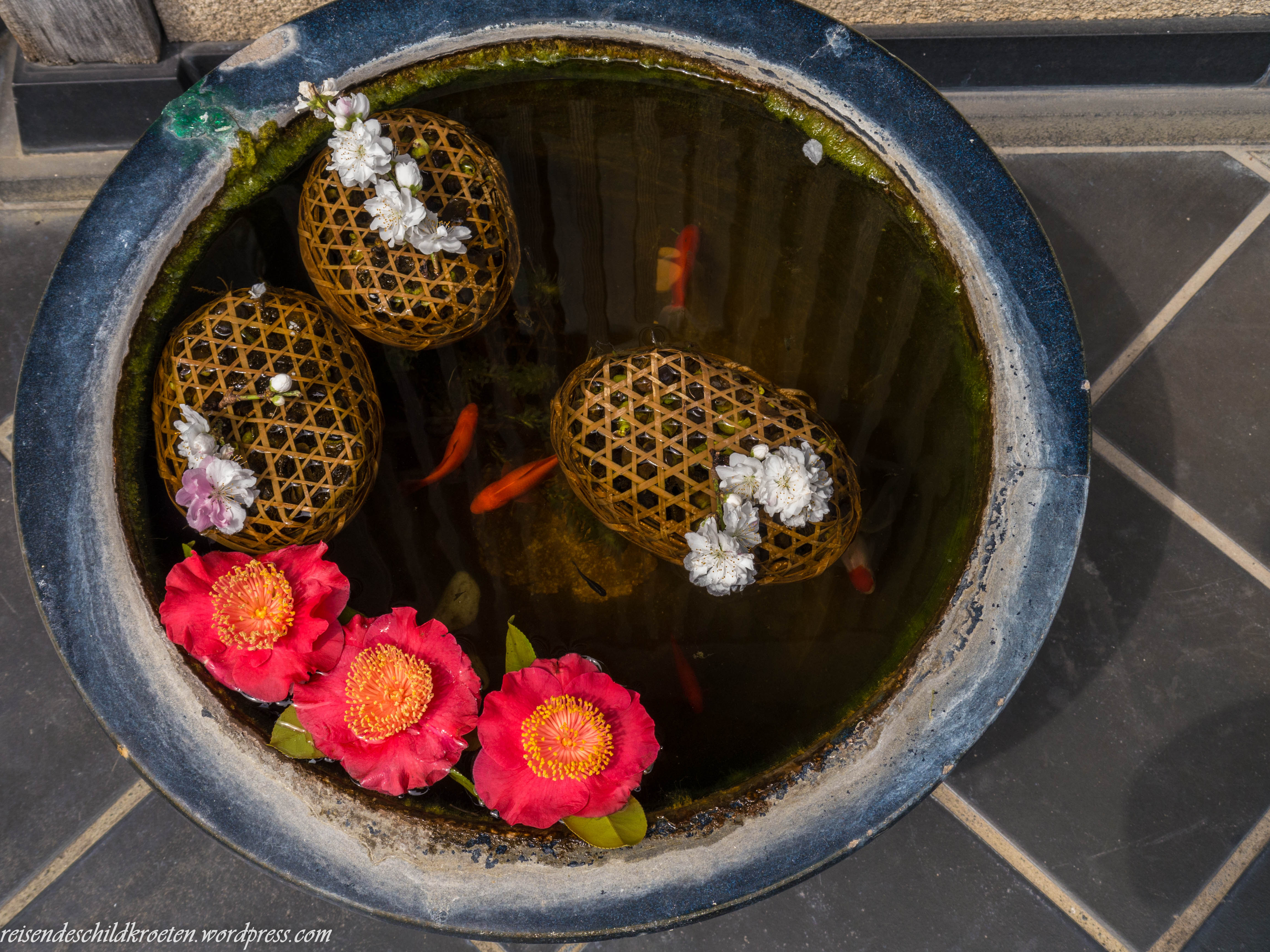
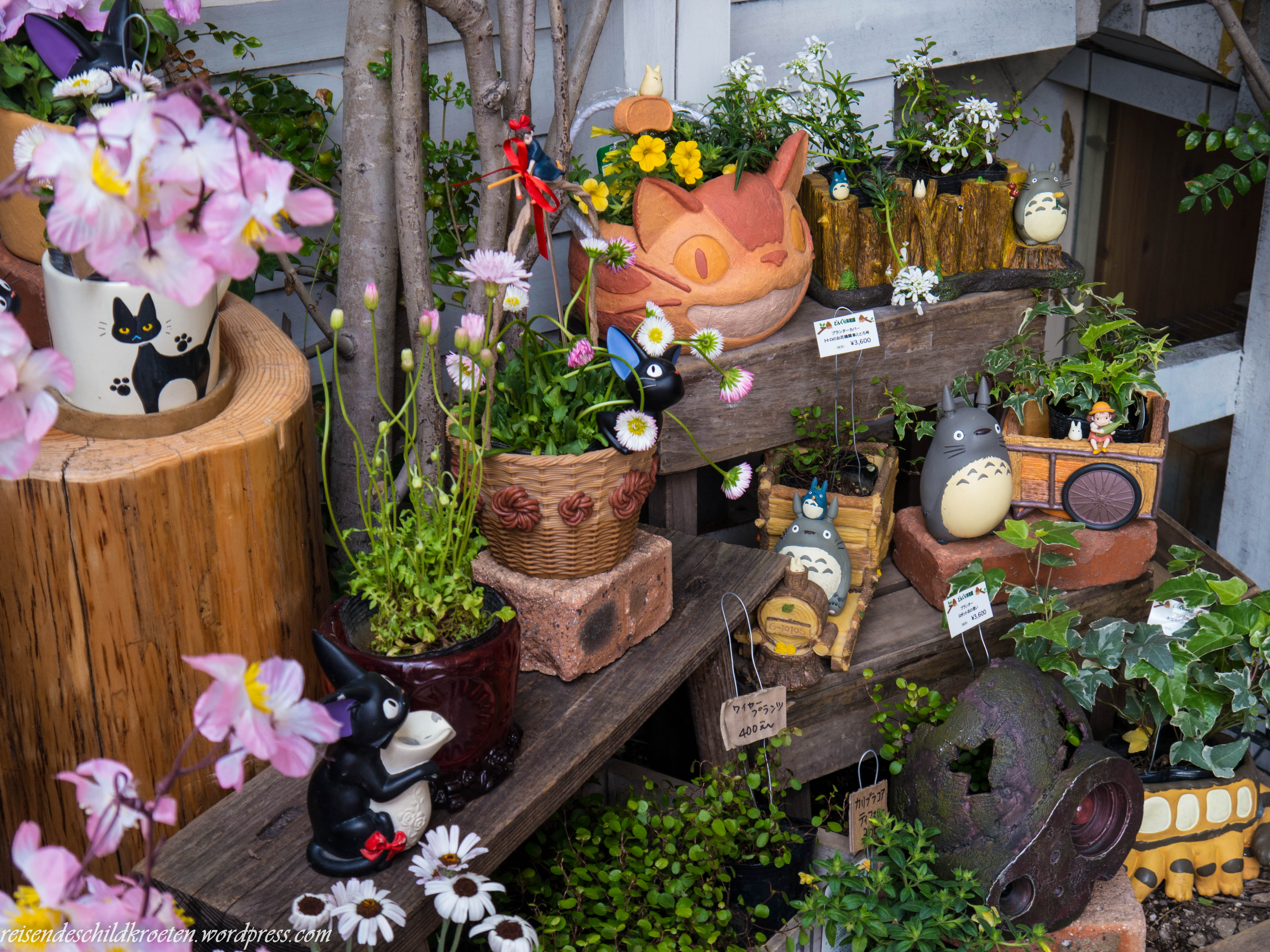 My dream garden
My dream garden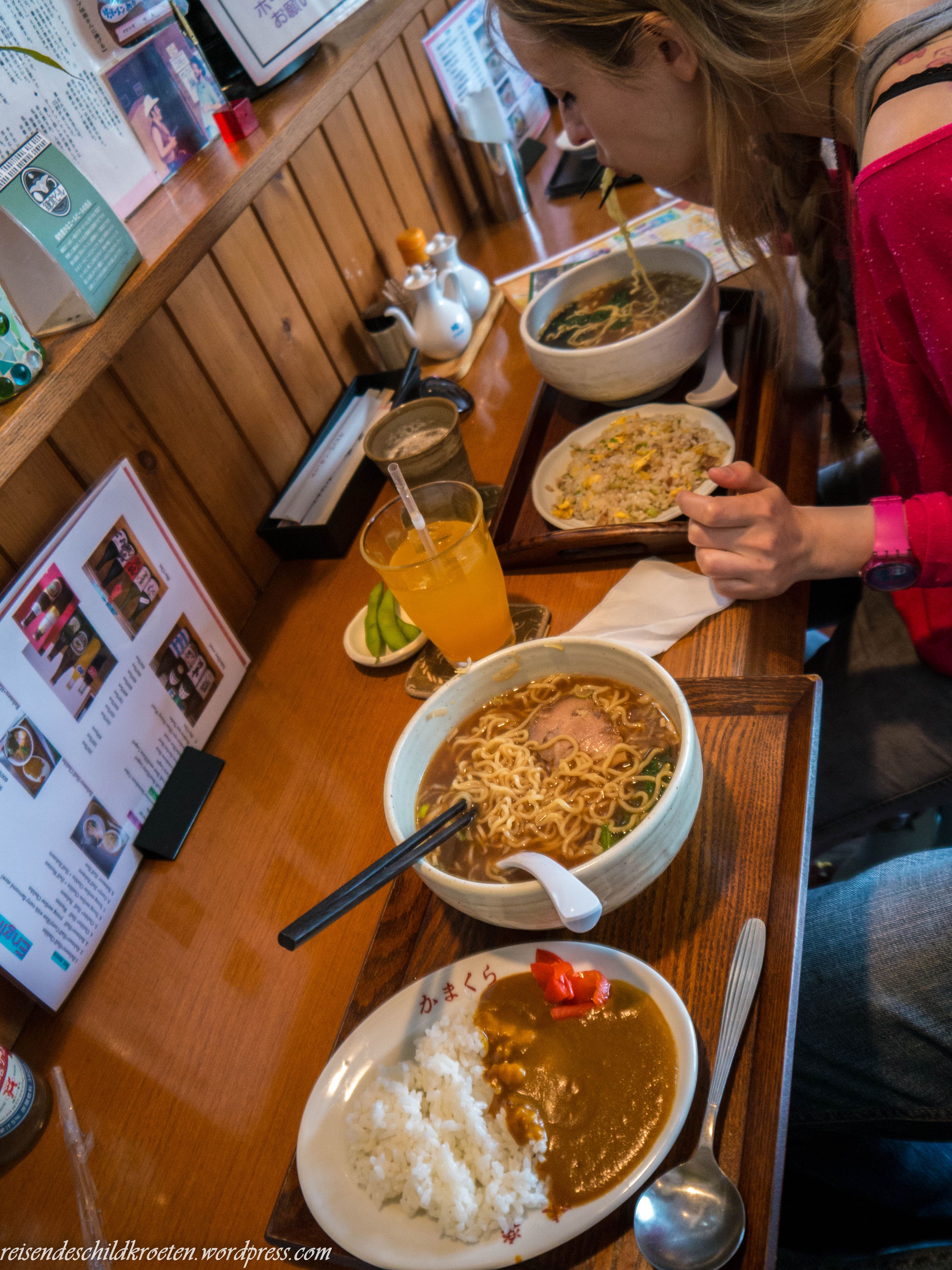 It was worth the wait
It was worth the wait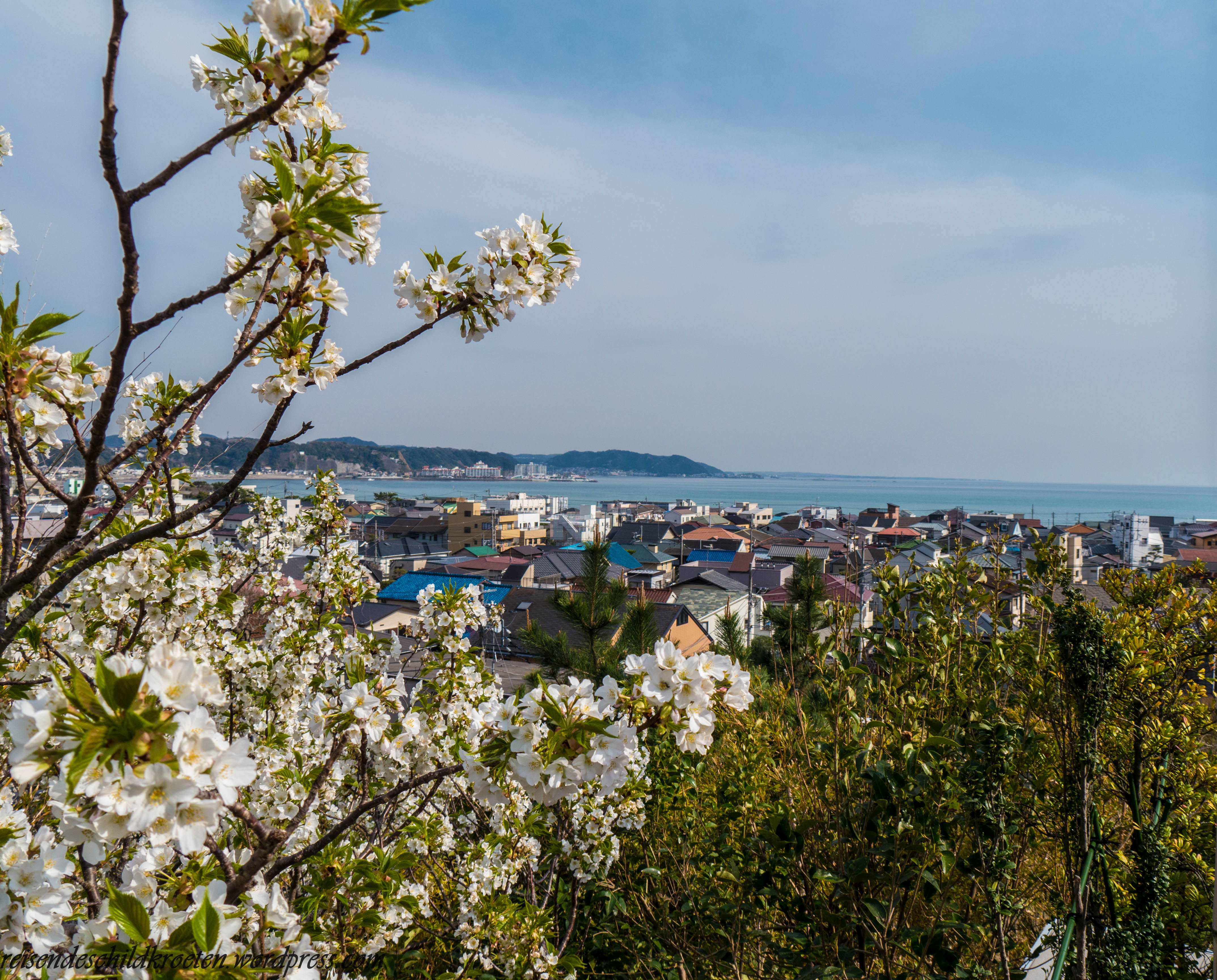 View of Yuigahama beach
View of Yuigahama beach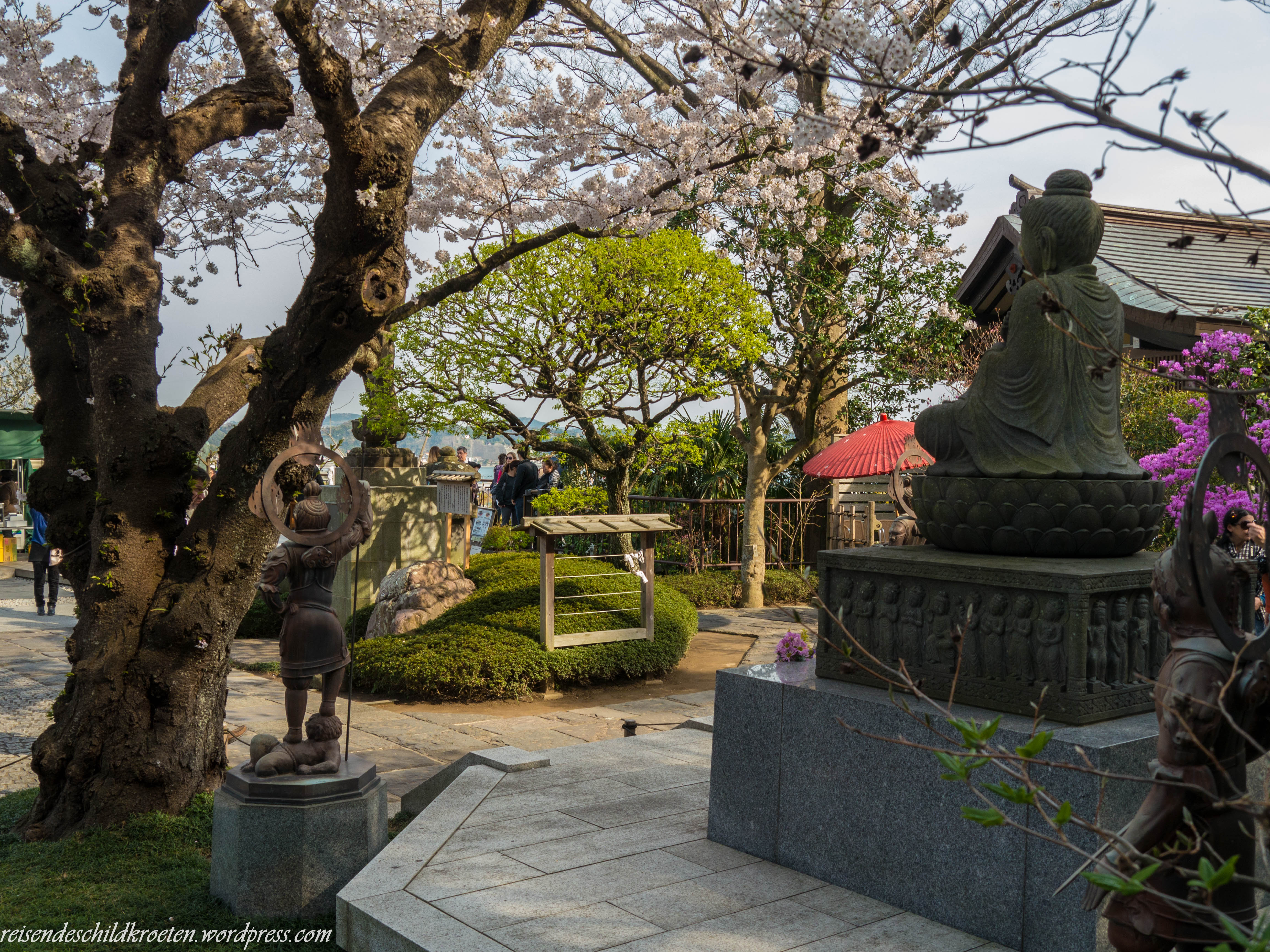
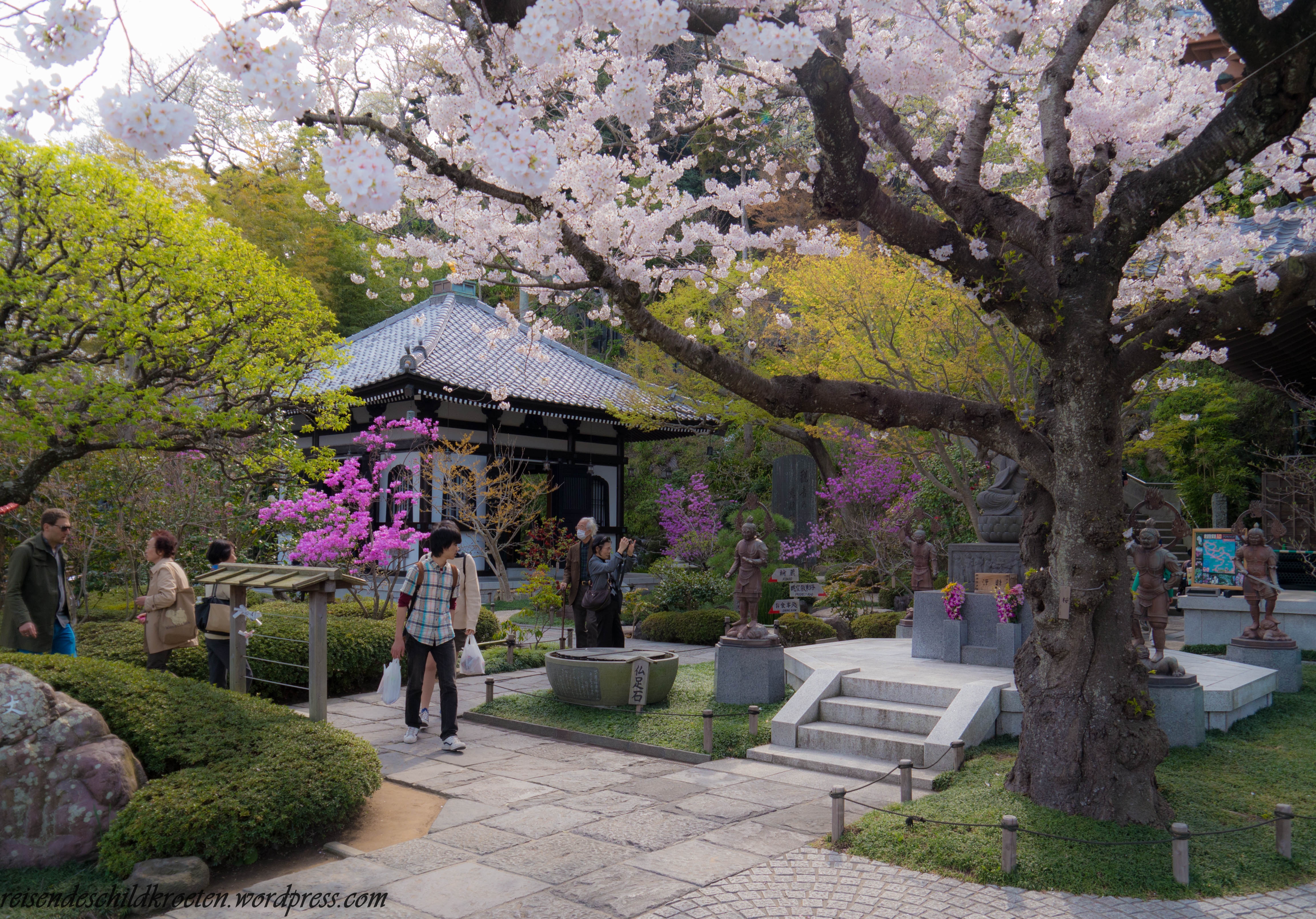 Hase-dera grounds
Hase-dera grounds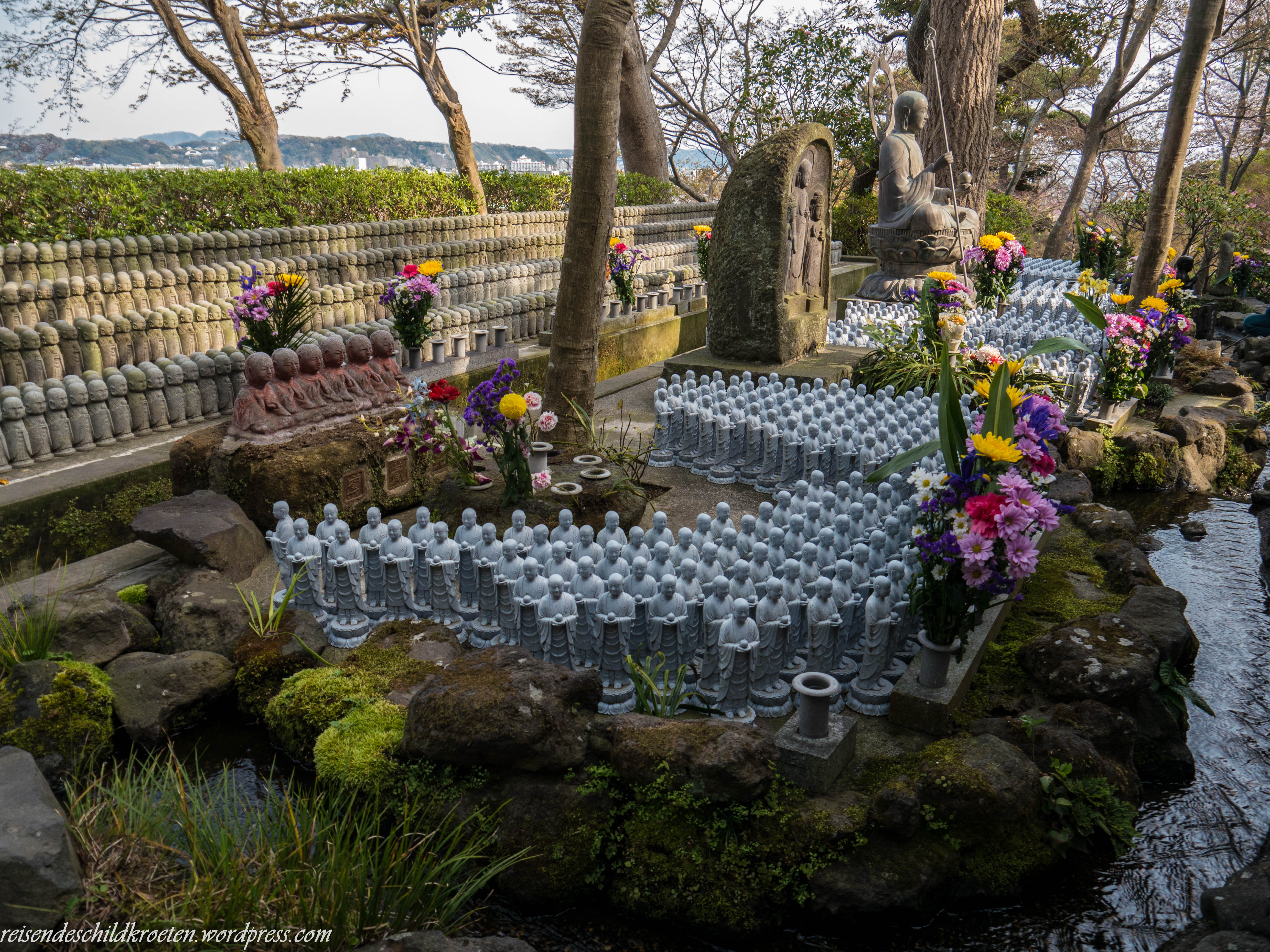
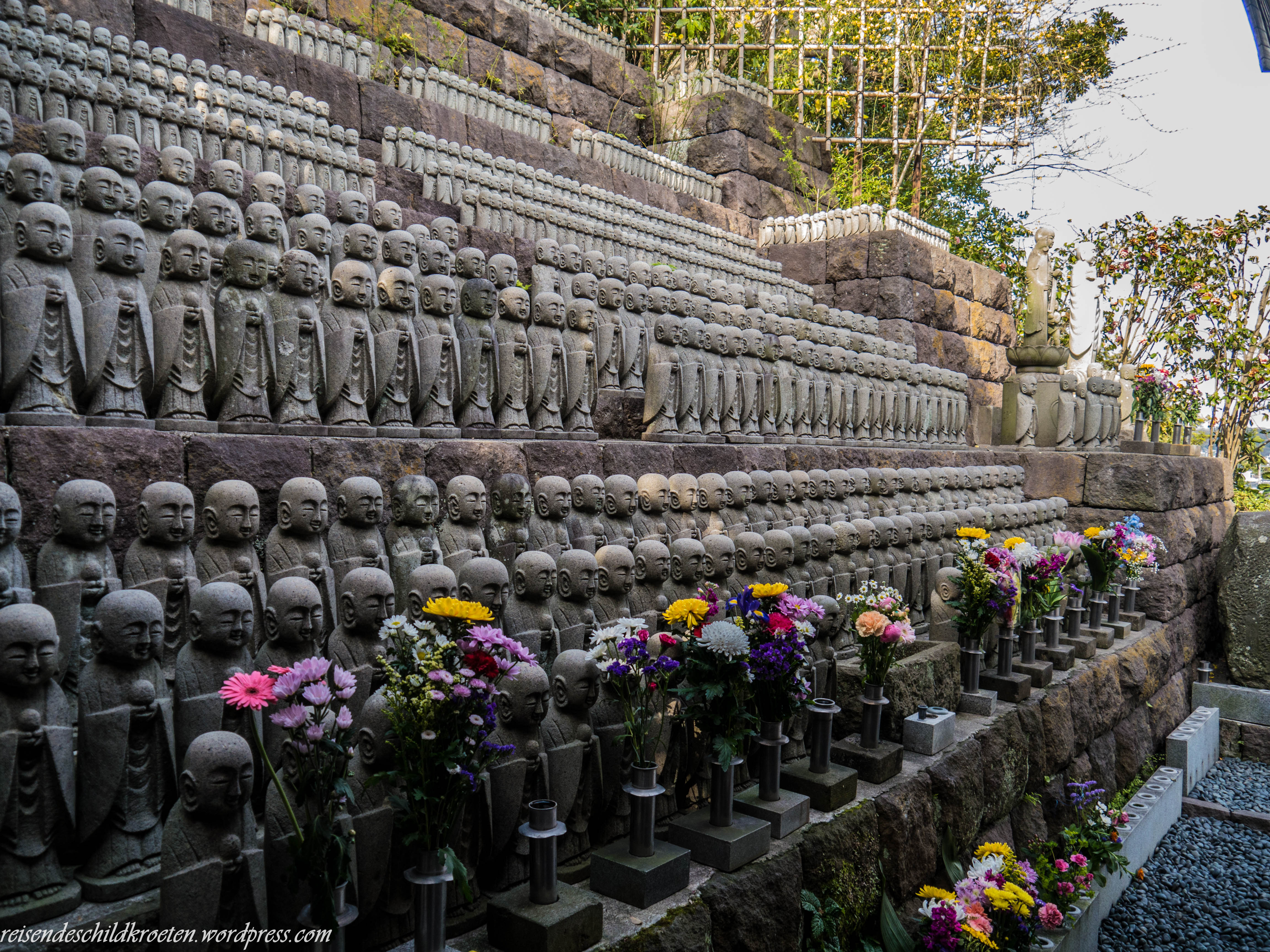 Jizō statues in Hase-dera
Jizō statues in Hase-dera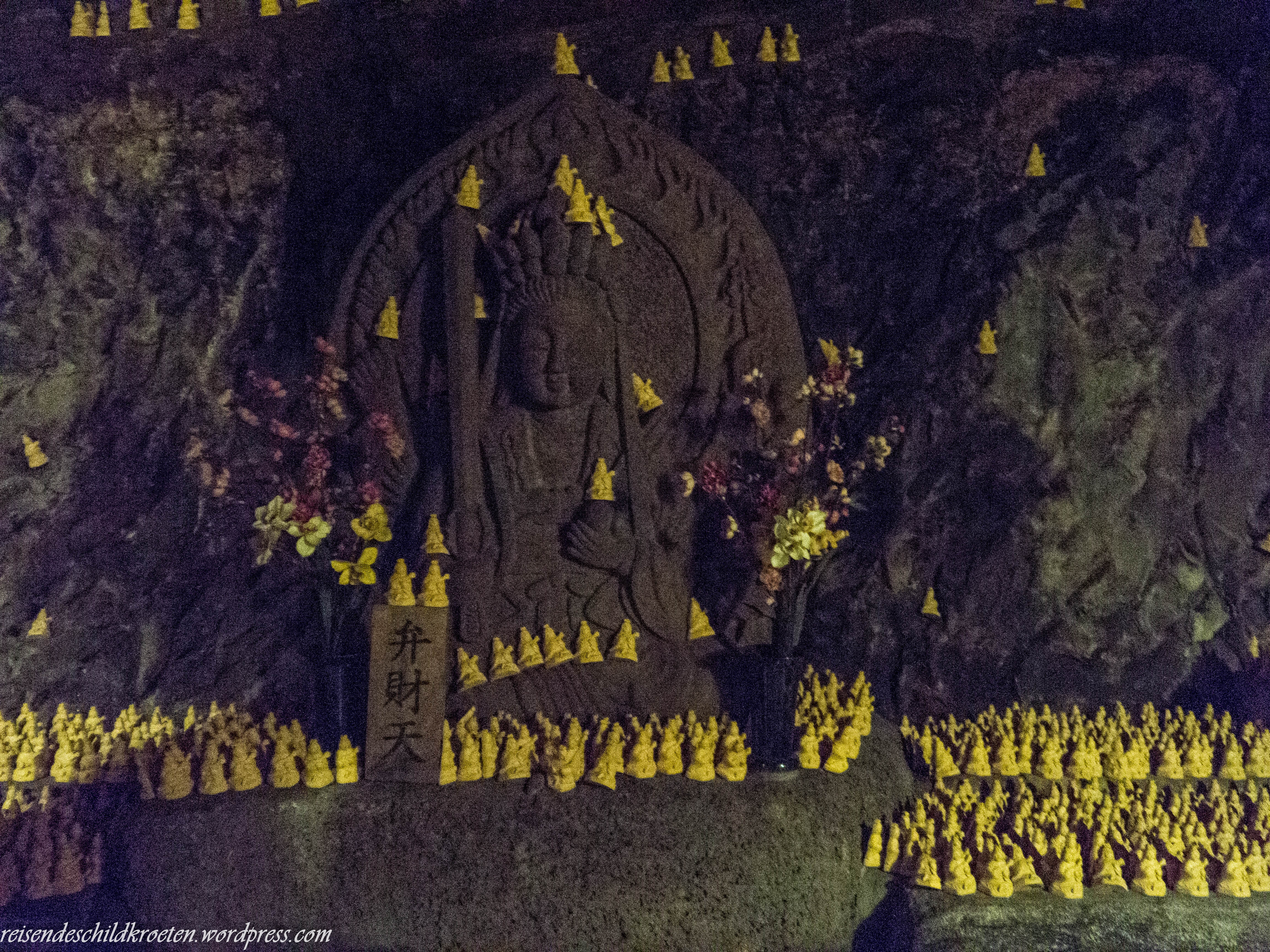 Benzaiten
Benzaiten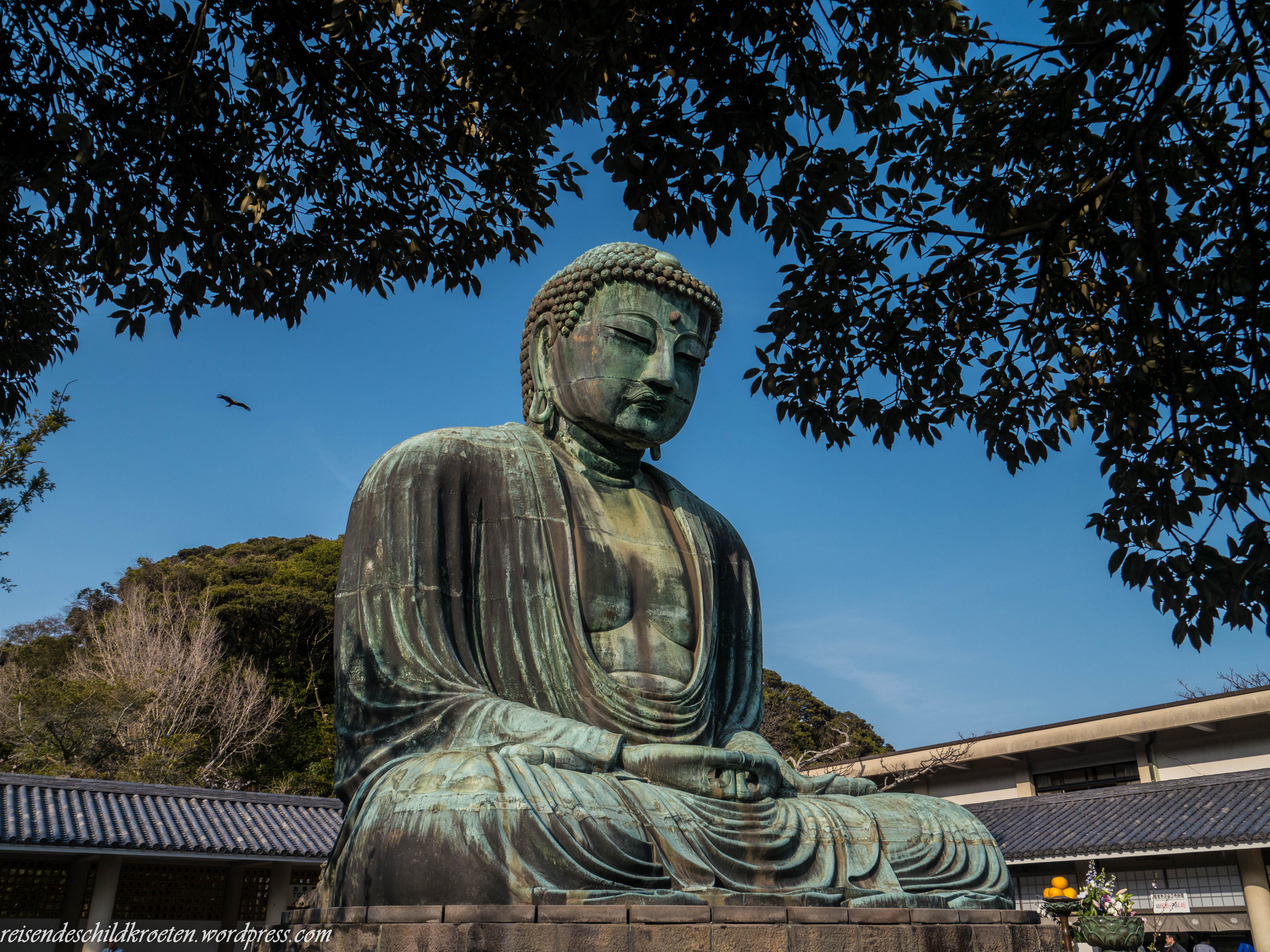 Sitting there since s.XIII
Sitting there since s.XIII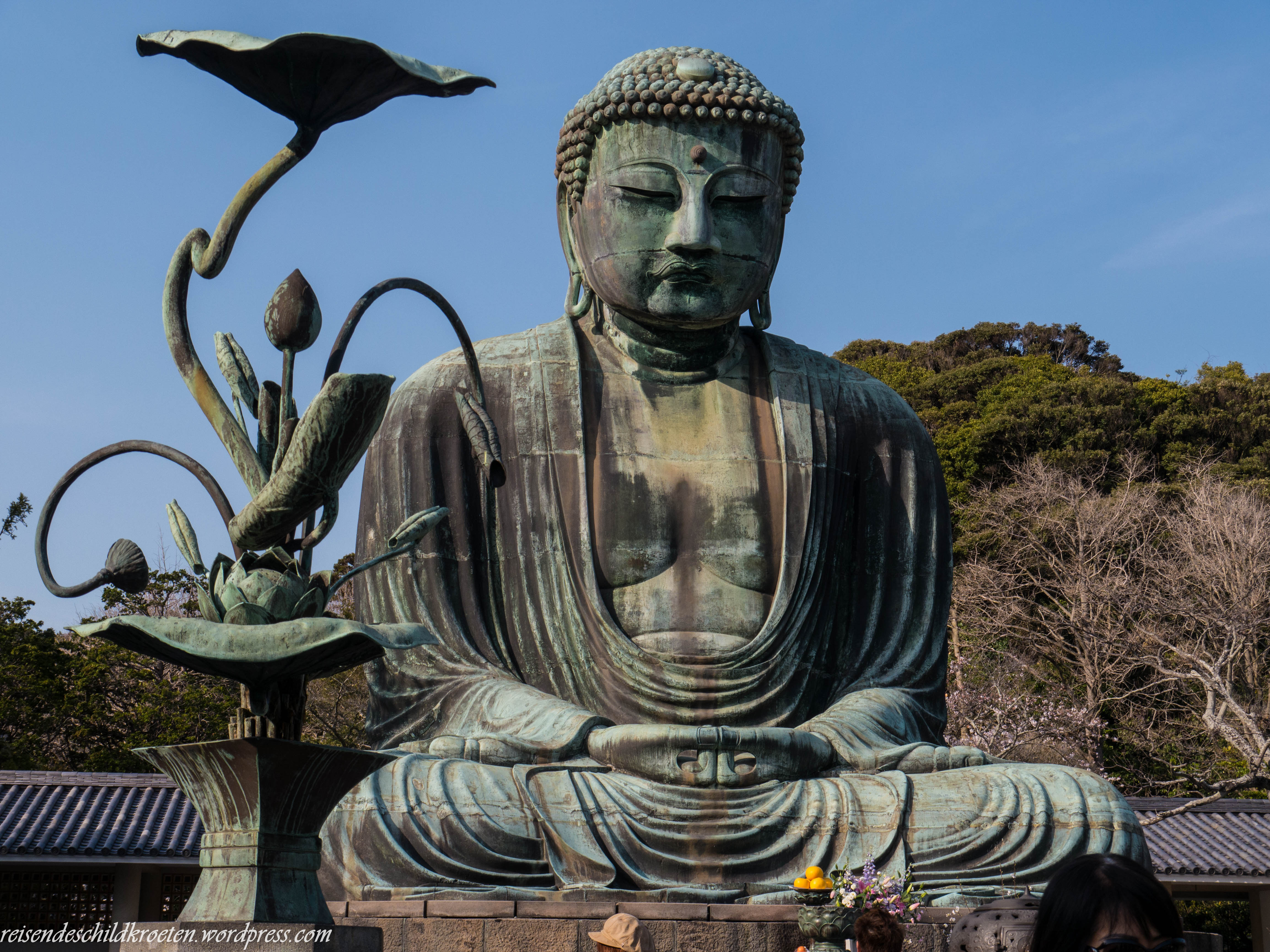
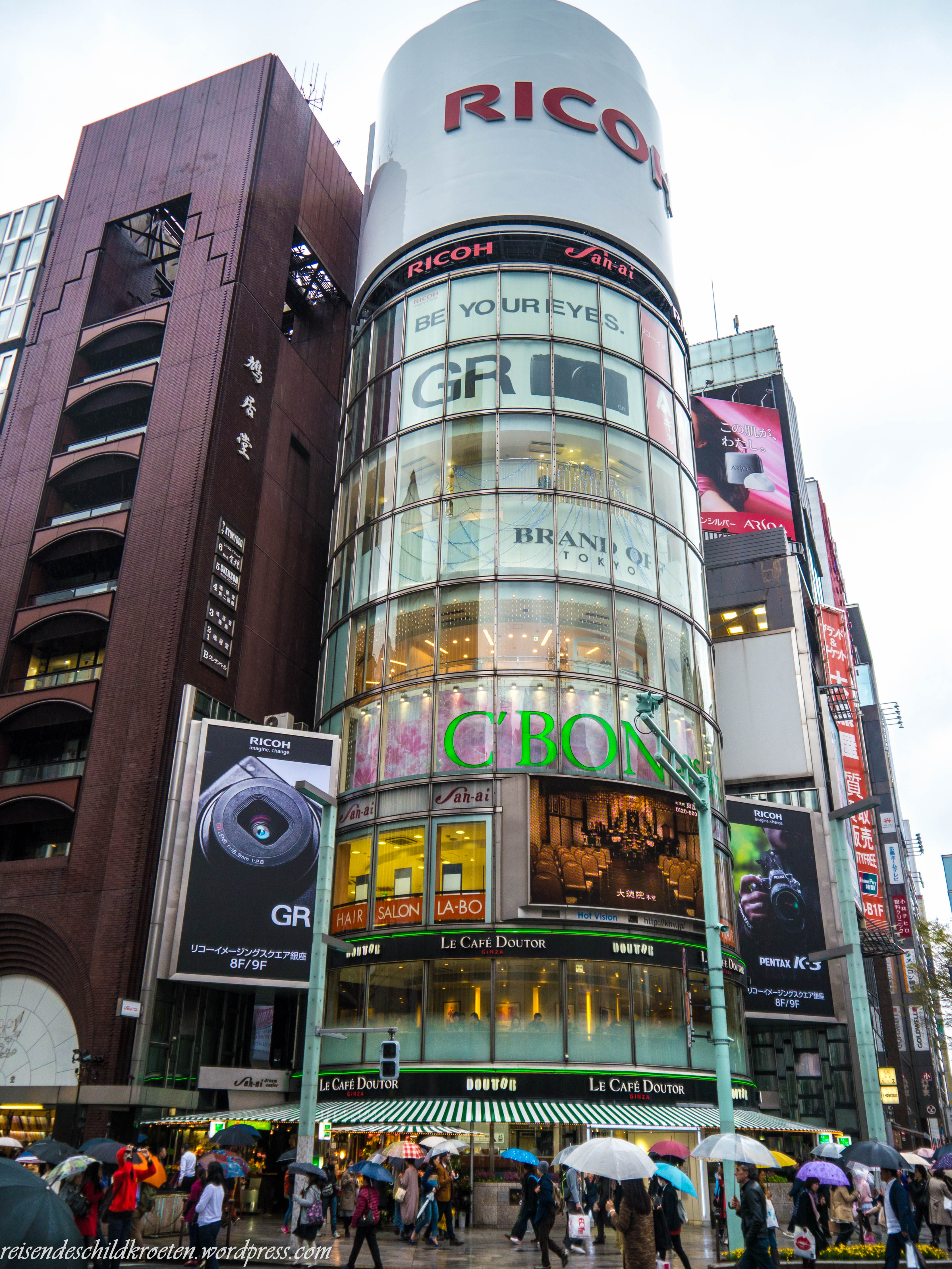 San’ai Building in Giza
San’ai Building in Giza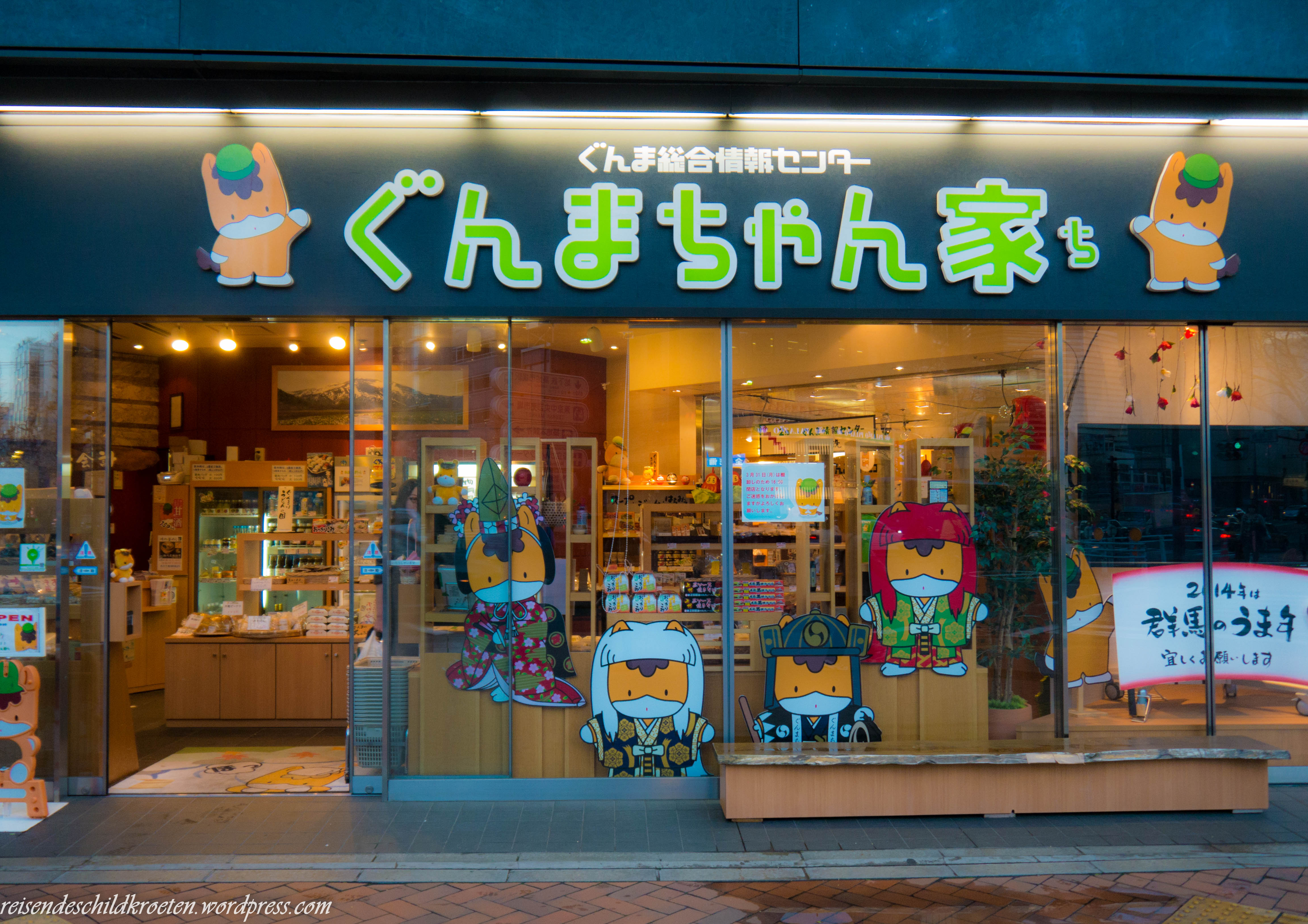 Random super cute store
Random super cute store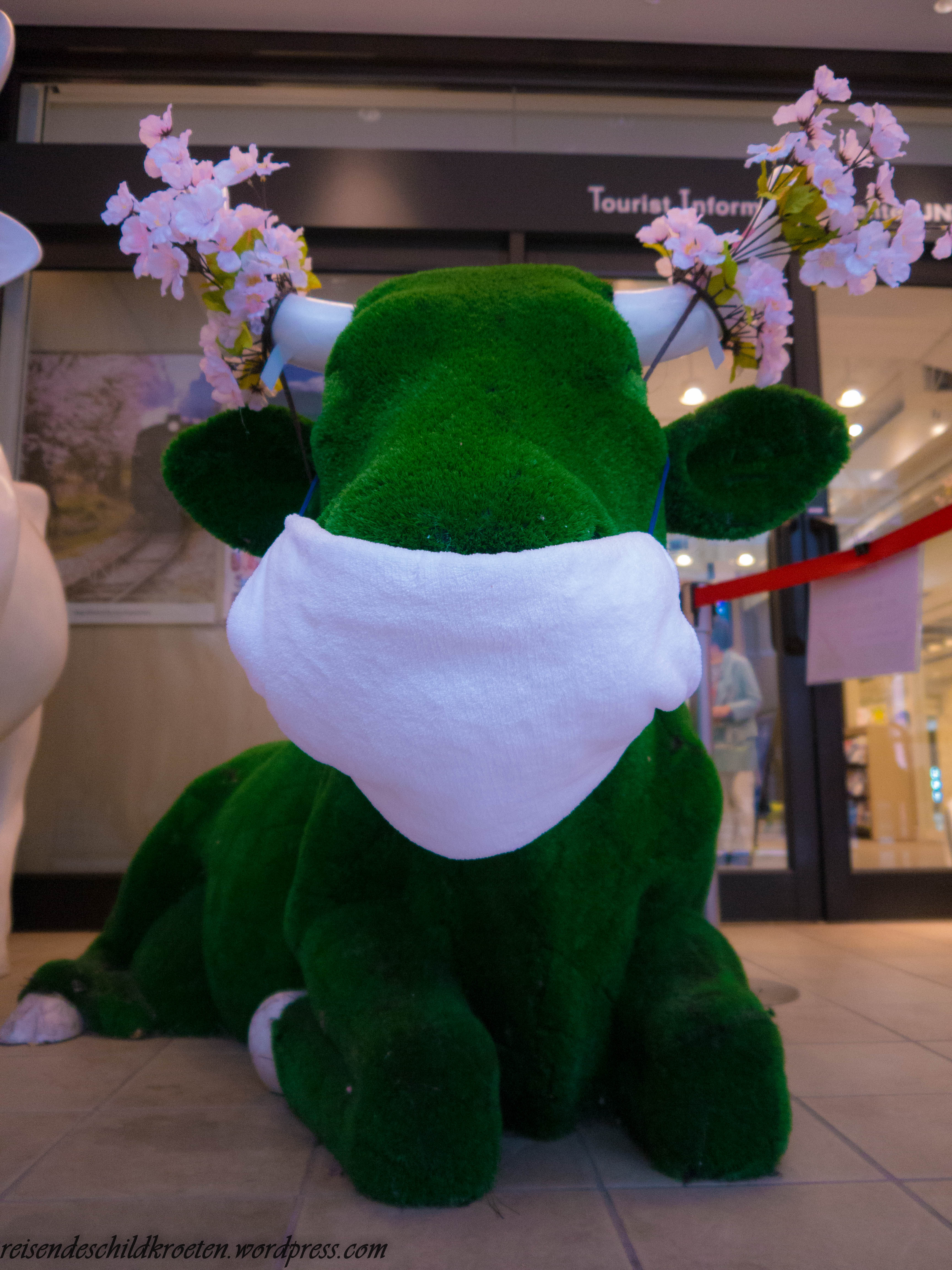 Entrance from the Tourist Information Center in Ginza
Entrance from the Tourist Information Center in Ginza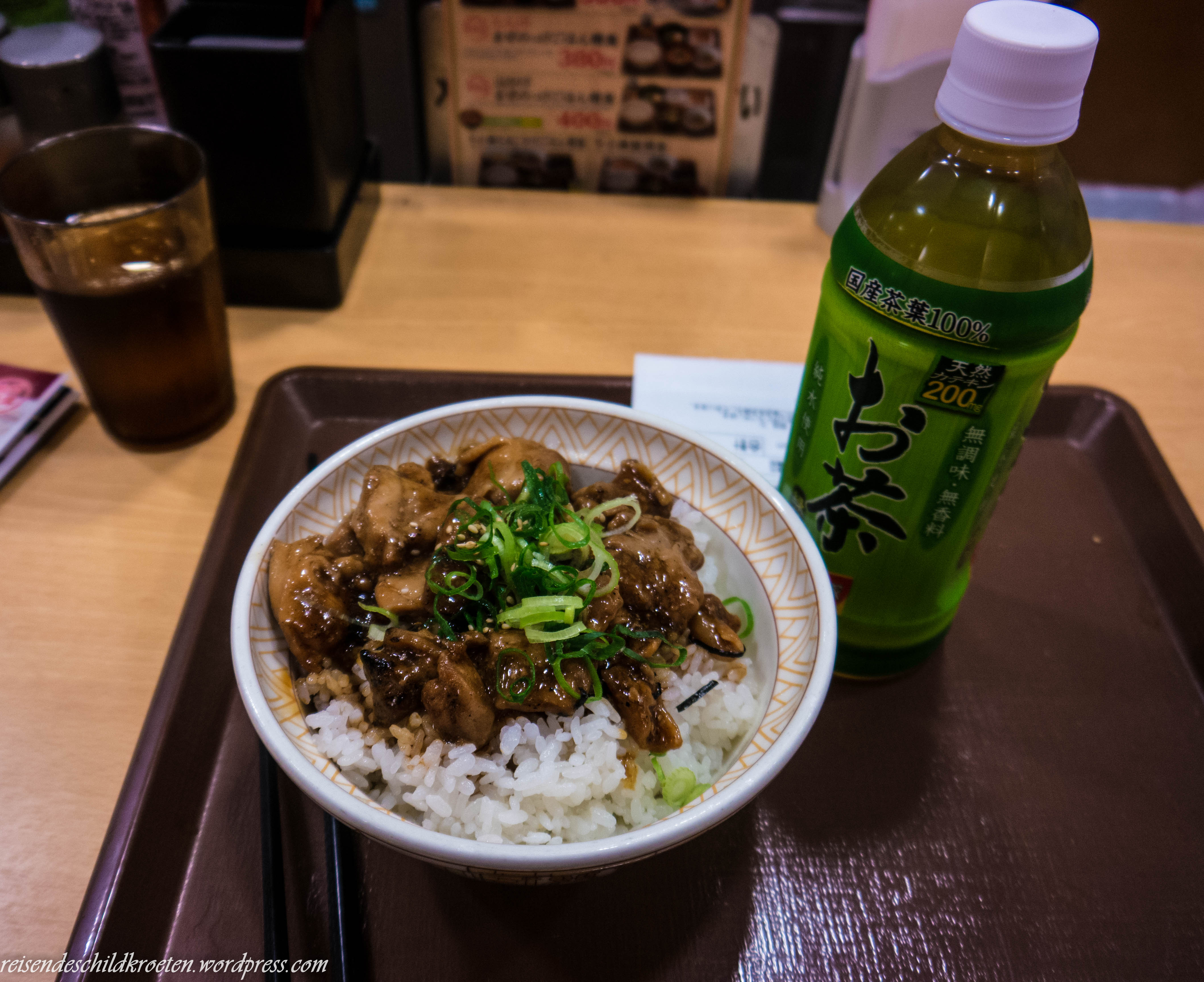 Kevin got addicted to this beef bowls
Kevin got addicted to this beef bowls Kabuki-za
Kabuki-za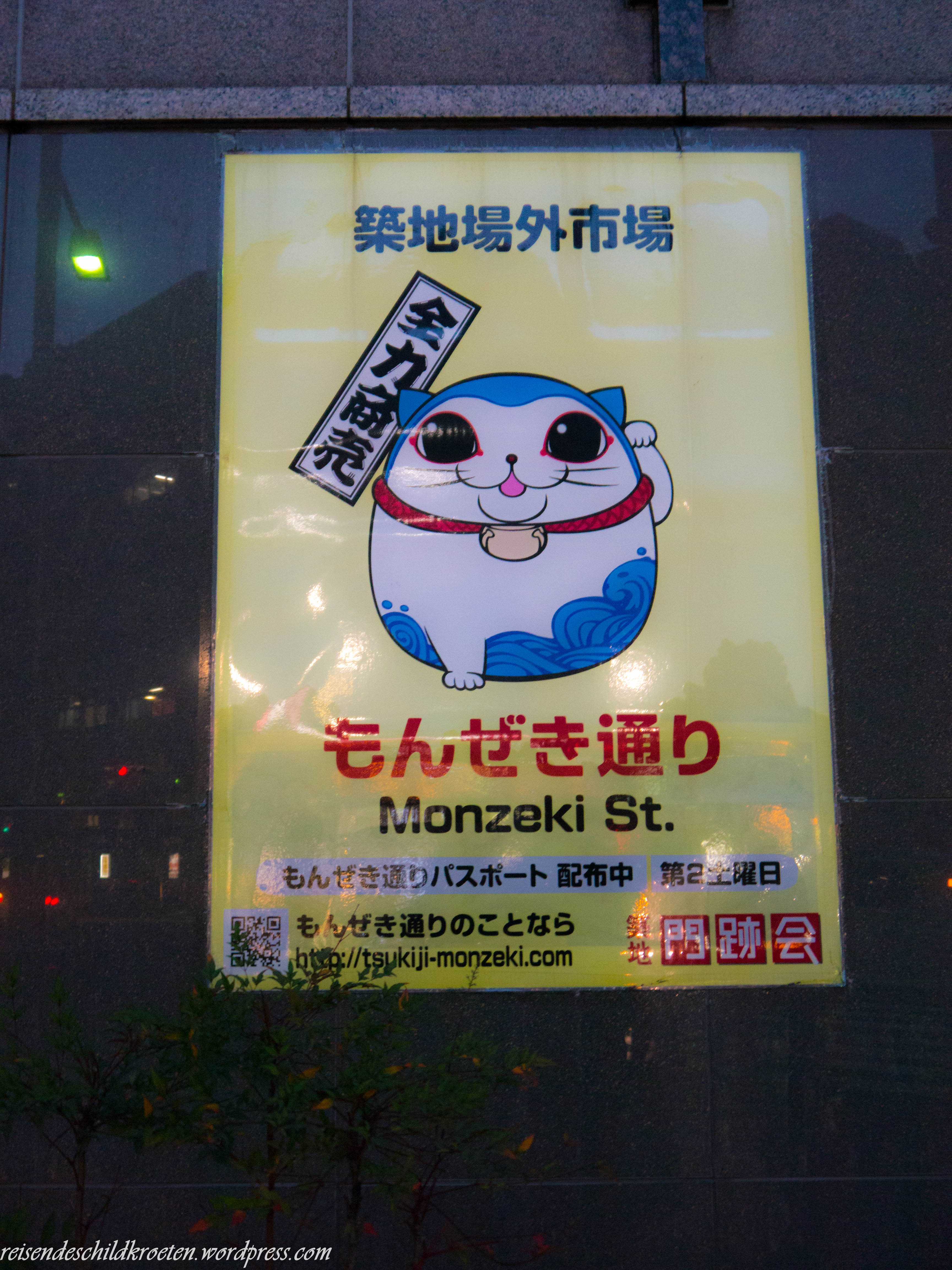 Welcome to Kawaii Tokyo! ^^
Welcome to Kawaii Tokyo! ^^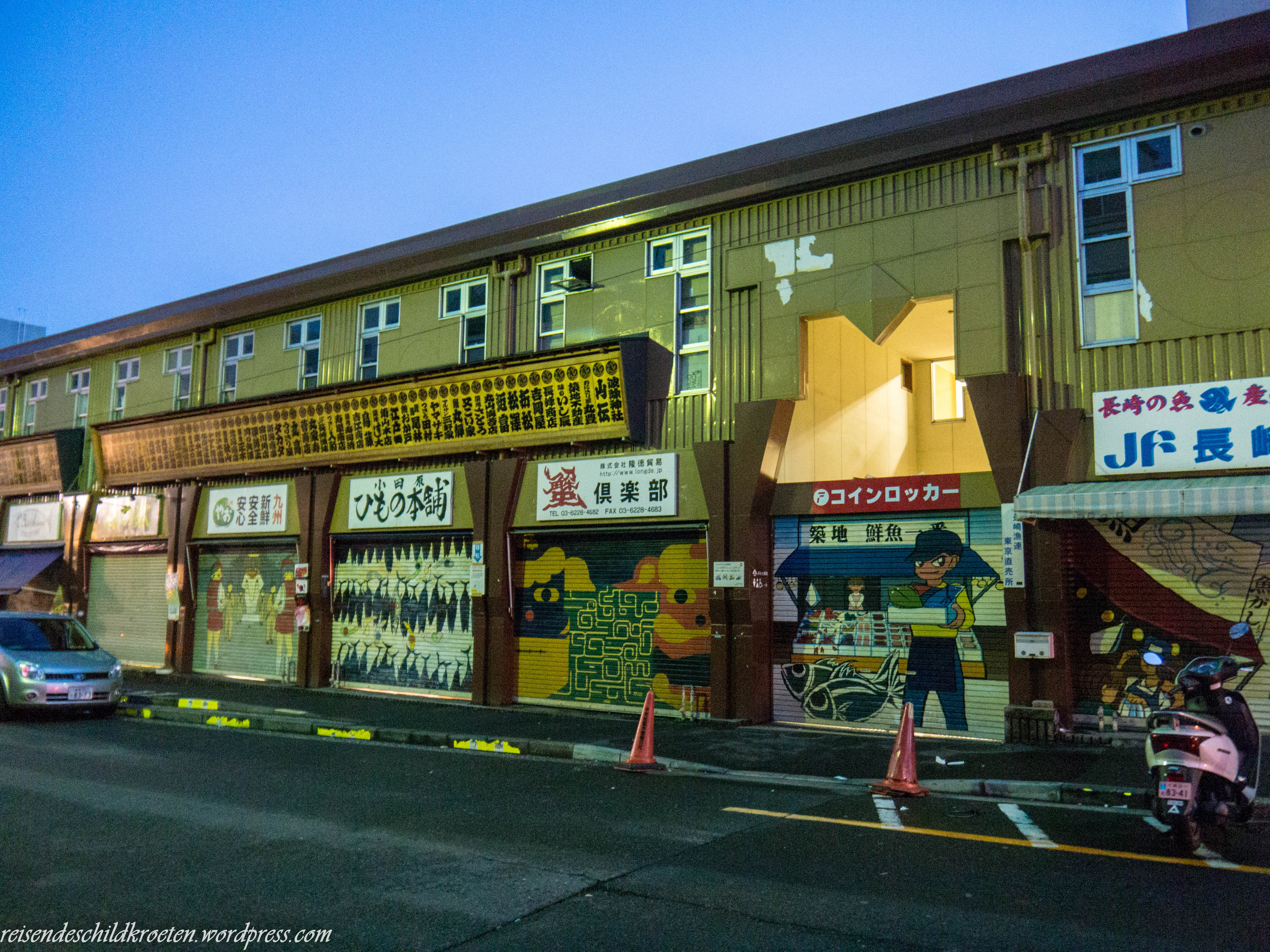 Tsukiji Fish Market at night
Tsukiji Fish Market at night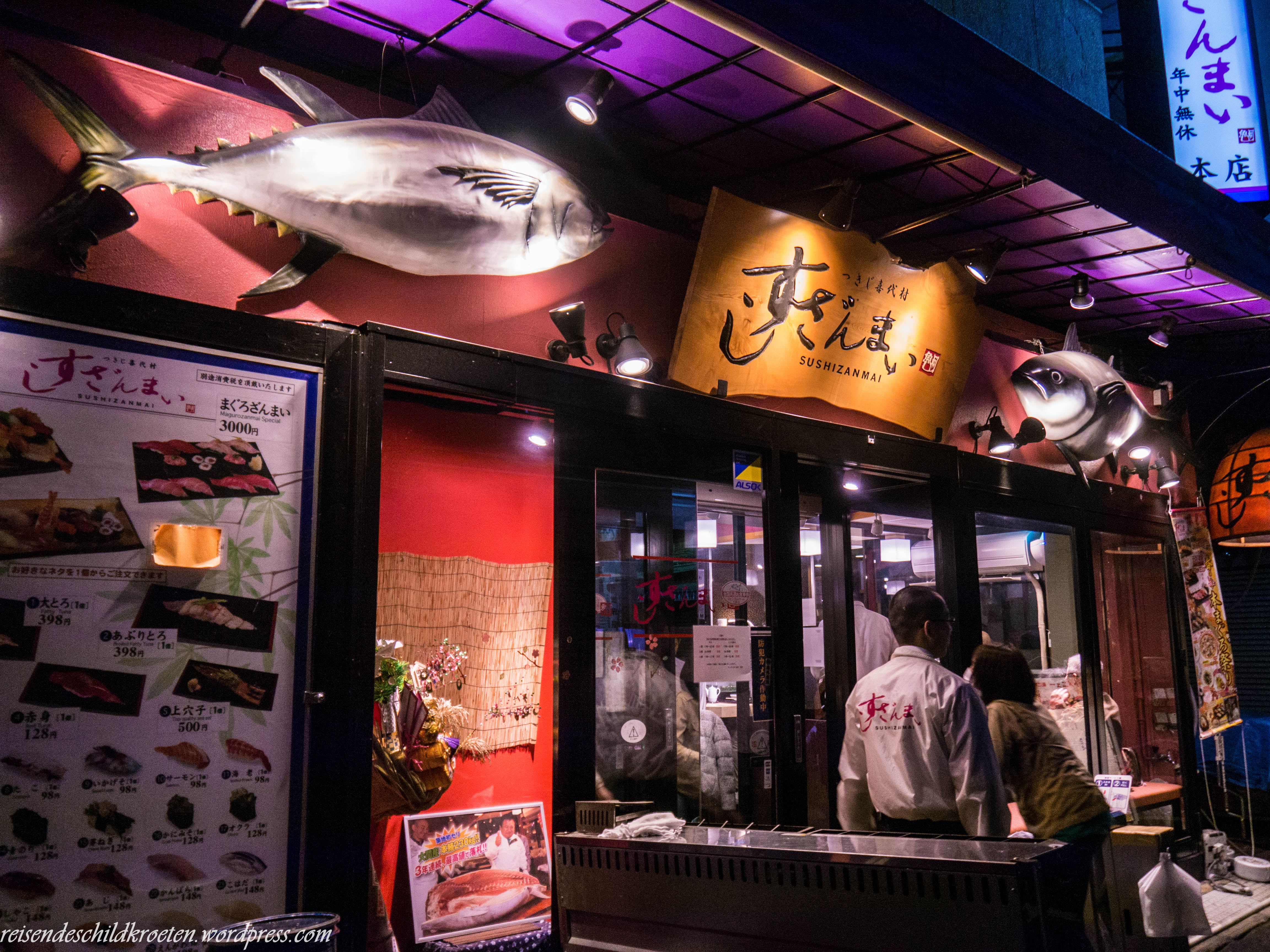 Sushizanmai
Sushizanmai 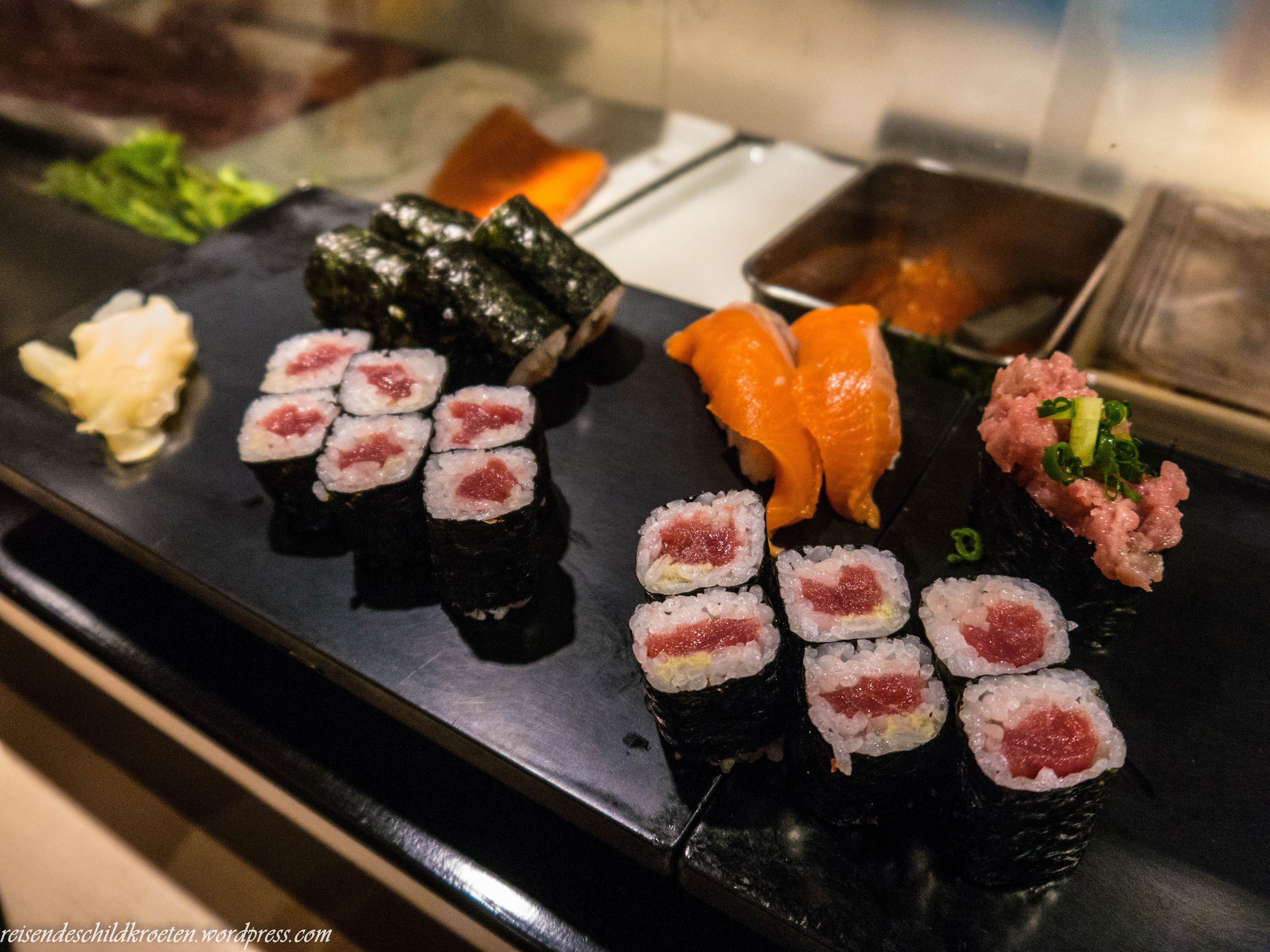
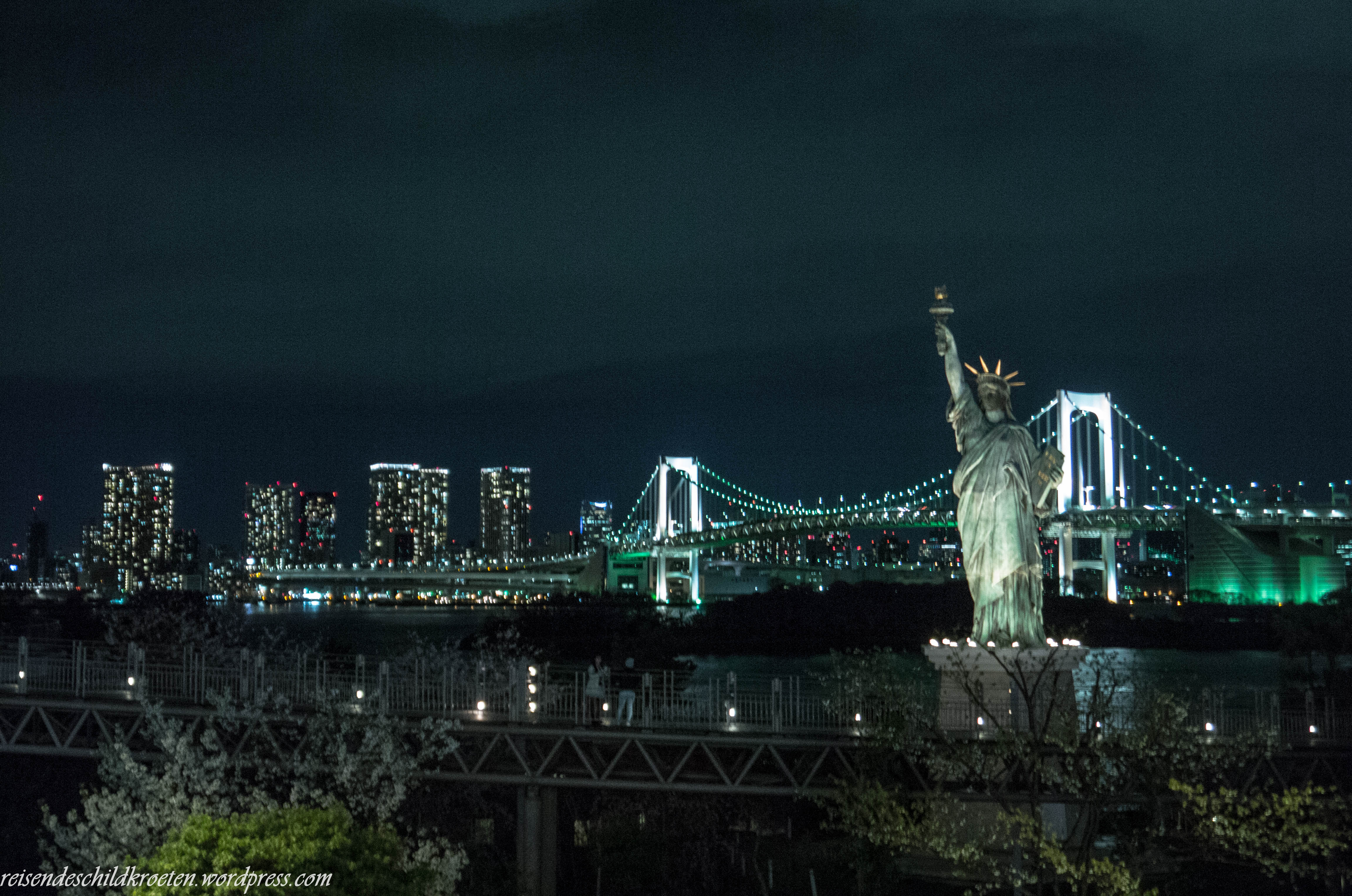 The Japanese Manhattan
The Japanese Manhattan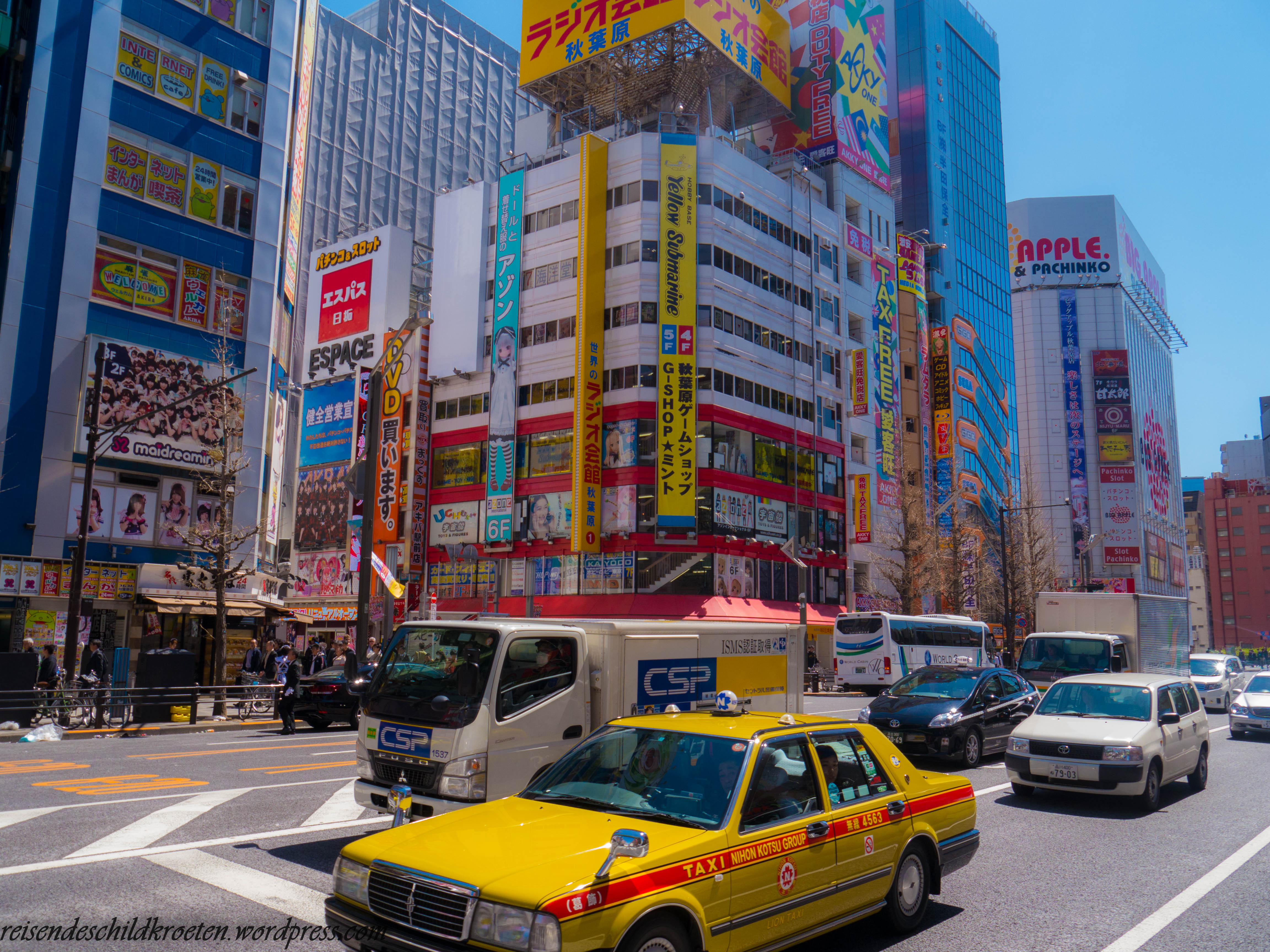 Colorful Akihabara
Colorful Akihabara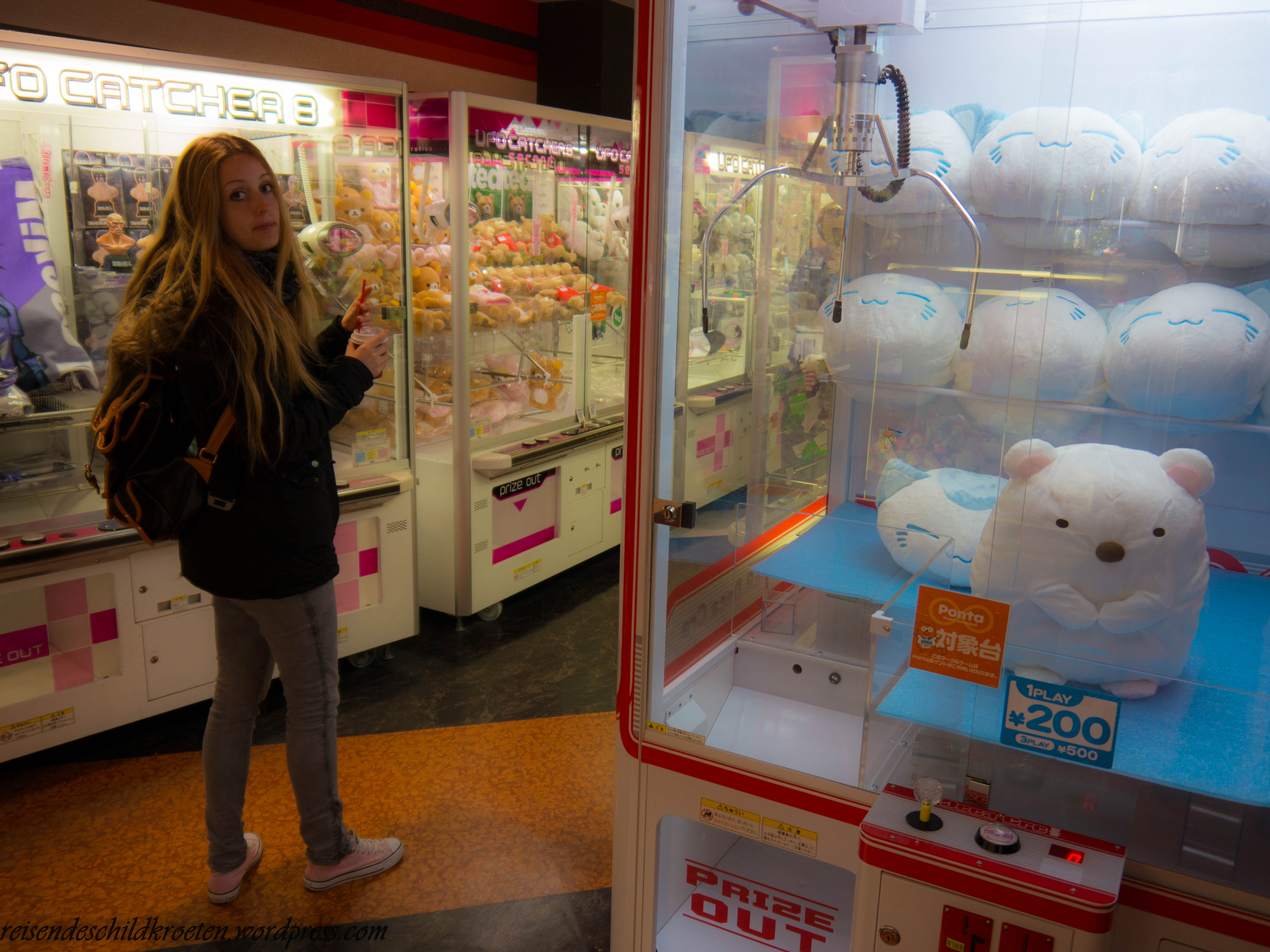 One of the numerous Crane Game shops, all the toys were so cute!
One of the numerous Crane Game shops, all the toys were so cute! Kanda Myojin Shrine in Akihabara
Kanda Myojin Shrine in Akihabara The cherry trees around the Shrine
The cherry trees around the Shrine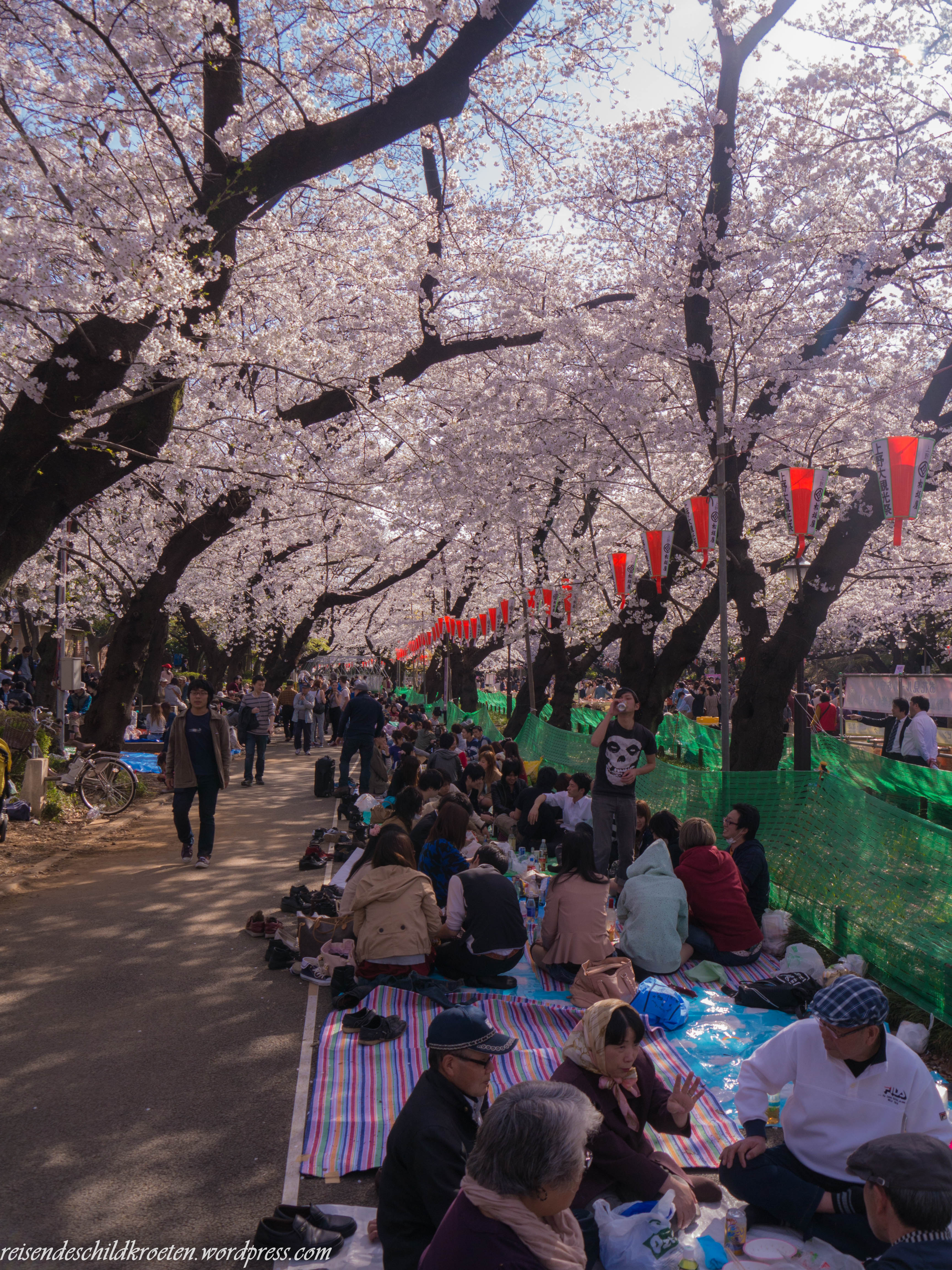 Flowering festival at Ueno’s Park
Flowering festival at Ueno’s Park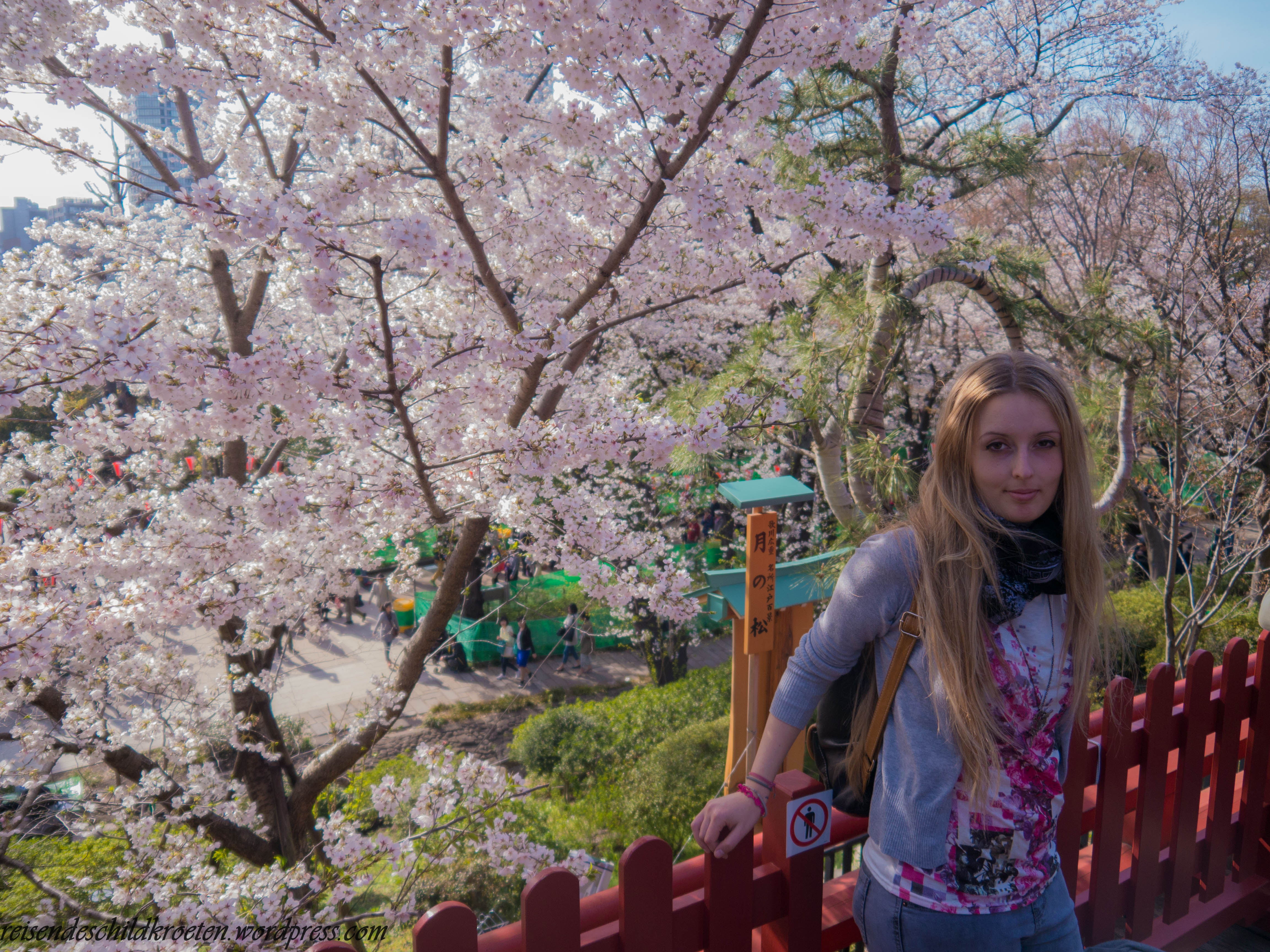
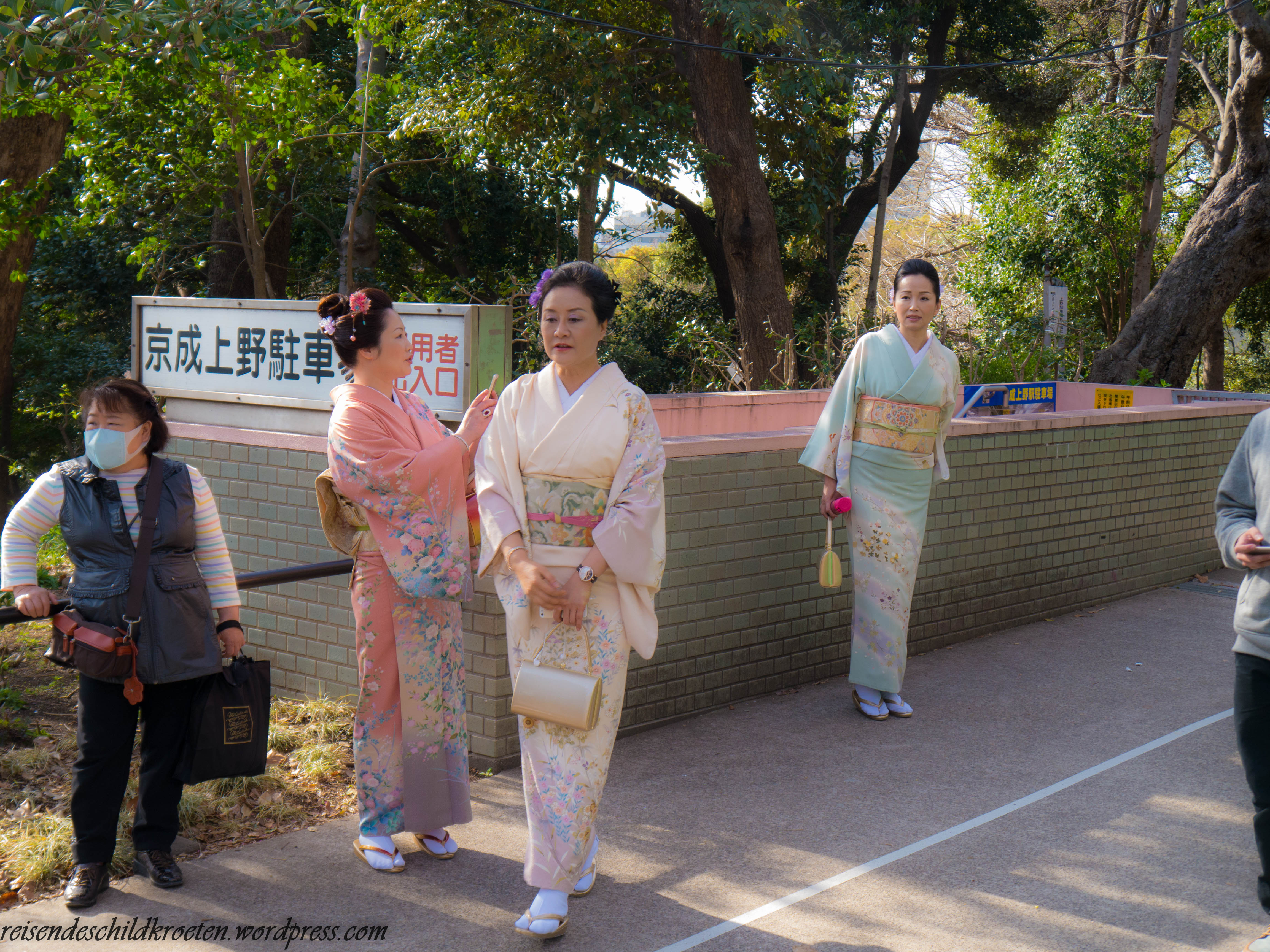
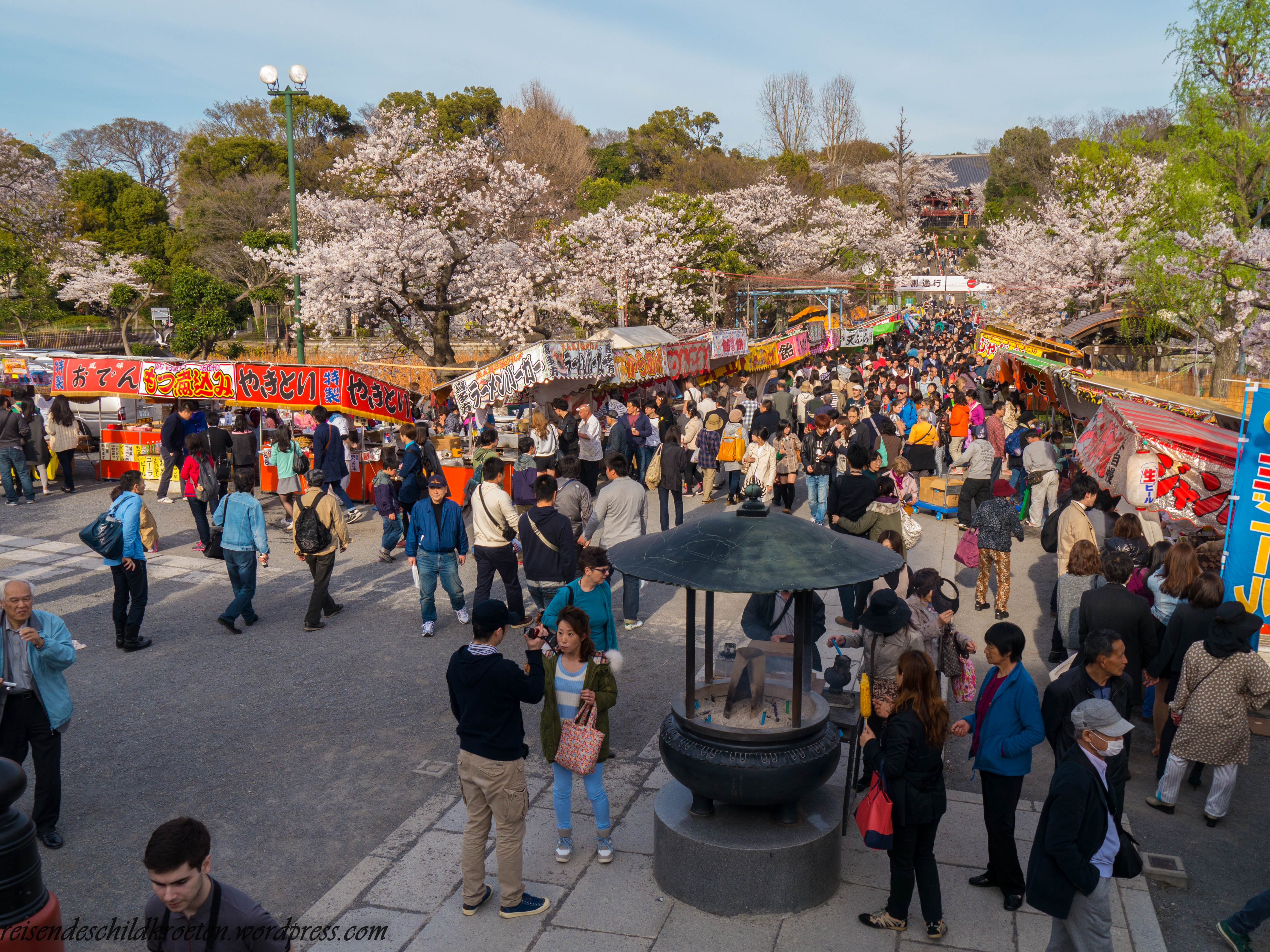 Some stands next to one of the temples
Some stands next to one of the temples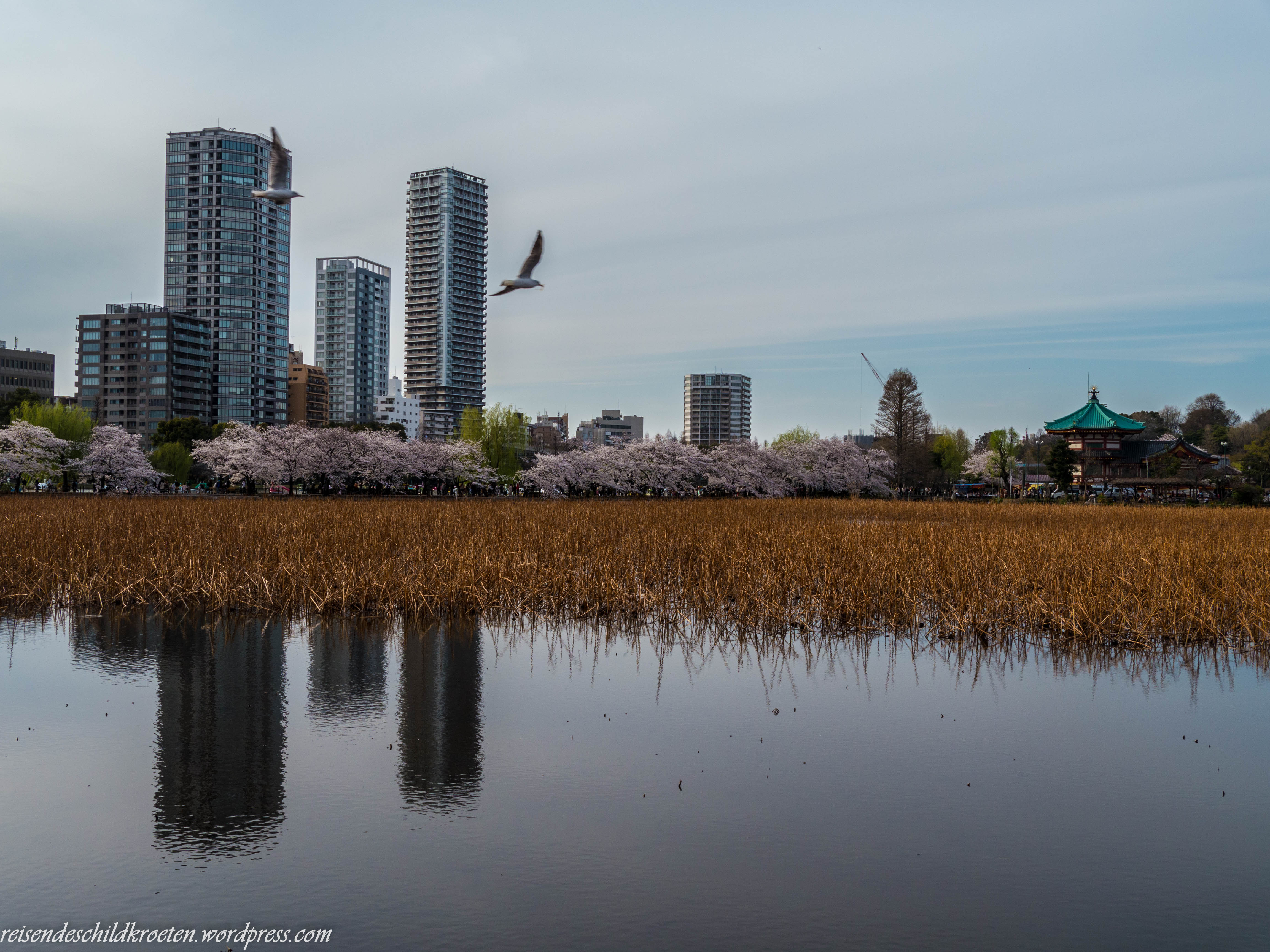 Shinobazu Pond in the middle of the park
Shinobazu Pond in the middle of the park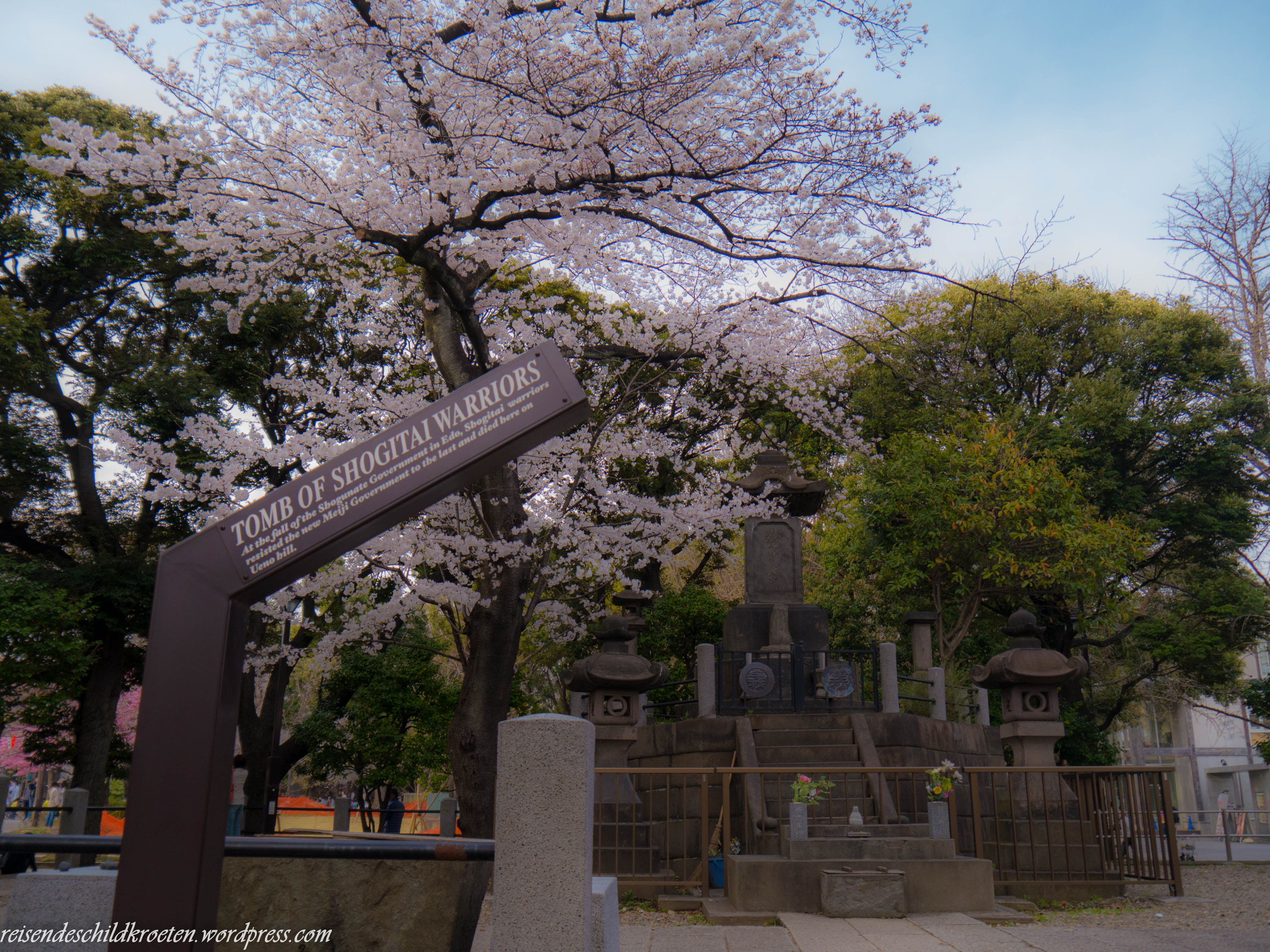
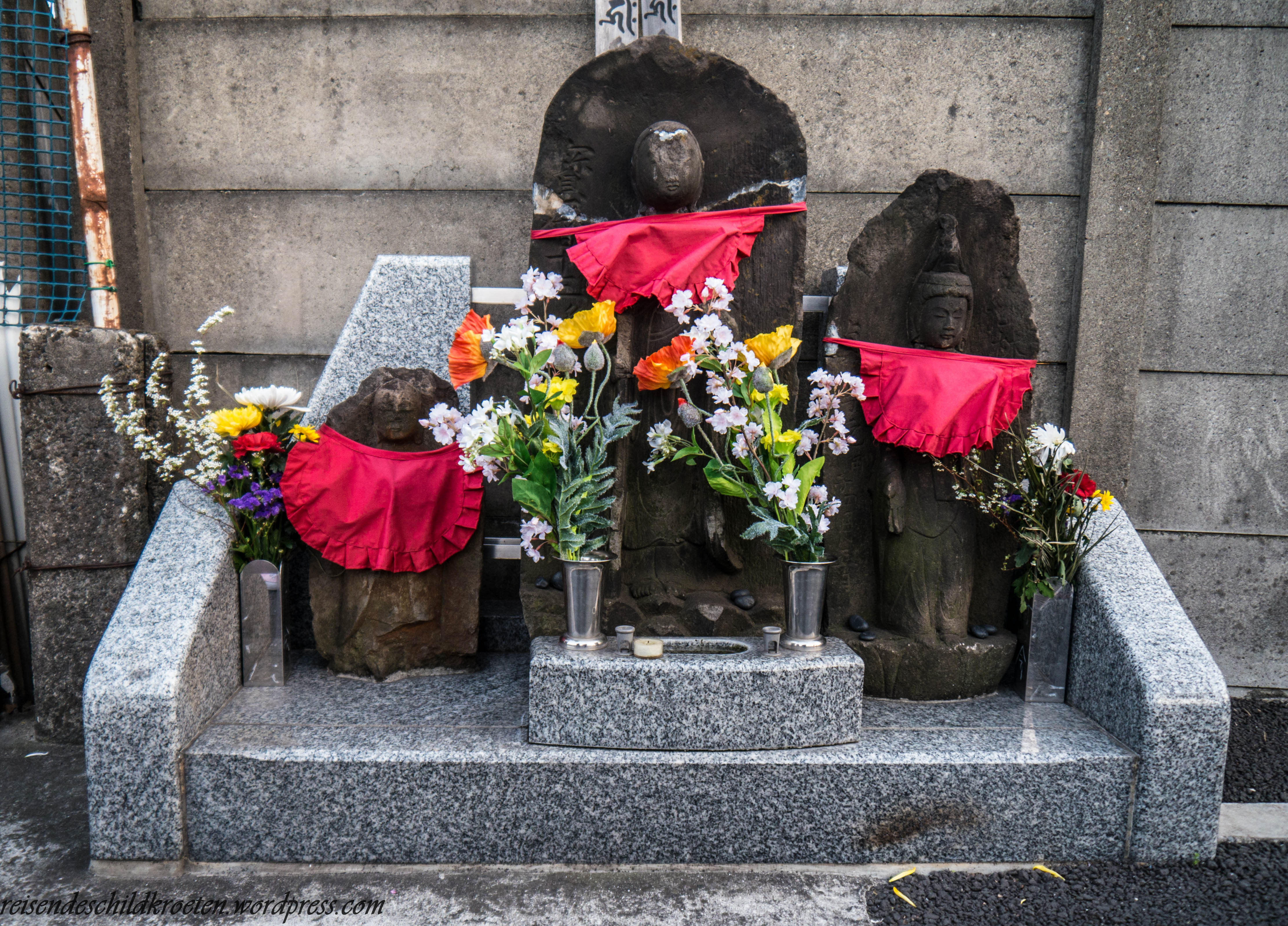 Statues with red bibs-the color of the good luck
Statues with red bibs-the color of the good luck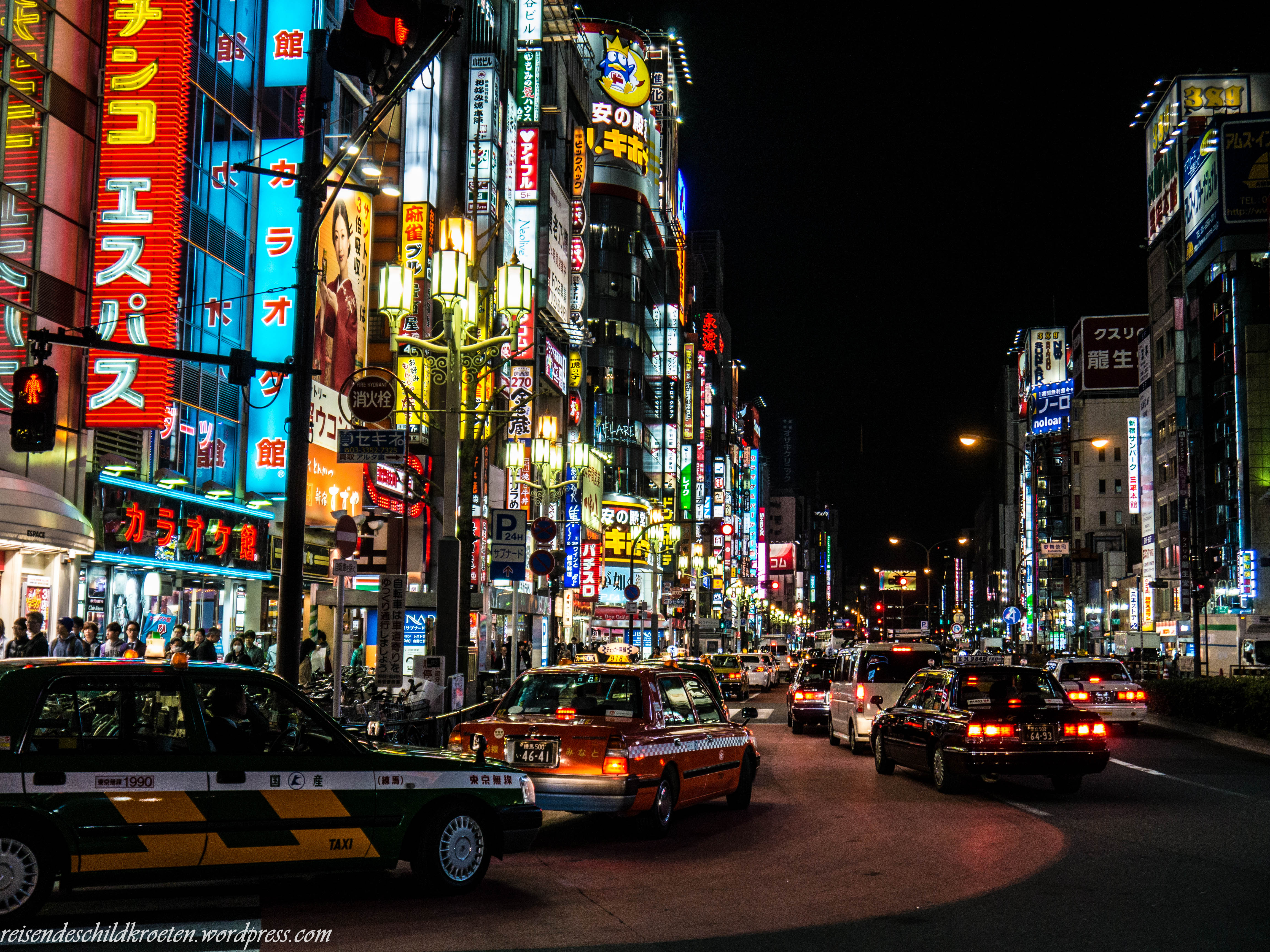
 Shinjuku
Shinjuku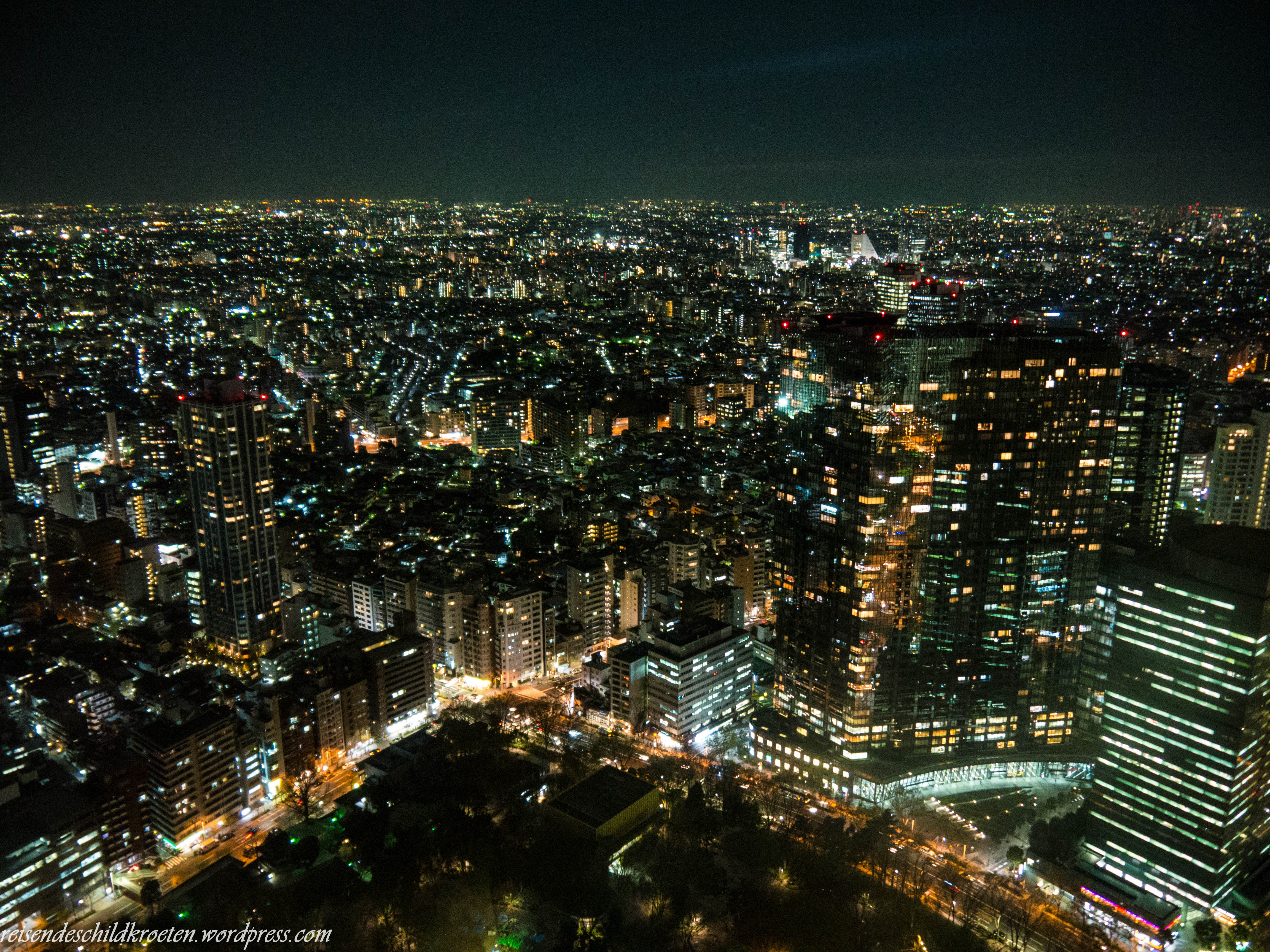 Tokyo Metropolitan Government Building Views
Tokyo Metropolitan Government Building Views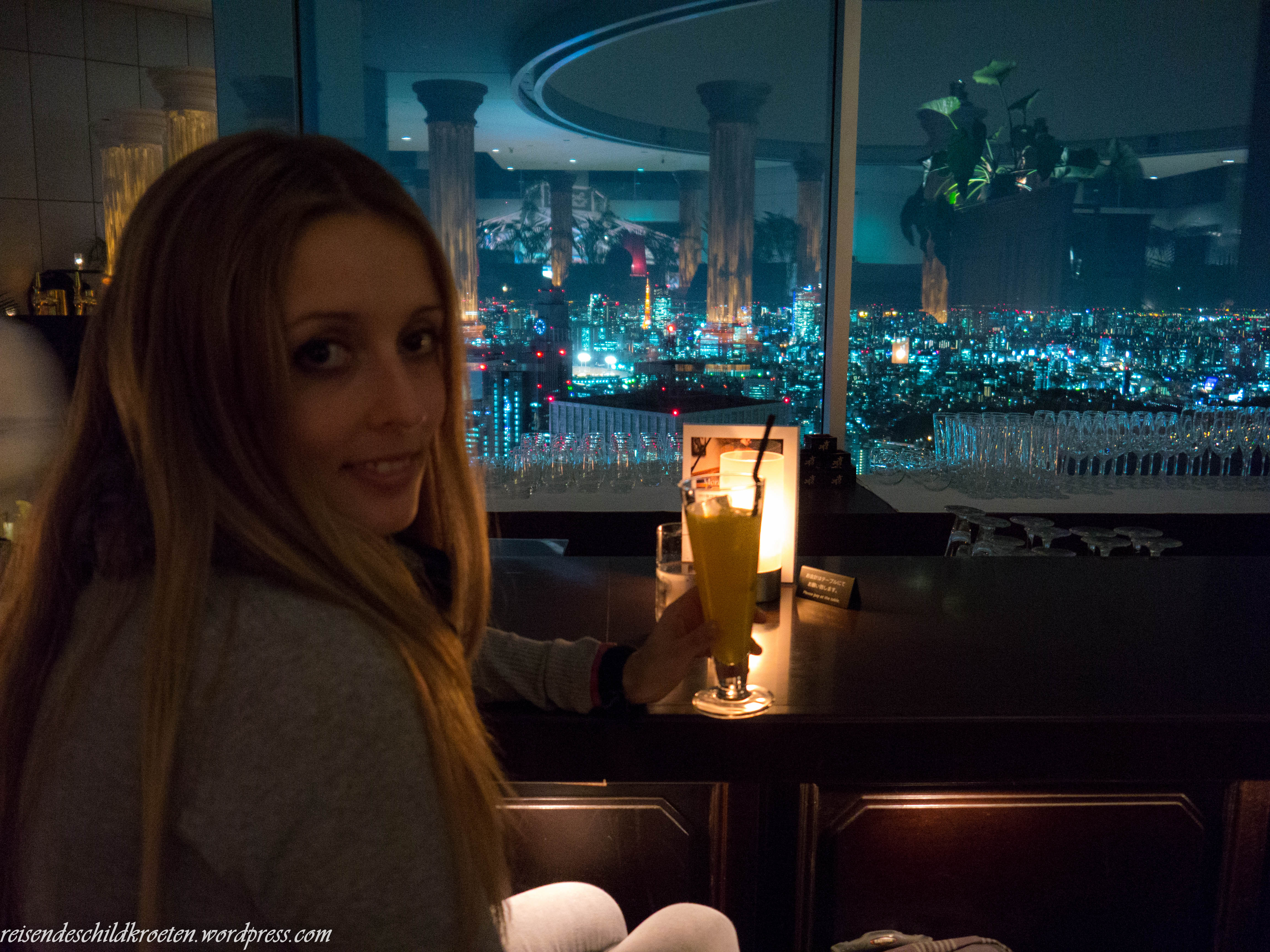 Not as expensive as one could think!
Not as expensive as one could think!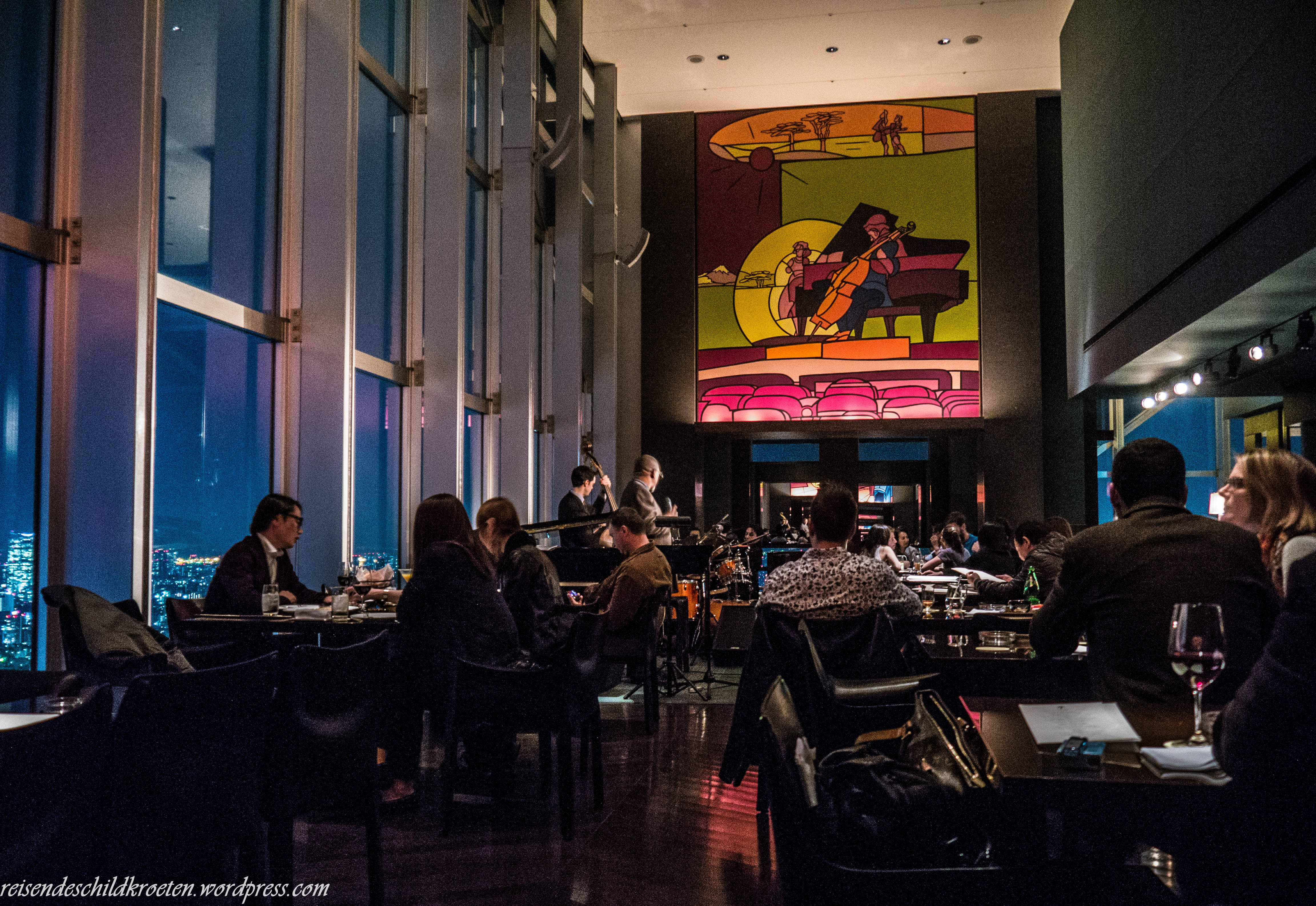 do you know which movie?
do you know which movie?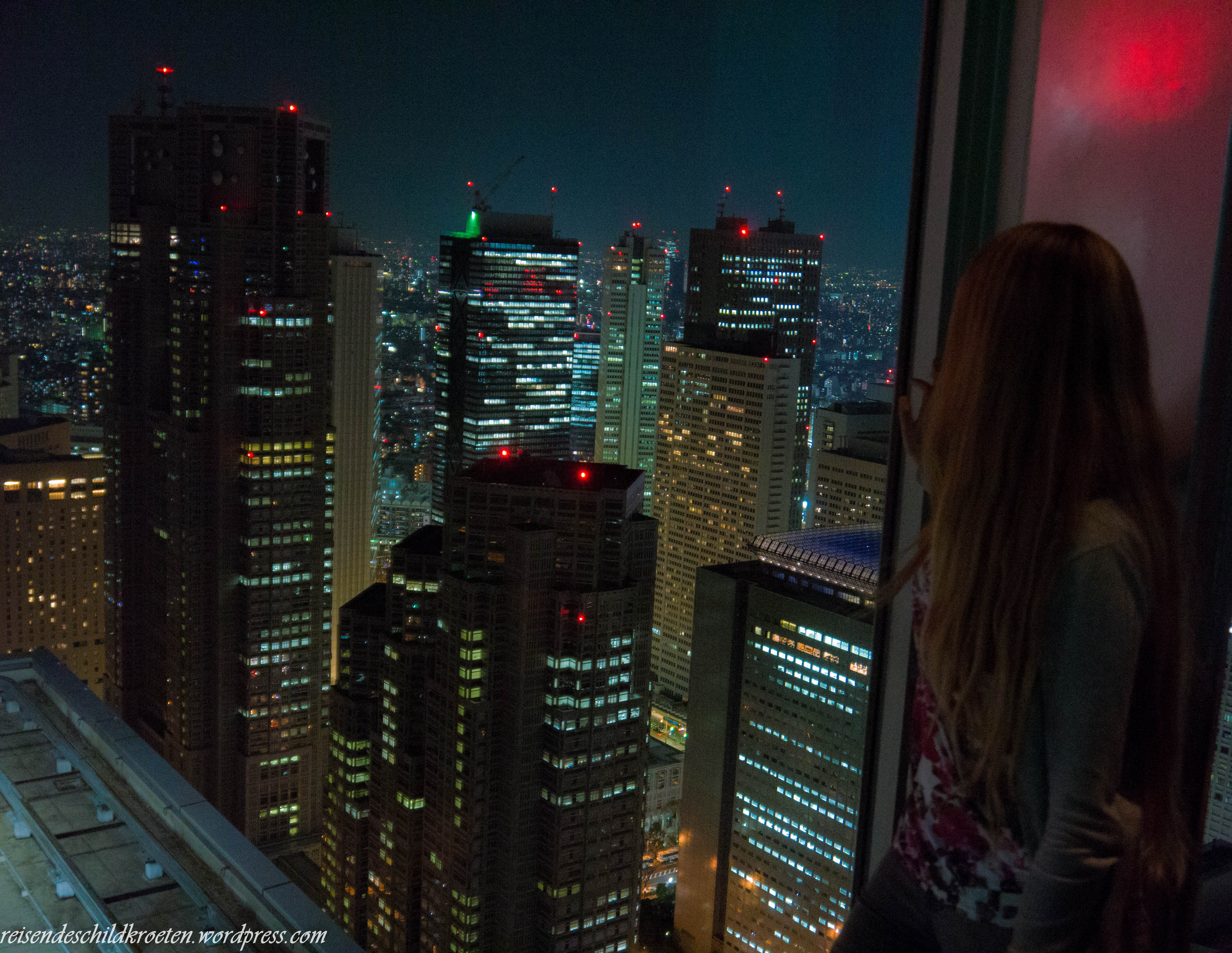 Views from the Hyatt Hotel
Views from the Hyatt Hotel Enough space for a pleasant nap
Enough space for a pleasant nap Energetic Ramen before the experience!
Energetic Ramen before the experience! Poor me
Poor me The entrance to the temple
The entrance to the temple Our sober room
Our sober room Sunmudo demonstration
Sunmudo demonstration The meditation chamber
The meditation chamber The dining room
The dining room Kevin was more diligent than me.
Kevin was more diligent than me. Buchaechum dance
Buchaechum dance





 Maae Amitabul
Maae Amitabul

 Unfortunately the dinner wasn’t here 😦
Unfortunately the dinner wasn’t here 😦 Dongseongno
Dongseongno

 The Seoul Tower
The Seoul Tower At the top
At the top Views from the tower
Views from the tower He ordered even more…40 in total!
He ordered even more…40 in total! Namsagol’s garden
Namsagol’s garden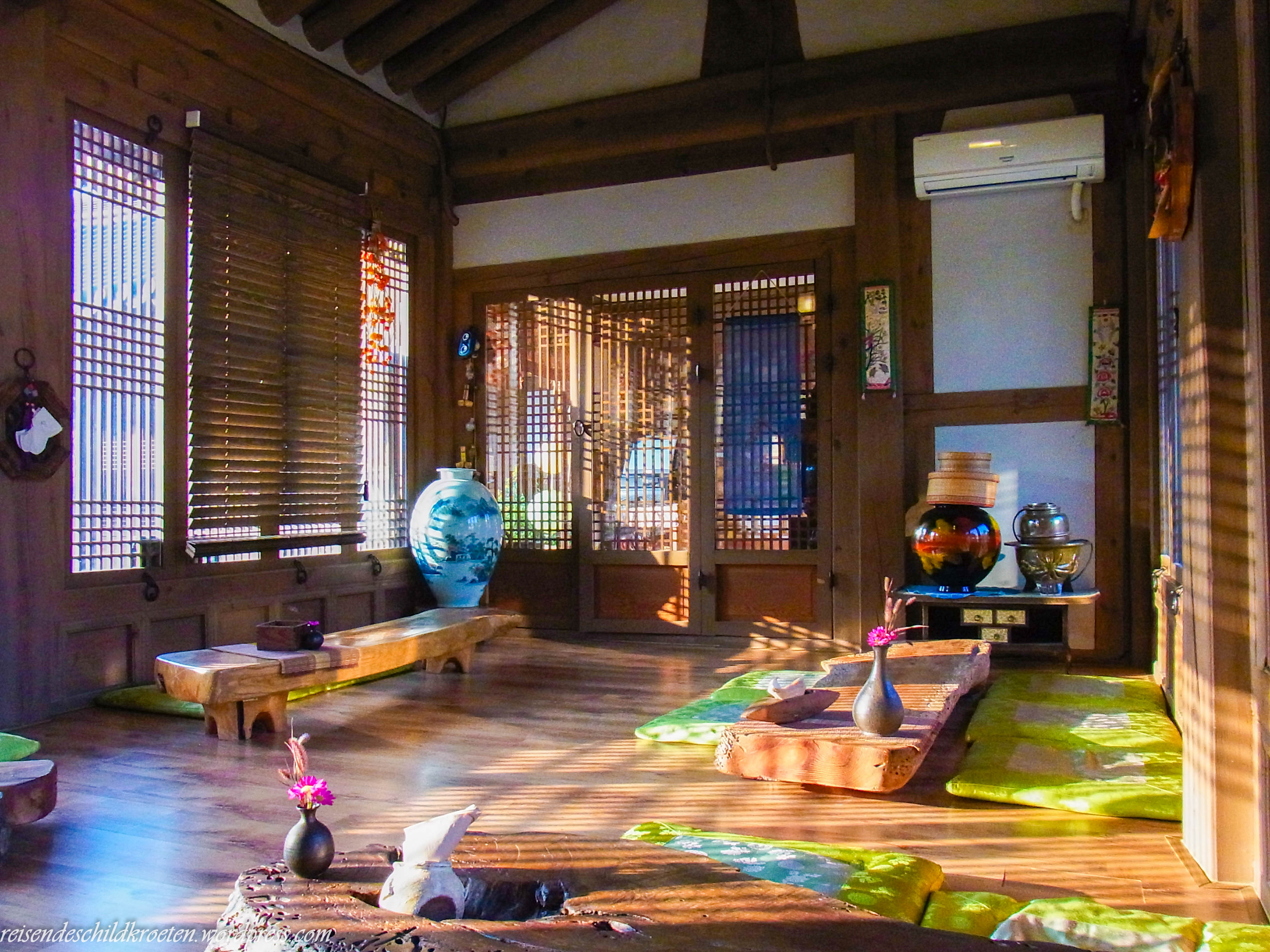
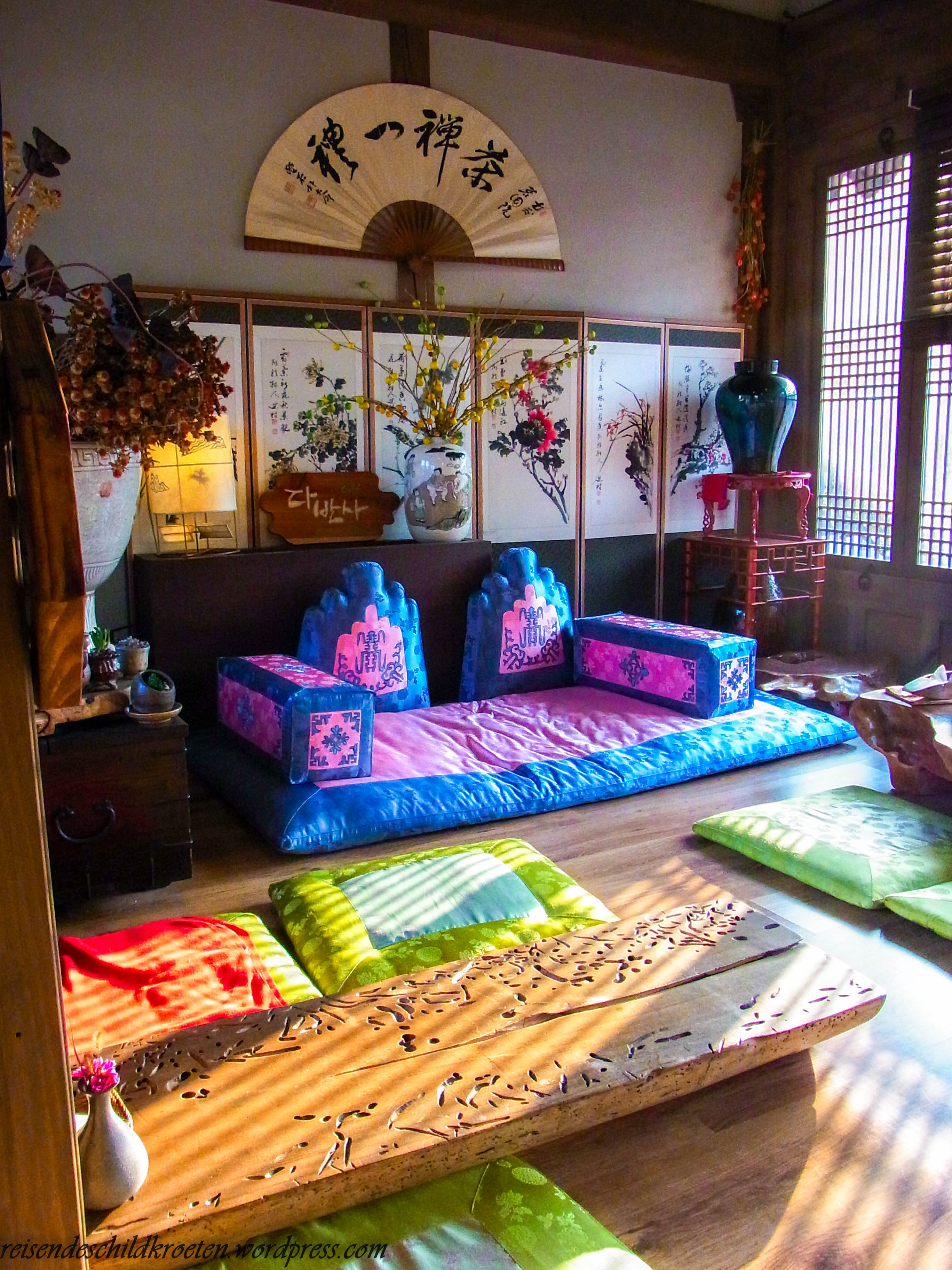
 Not very good at it
Not very good at it An A-Frame korean back-carrier
An A-Frame korean back-carrier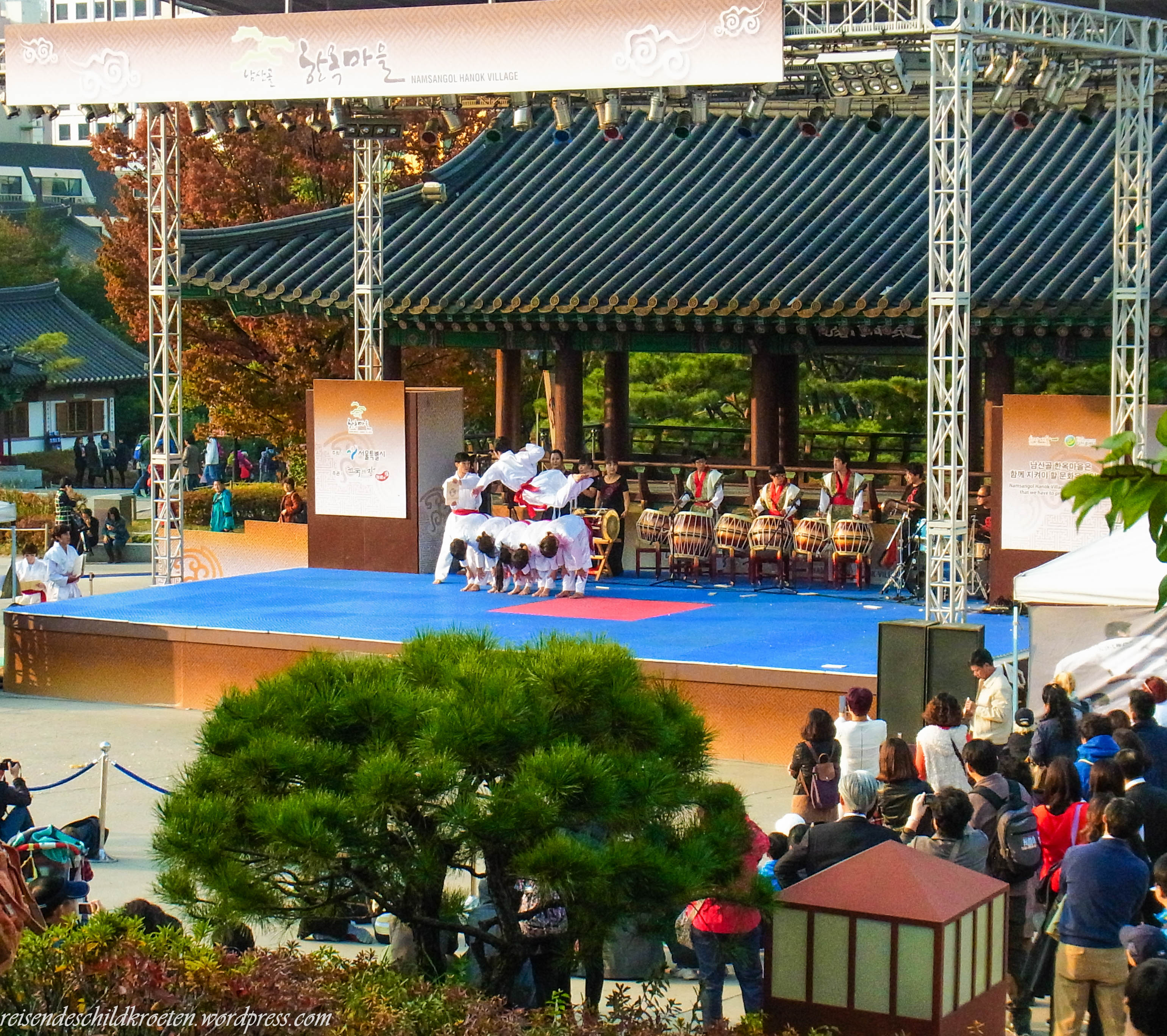 Tiger & Dragon
Tiger & Dragon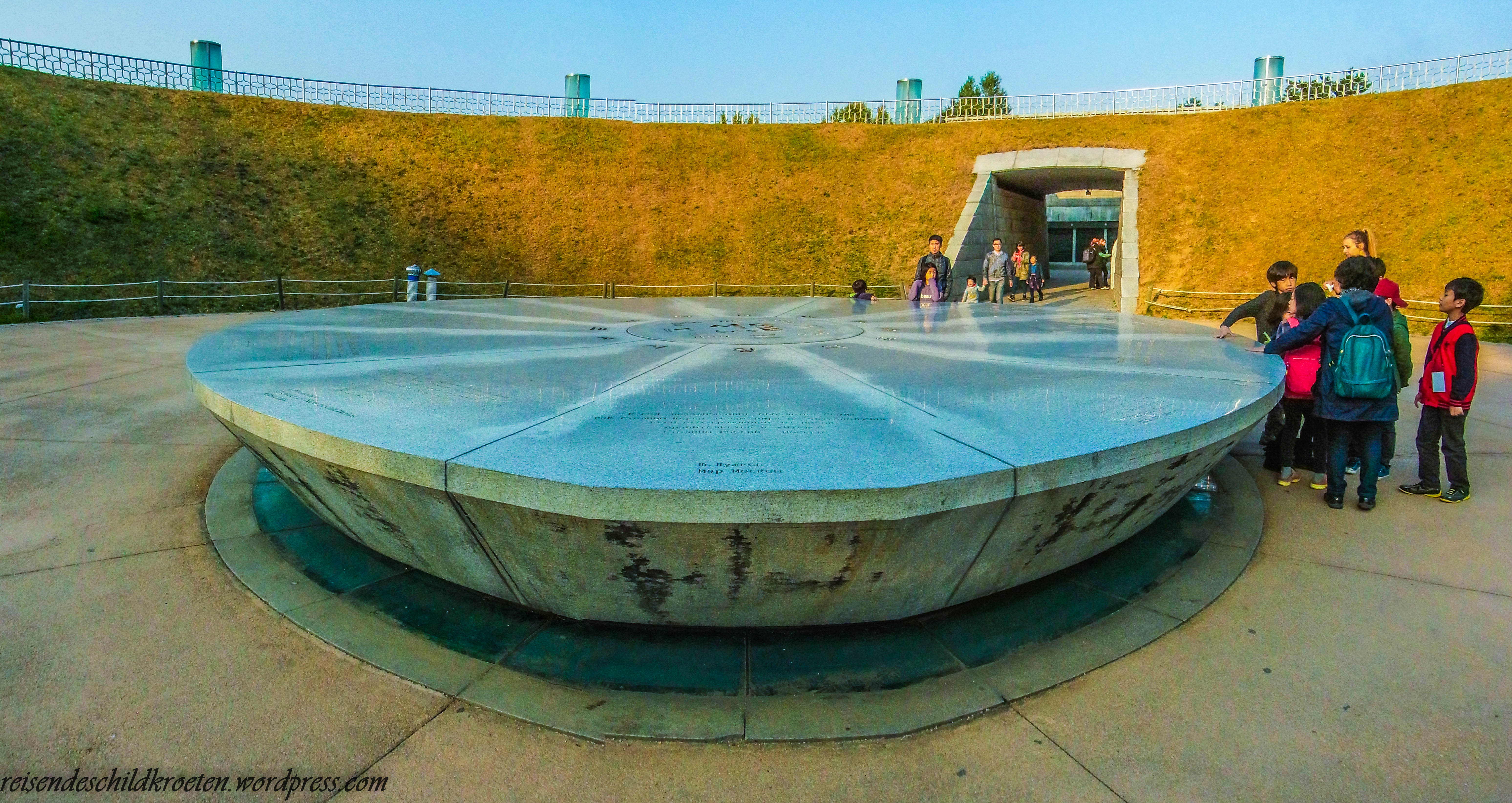 I can’t imagine the faces of the Korean people from the future when they see the technology from 1994…
I can’t imagine the faces of the Korean people from the future when they see the technology from 1994…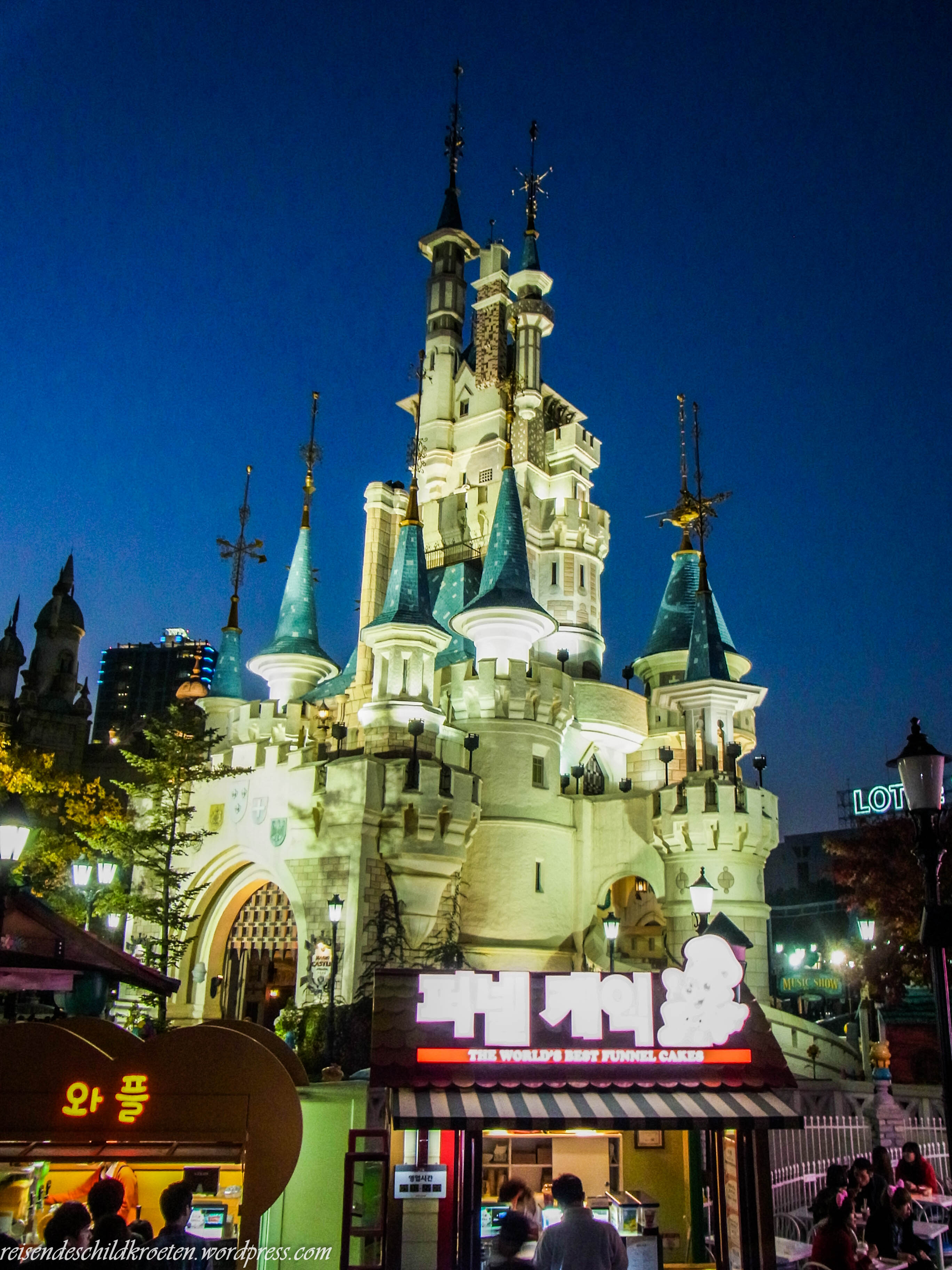 Looks familiar…
Looks familiar…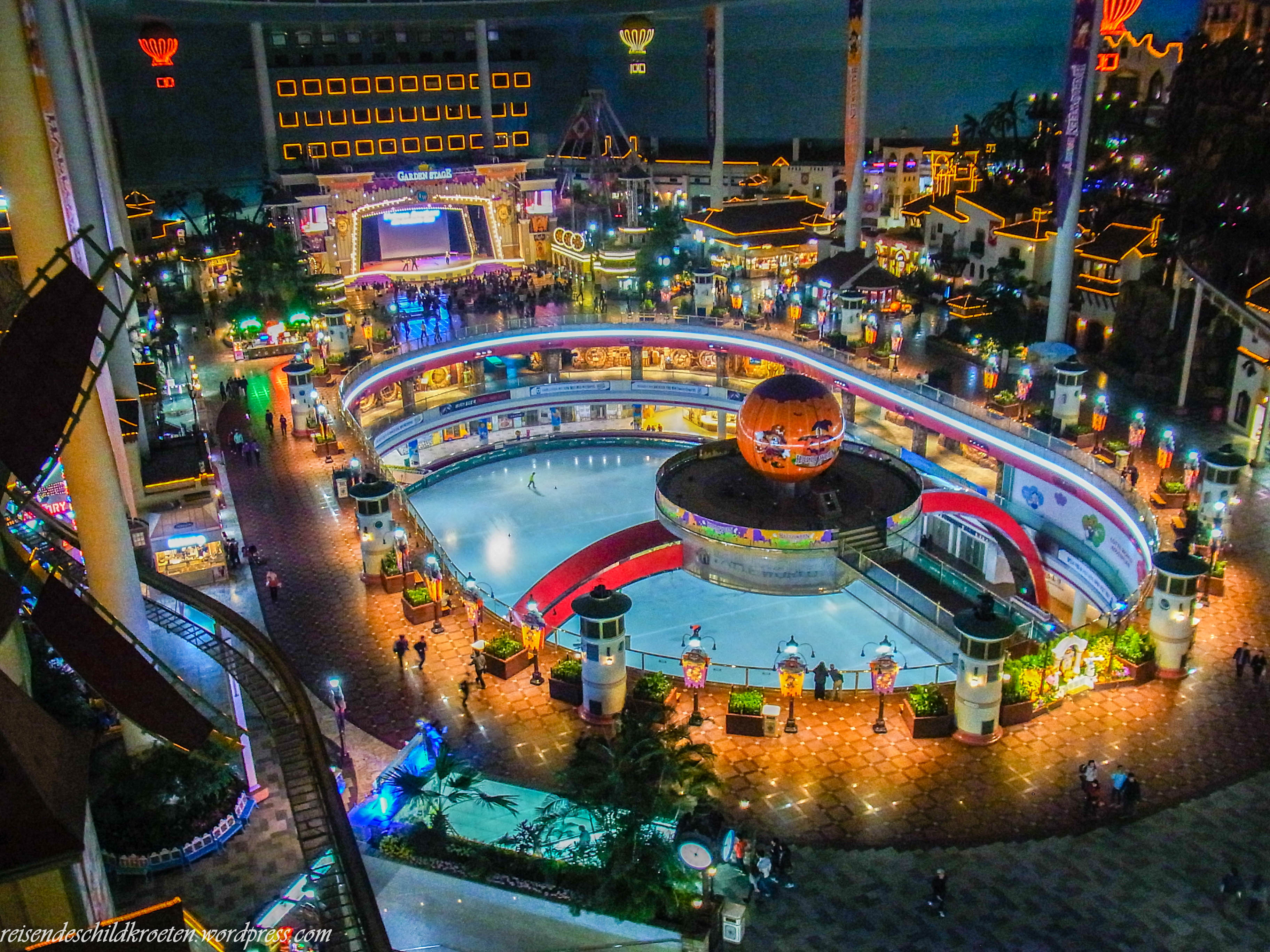 The indoor part from one of the “Air Balloons”
The indoor part from one of the “Air Balloons”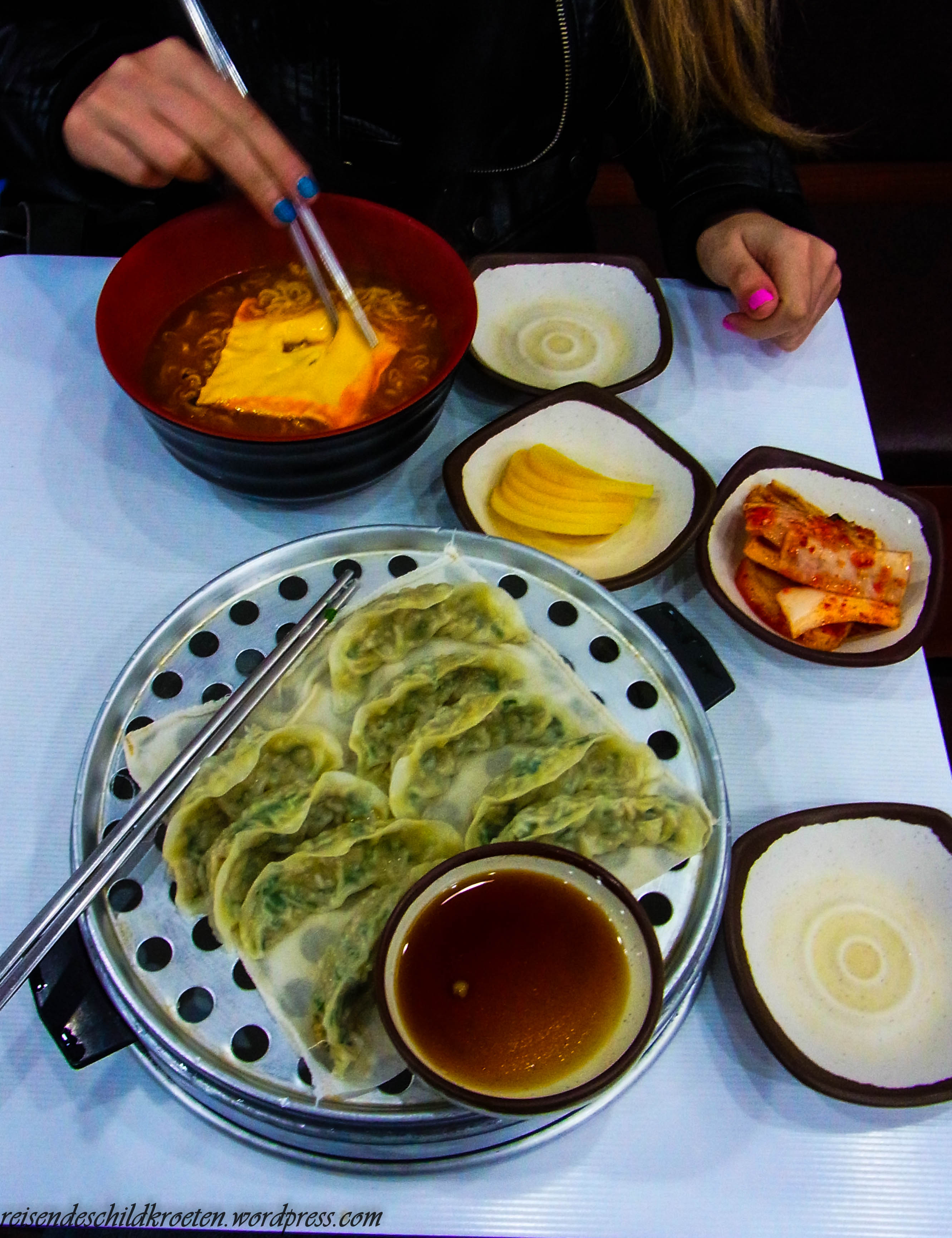 I got Ramyeon (noodles) and Kevin tons of Mandoo (dumplings)
I got Ramyeon (noodles) and Kevin tons of Mandoo (dumplings)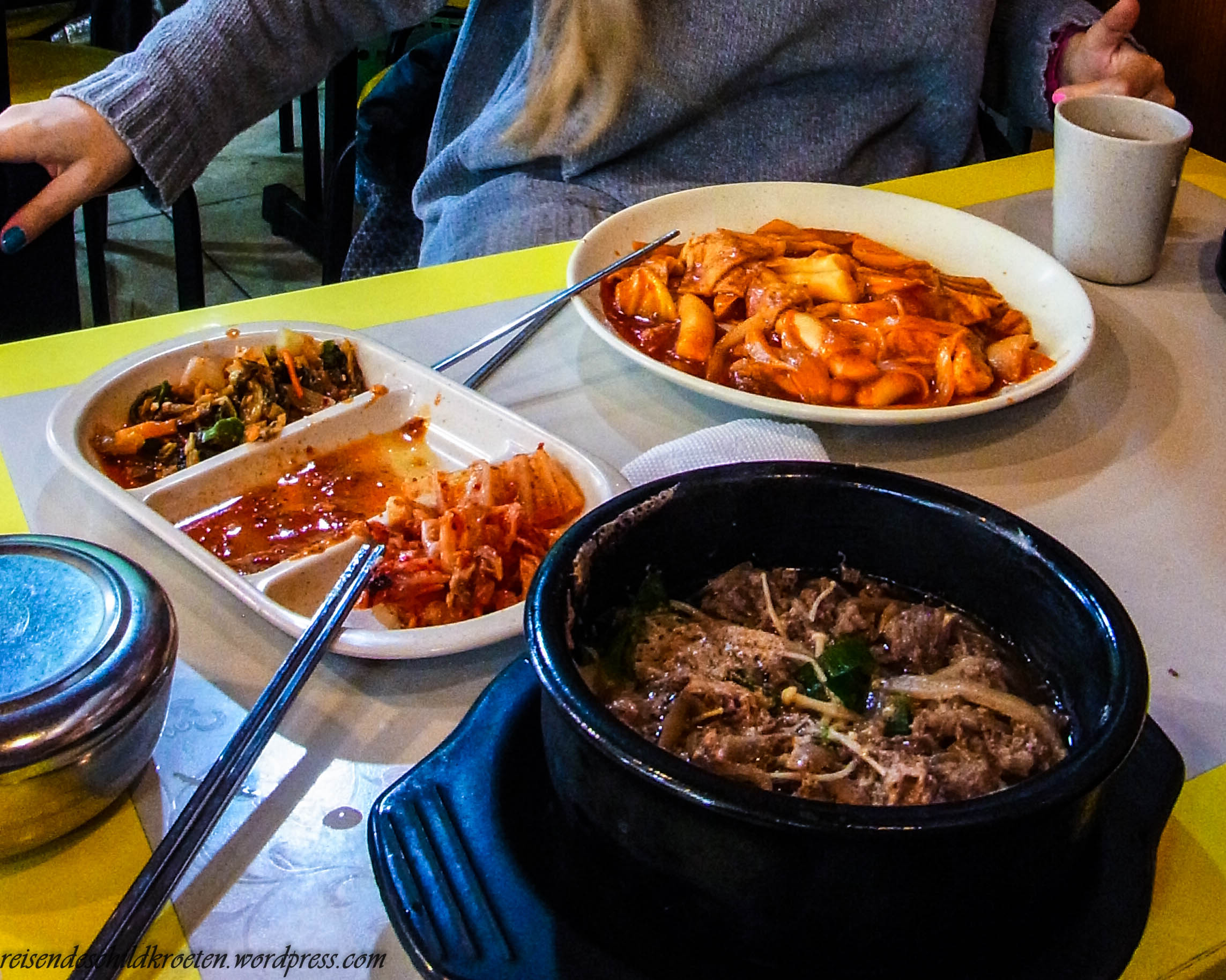 Saving energies for the rest of the day, the Tteokbokki (rice cake) were delicious and, like everything there, very spicy
Saving energies for the rest of the day, the Tteokbokki (rice cake) were delicious and, like everything there, very spicy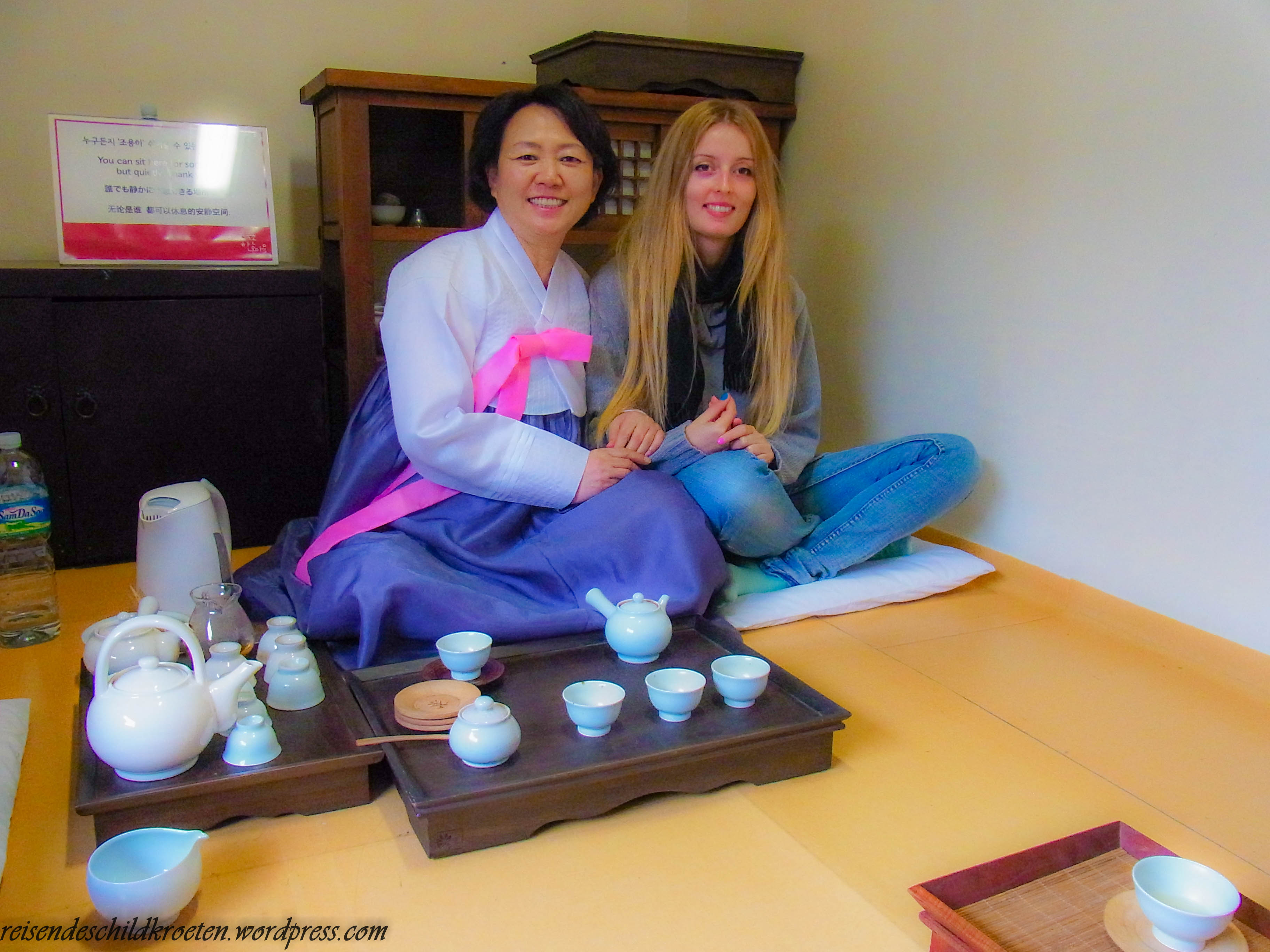 Our amazing teacher
Our amazing teacher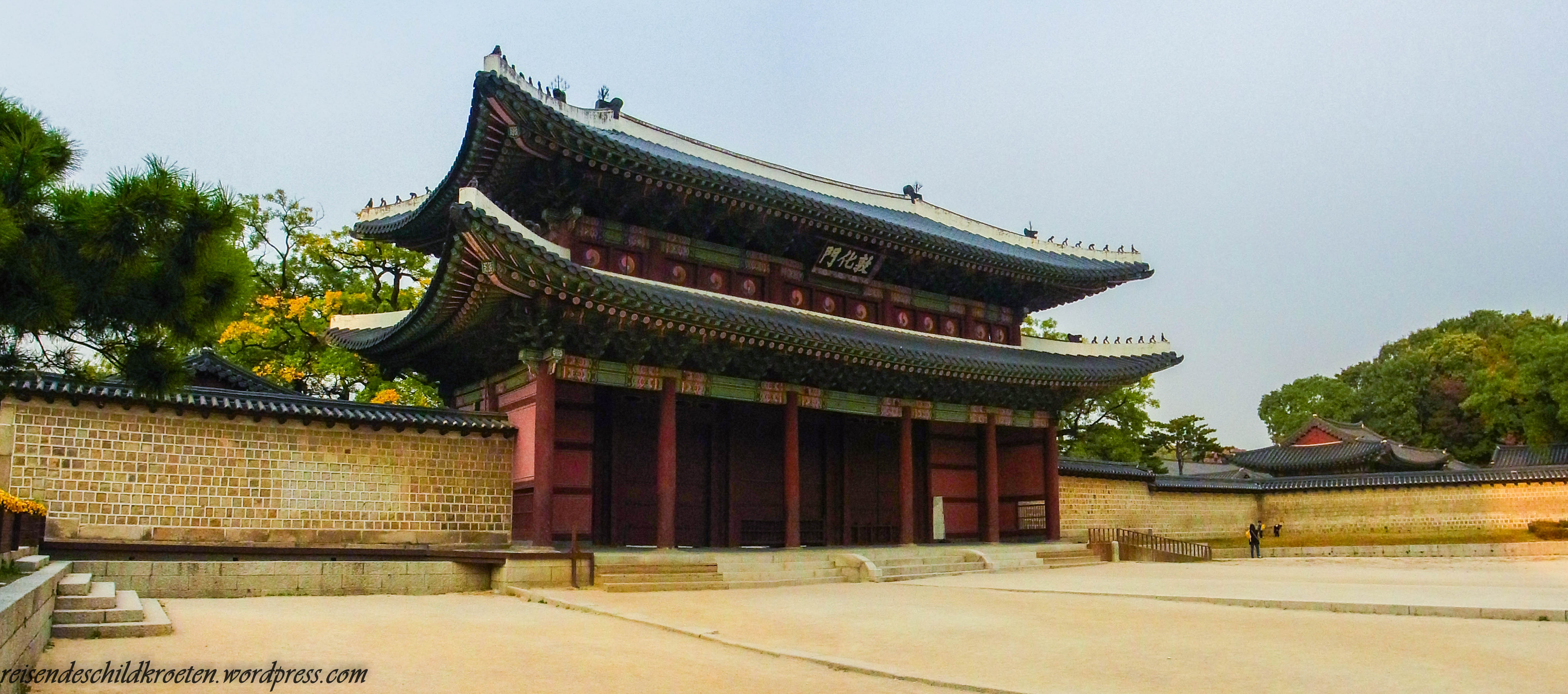
 korean wedding
korean wedding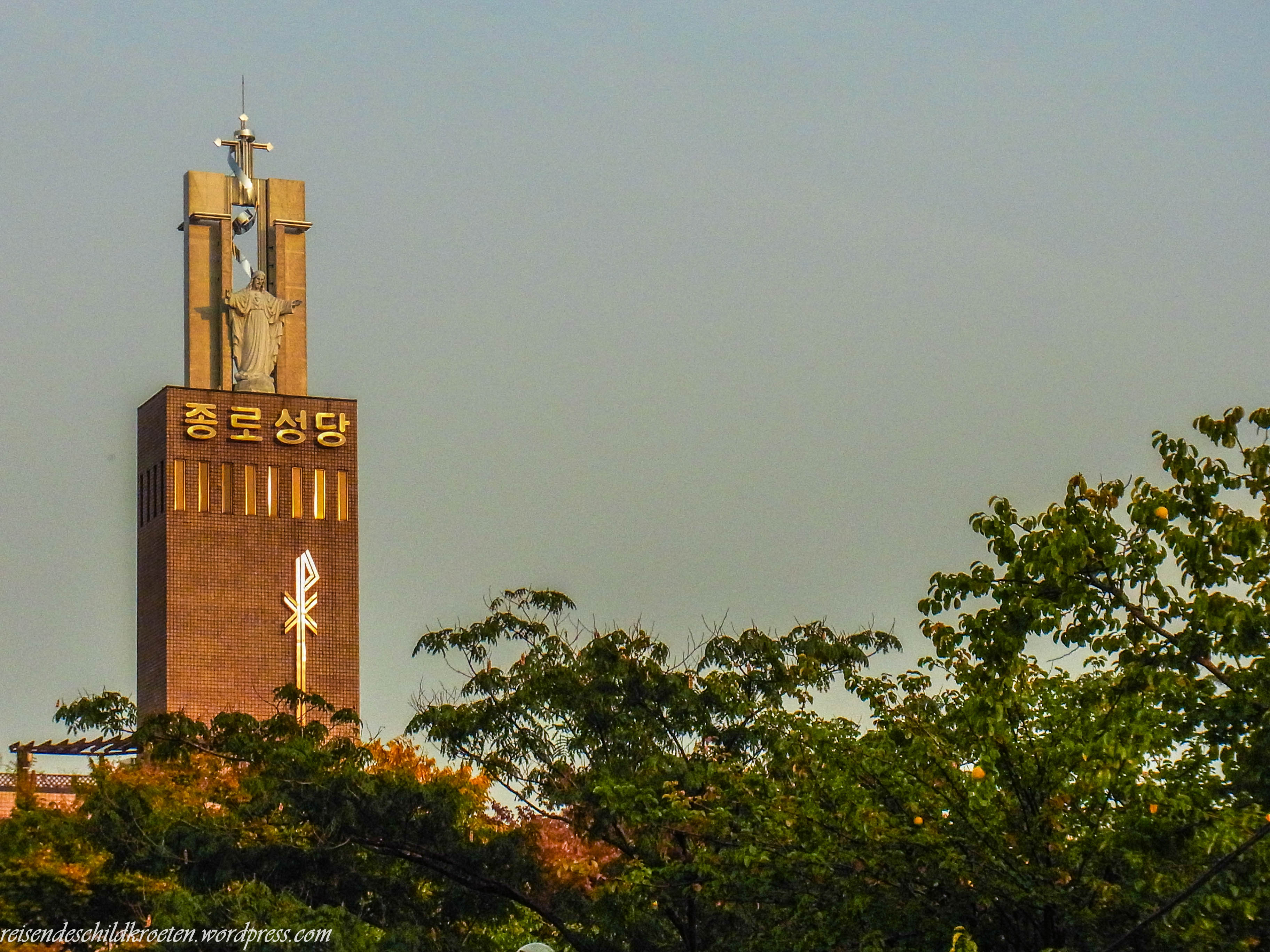


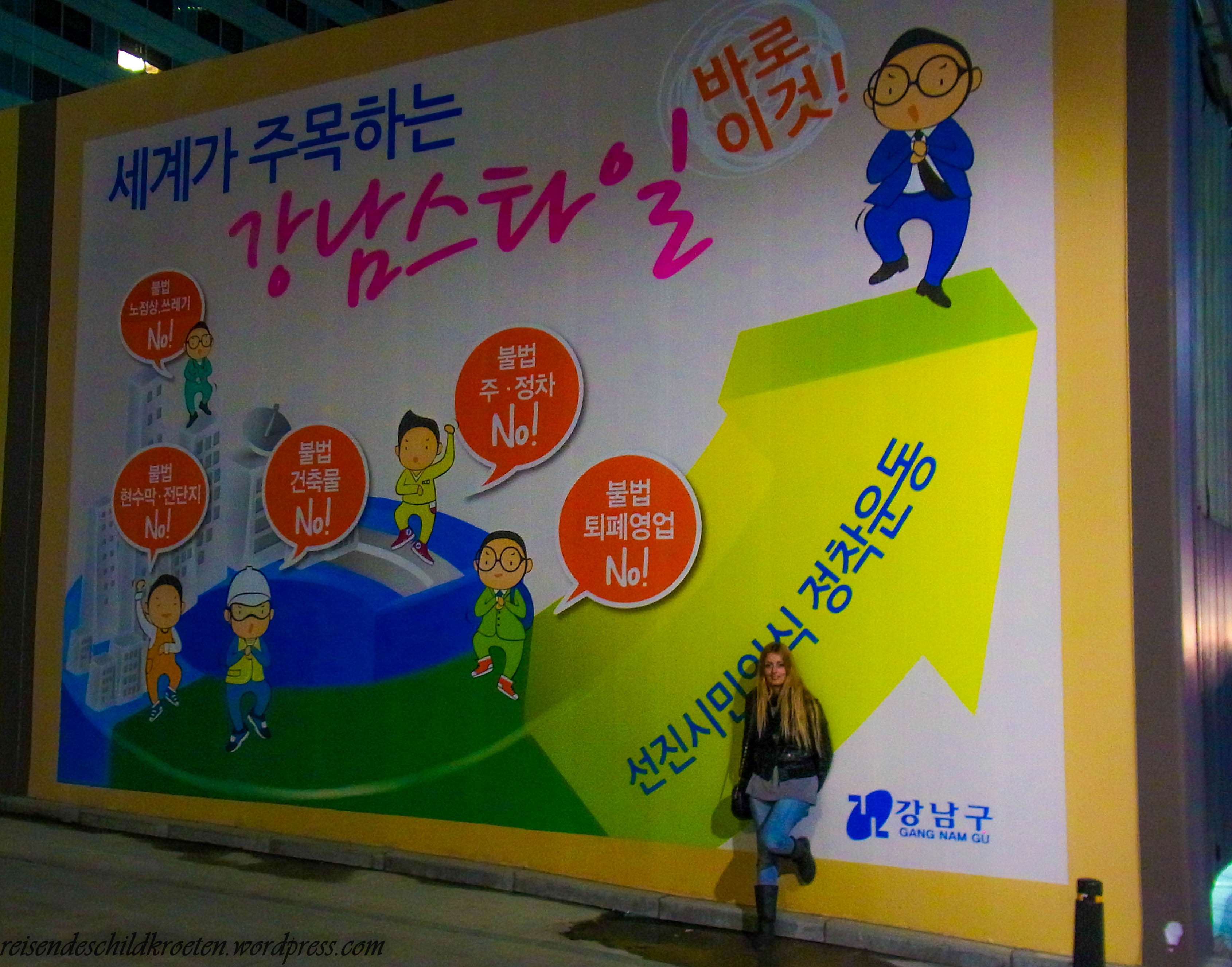 oppa gangnam style!
oppa gangnam style!

